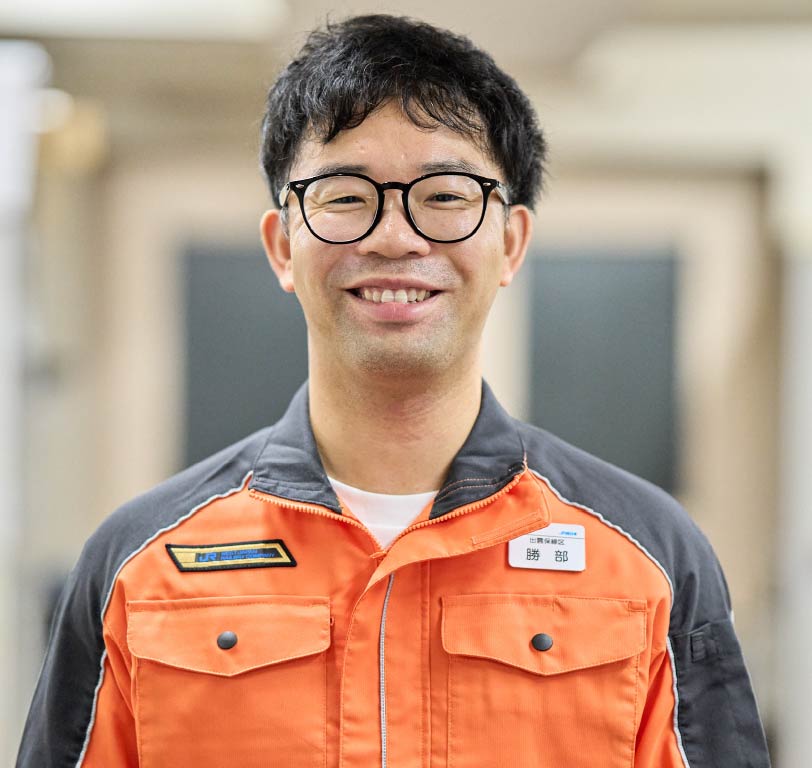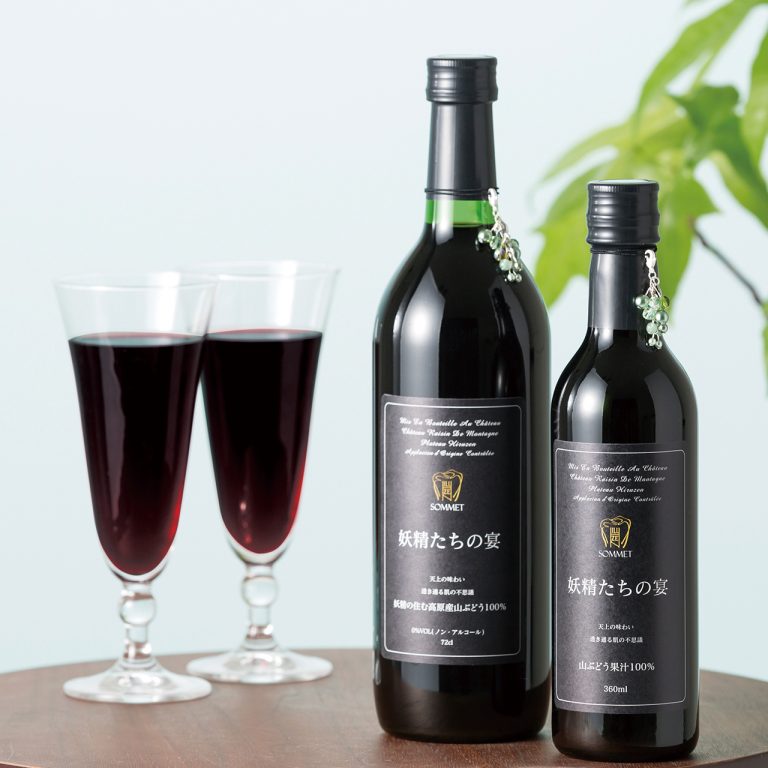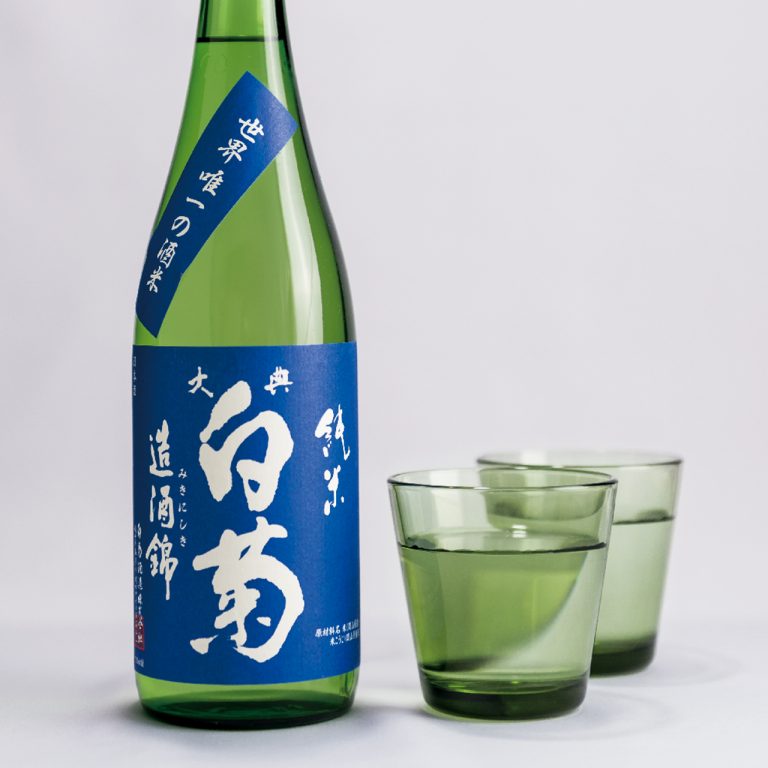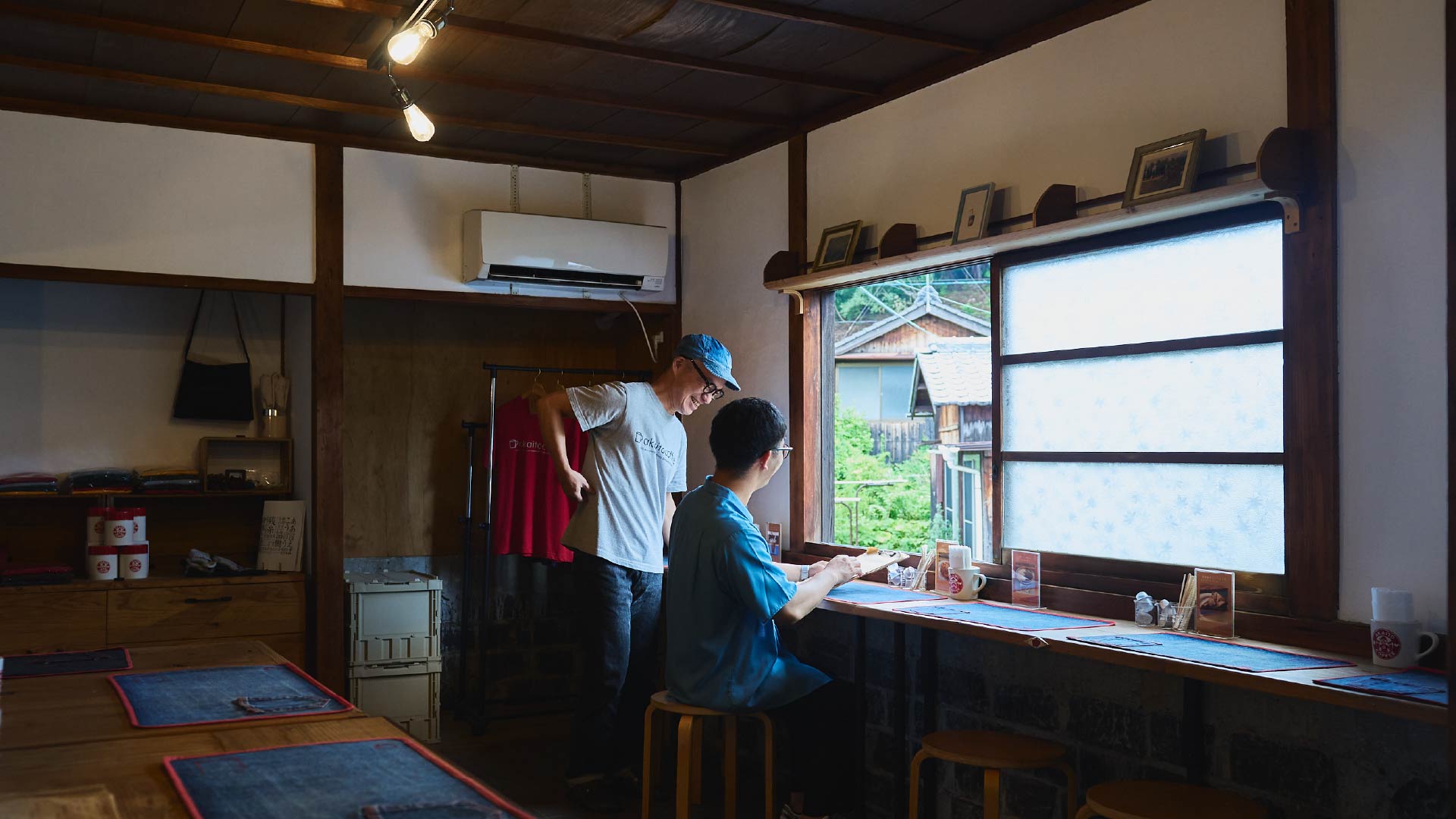
Okayama Station
MAGAZINE
Explore the recommended model courses of
“Round Trip of SETOUCHI from Okayama Station.”
Akaito Coffee (Naoshima)
Okayama Station
Discover Something New –
A Setouchi Journey Full of Encounters
Setouchi Triennale 2025 – Summer Season Starts August 1st!
The Setouchi Triennale, a contemporary art festival held once every three years across the islands of the Seto Inland Sea, returns in 2025. The summer season begins on August 1st, offering a one-of-a-kind opportunity to experience art and nature in perfect harmony.
Visitors can explore beautiful island landscapes scattered across calm blue waters, while discovering site-specific artworks deeply rooted in local culture and history. It’s a special experience that can only be found here.
In addition to art, your island journey will be filled with local delights-taste fresh seasonal fruits nurtured by the region’s mild climate, enjoy dishes at unique local eateries, and uncover the rich charm of Setouchi through every stop along the way.
This trip highlights the Naoshima-Uno Port Course, one of the featured “Seto Inland Sea Tour Starting from Okayama Station” routes. From Okayama Station, ride the Uno Minato Line past Chayamachi Station to reach Uno Station (Uno Port). Then hop on a ferry to Naoshima – world-famous as a contemporary art island.
Our guide, Mr. Shinya Katsube, usually works in Shimane Prefecture but is spending July 2025 on a one-month “study abroad” placement at JR West’s Okayama Branch to assist with local revitalization projects.
“I usually work in Shimane Prefecture, so this was my first trip to the Seto Inland Sea. I hope people will enjoy not only the spots on the model course I’m introducing, but also the conversations they have with people they meet along the way. I want many people to experience the charm of the Seto Inland Sea,” Katsube says.
Naoshima/Uno Port Course
- Episode 1: Okayama Station to Uno Station
A journey into the hidden charms of Okayama and the Seto Inland Sea. > - Episode 2: Tamano Tourist Information Center
A port town where history meets modern life. > - Episode 3: Omachido Main Store
Taste the summer fruits of Okayama, known as Japan’s fruit kingdom. > - Episode 4: Osaka-ya Restaurant
Enjoy a rich, homely meal at a beloved local eatery. > - Episode 5: Shikoku Ferry
Leave the shore behind and take in panoramic views of the Seto Inland Sea. > - Episode 6: Akaito Coffee
Watching over Naoshima’s changes, one thoughtful cup at a time. > - Episode 7: Asahi-ken
An unchanged taste, friendly smiles, and a dining tradition that lasts. >
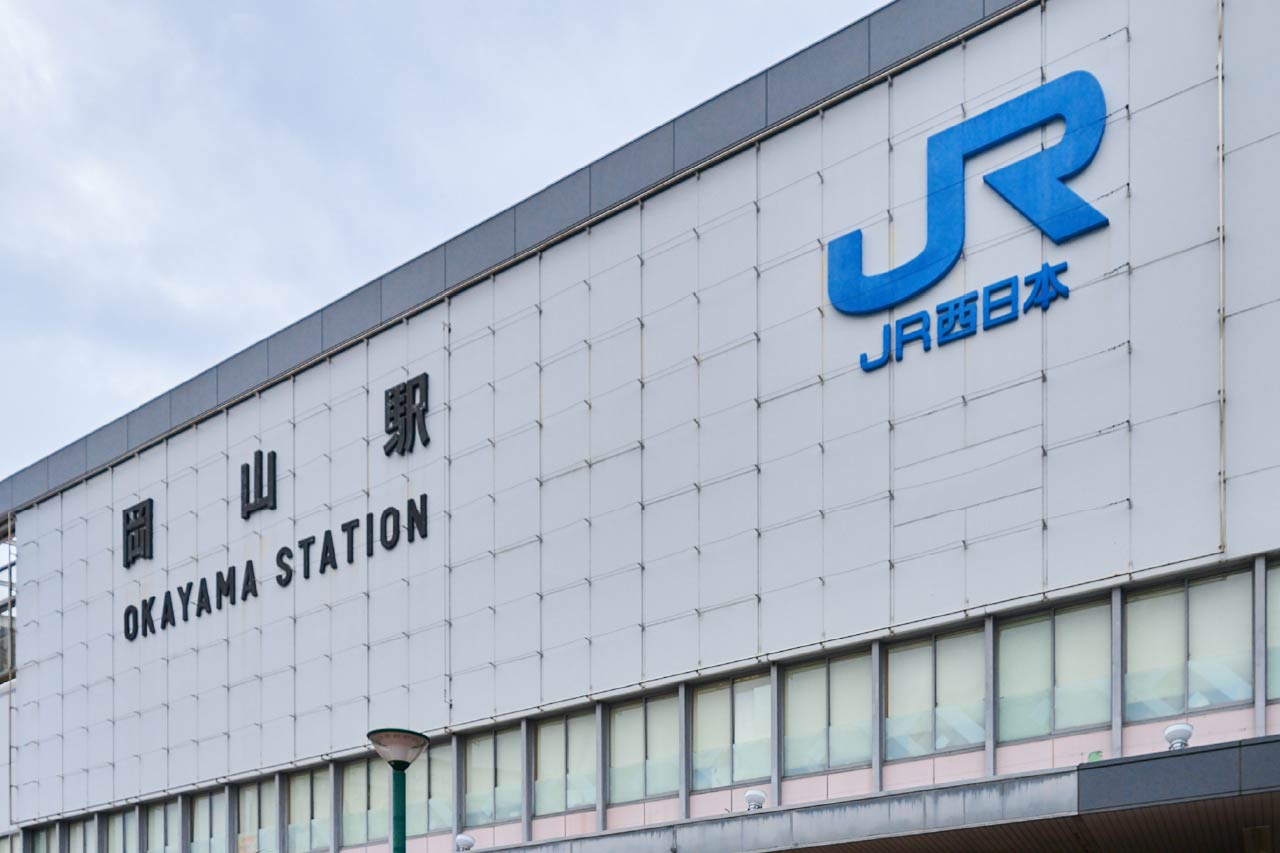
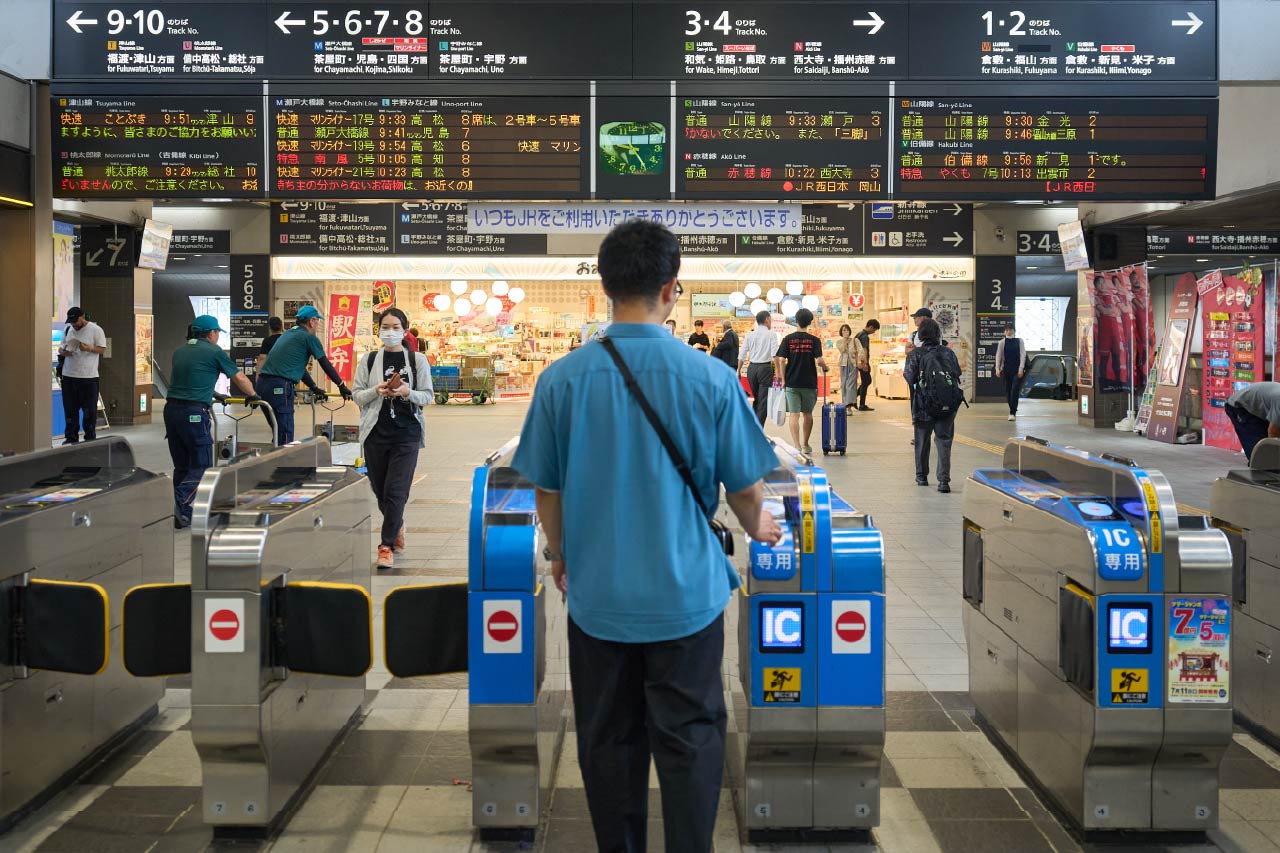

A journey to discover the hidden charms of Okayama and Setouchi
Although Mr. Shinya Katsube is no stranger to Okayama, his earlier time here was very different. When he first joined West Japan Railway Company, he trained at a center in Okayama Prefecture for five months – but back then, his days were filled with commuting between the dormitory and work. Sightseeing, including exploring the Seto Inland Sea, was just a dream.
This time, however, is different. Mr. Katsube set out on a true adventure through Okayama and the Setouchi area, determined to experience its charm with his own eyes and make memories beyond his past work-related visits.
Before departure, he stopped by Omiyage Kaido Sansute Okayama on the second floor of Sansute Okayama’s South Wing – a shopping spot directly connected to Okayama Station. As “travel snacks,” he picked up Okayama-grown Shine Muscat grapes and Okayama Nori Ten (Plain) seaweed crisps. These tasty companions, bursting with the flavors of Okayama, would make the perfect start to his trip.
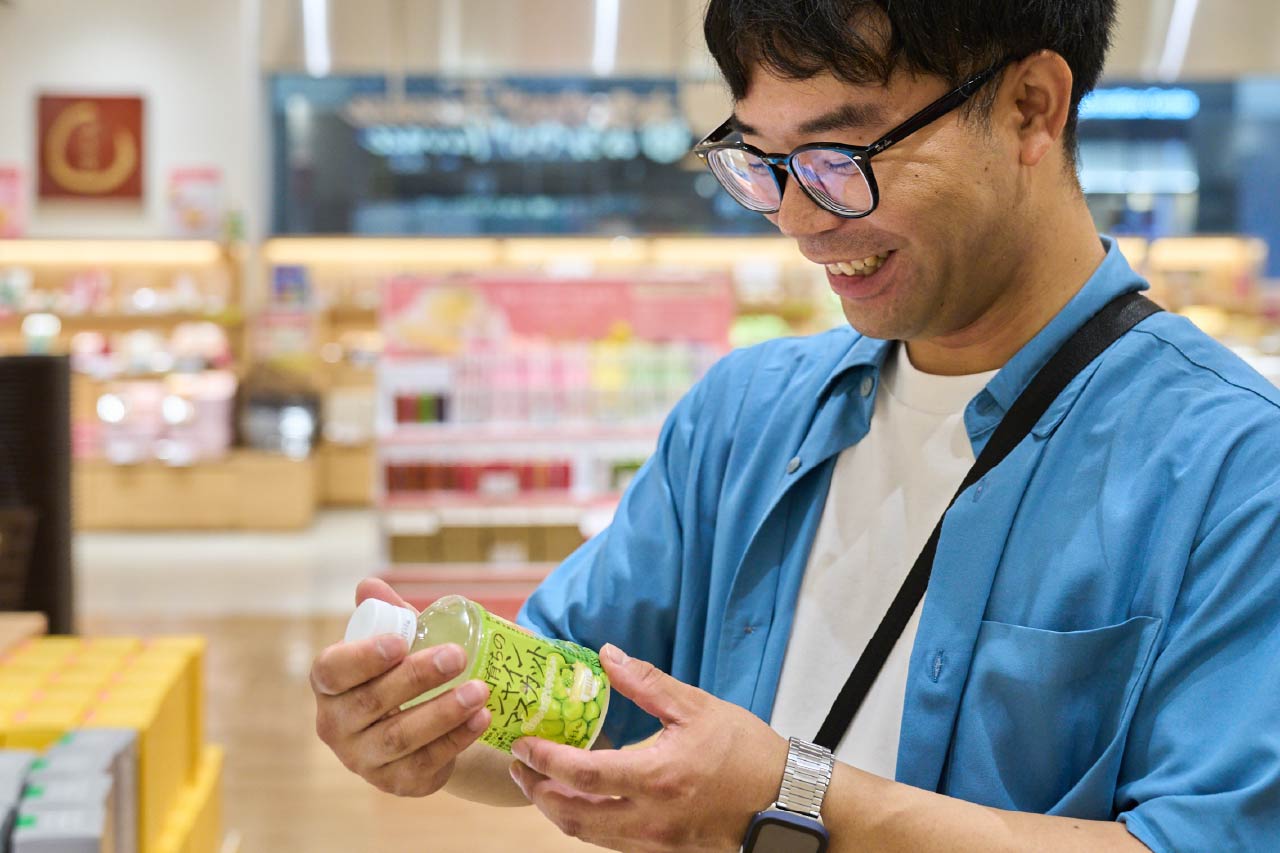
JR PREMIUM SELECT SETOUCHI Setouchi Fruits Soft Drinks “Shine Muscat Grapes Grown in Fruit Kingdom Okayama”
Made with Shine Muscat grapes from Okayama, which are in peak season from July to September. Their elegant aroma and refreshing taste provide the perfect way to quench your thirst.
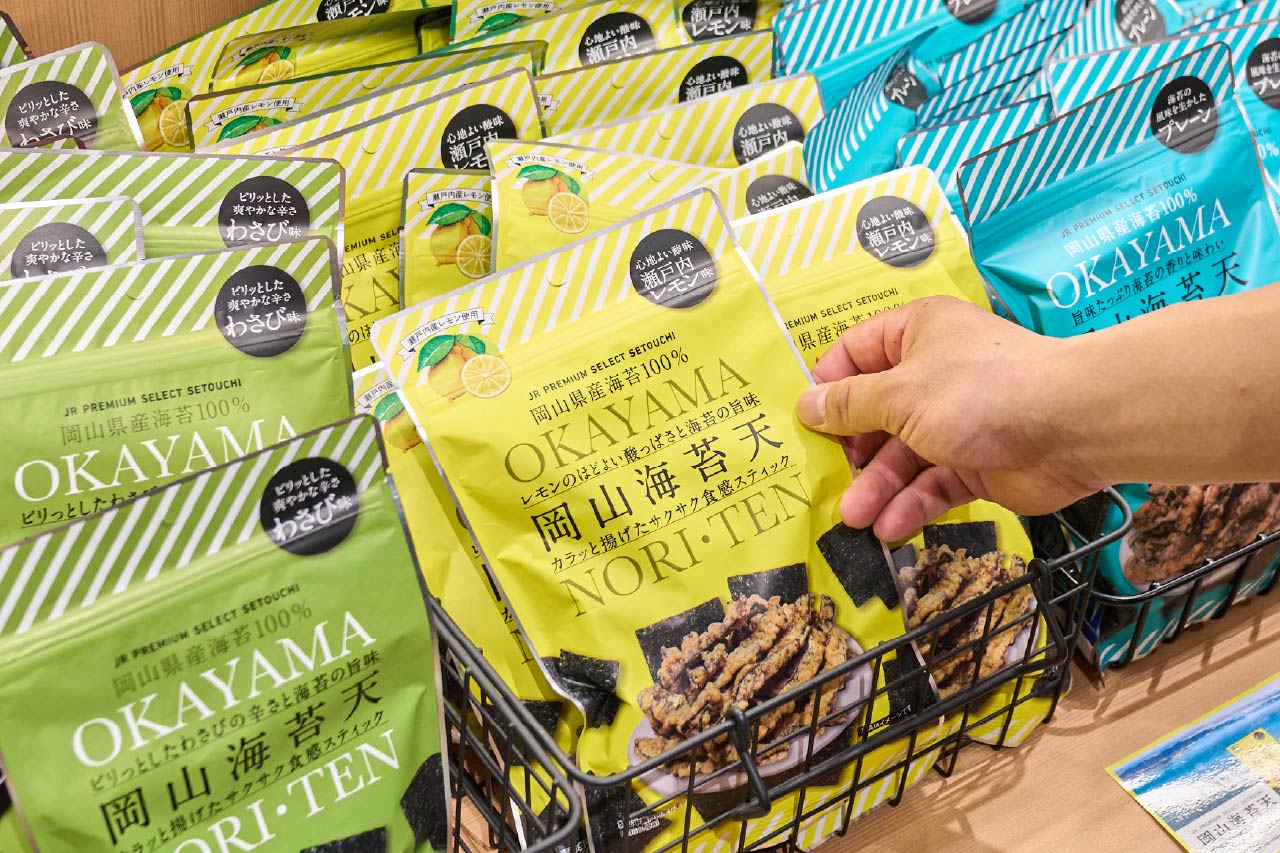
JR PREMIUM SELECT SETOUCHI Okayama Nori Ten
“The crispy texture is so good, you can’t stop eating it,” says Mr. Katsube. Made from high-quality Okayama seaweed with a deep color and rich flavor, these stick-type snacks also come in wasabi and Setouchi lemon flavors for a refreshing twist.
From Okayama Station, take the Seto Ohashi Line, and transfer at Chayamachi Station, then head for Uno Station. Chayamachi itself was built on reclaimed land during the Edo period and still retains an orderly rural charm. In July, when the rainy season has ended, the train windows frame a patchwork of green rice paddies and colorful countryside scenes – a peaceful, heartwarming start to the journey.
“The charm of traveling on local lines is that you can gradually get a feel for the scenery and lifestyle of each area as you visit each station,” says Mr. Katsube, smiling as he watches the landscape roll by. The train slowly drawing closer to the blue waters of the Seto Inland Sea.
*From Okayama Station to Uno Station, you can either take the direct Uno Minato Line or take the Seto Ohashi Line bound for Takamatsu, get off at Chayamachi Station, and transfer to the Uno Minato Line.
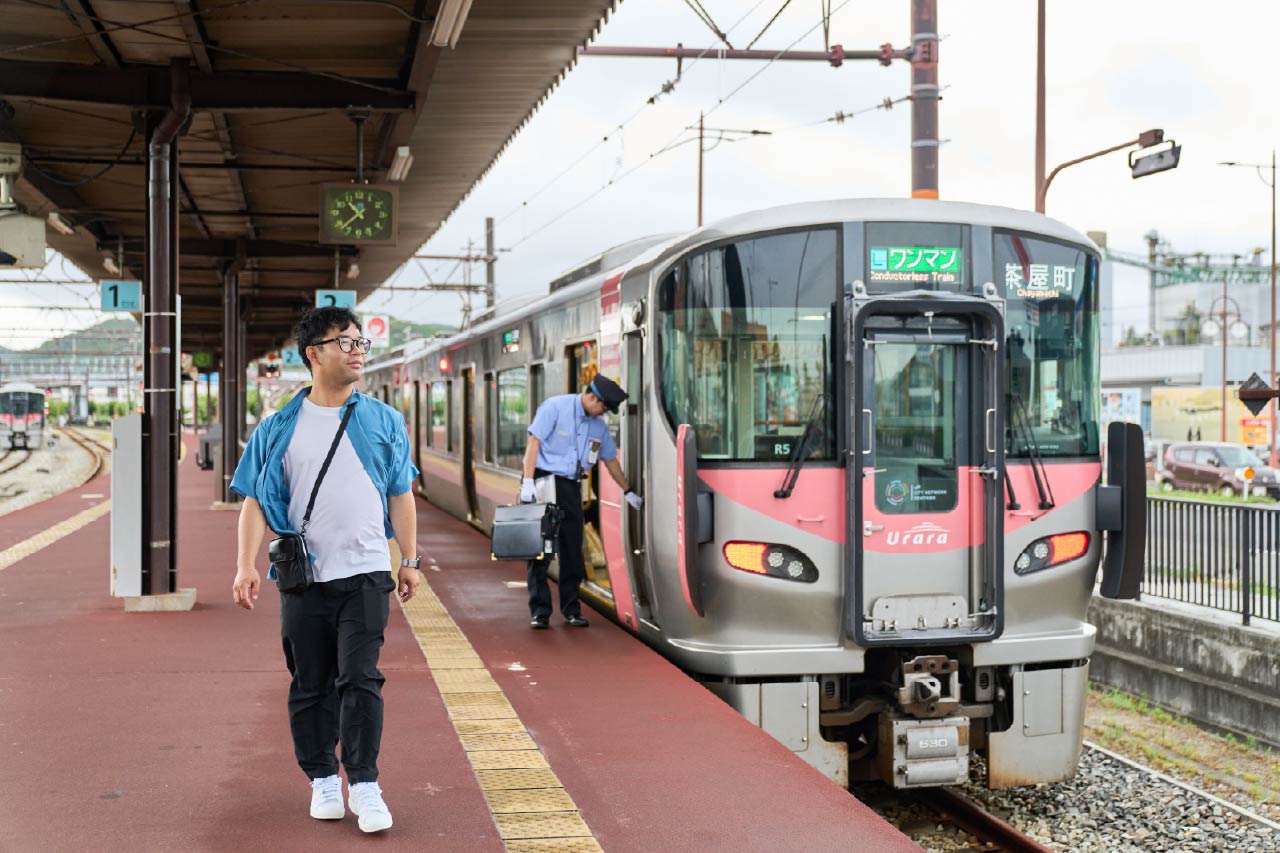
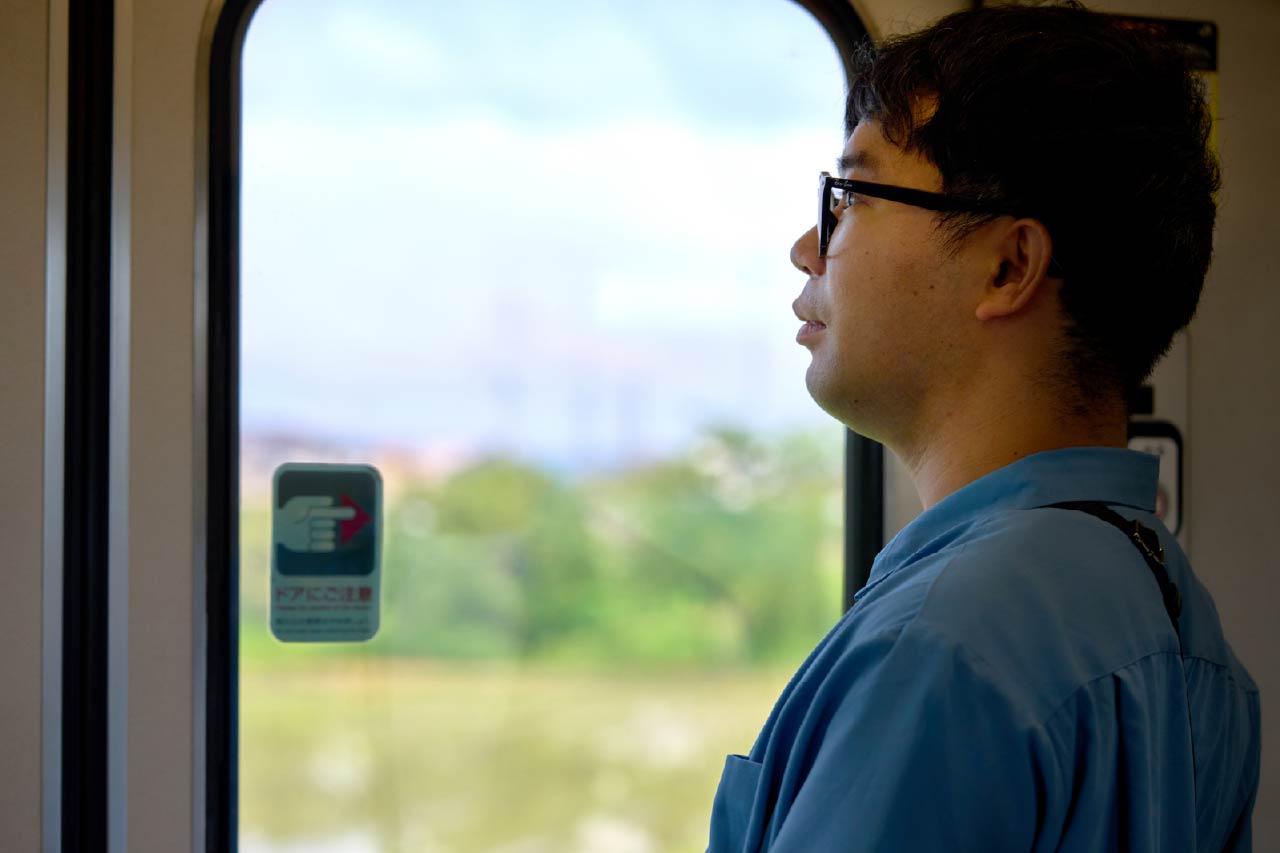
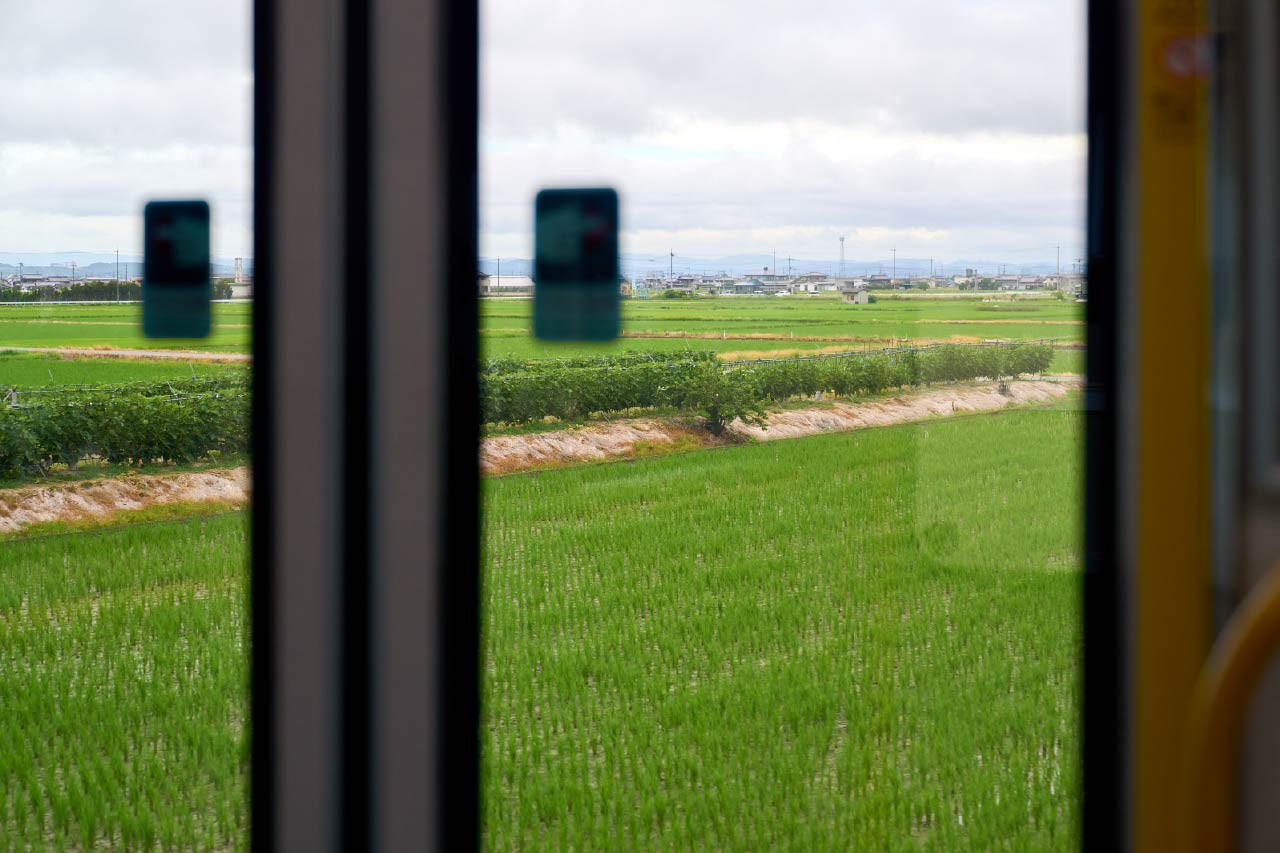
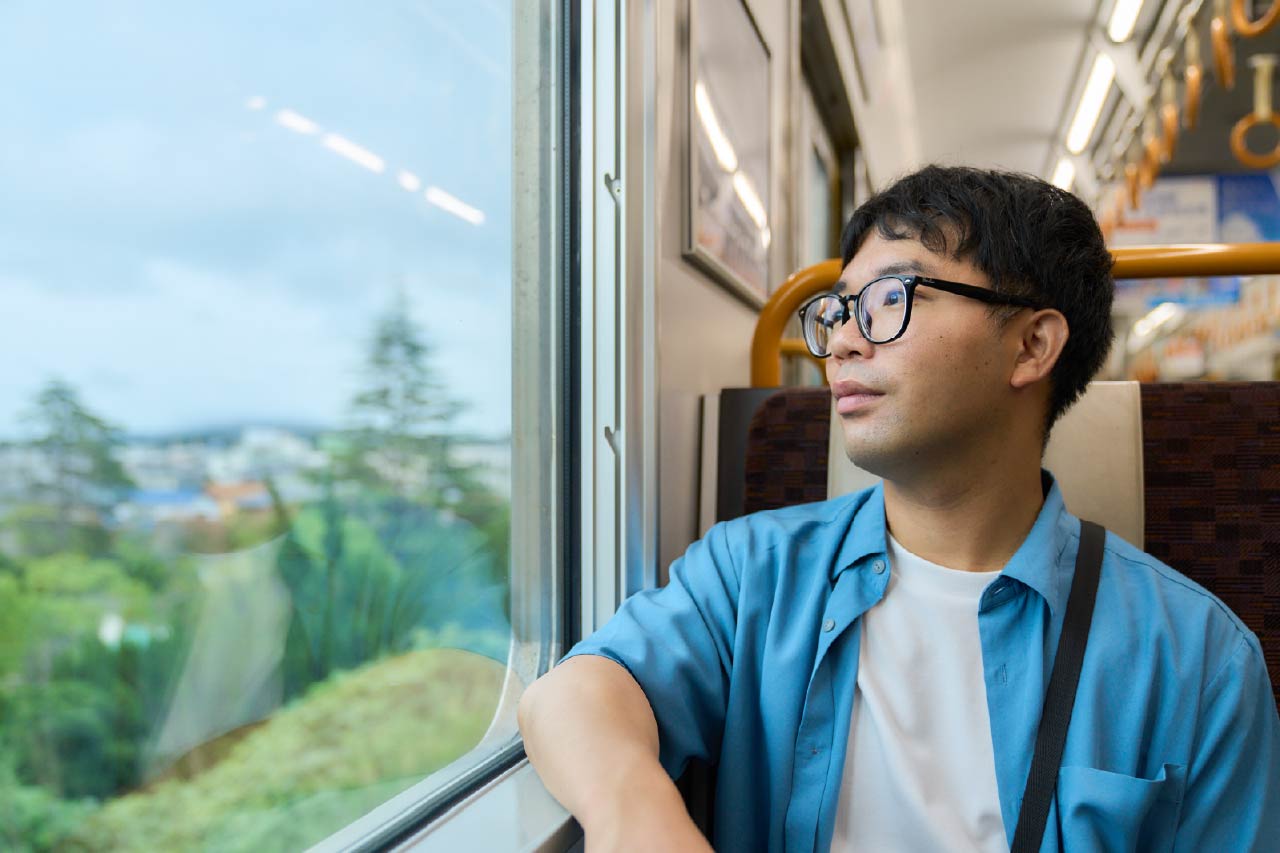
Through the Summer Window – Arrival in Uno
Mr. Katsube gazes out the train window, watching the summer landscape slide gently past – rippling rice fields, sleepy station platforms, and the occasional flash of the shimmering Seto Inland Sea. He’s no stranger to train journeys, often traveling from Shimane to the Kansai region to see his favorite artists live, but this trip is different. This time, the journey itself is the star.
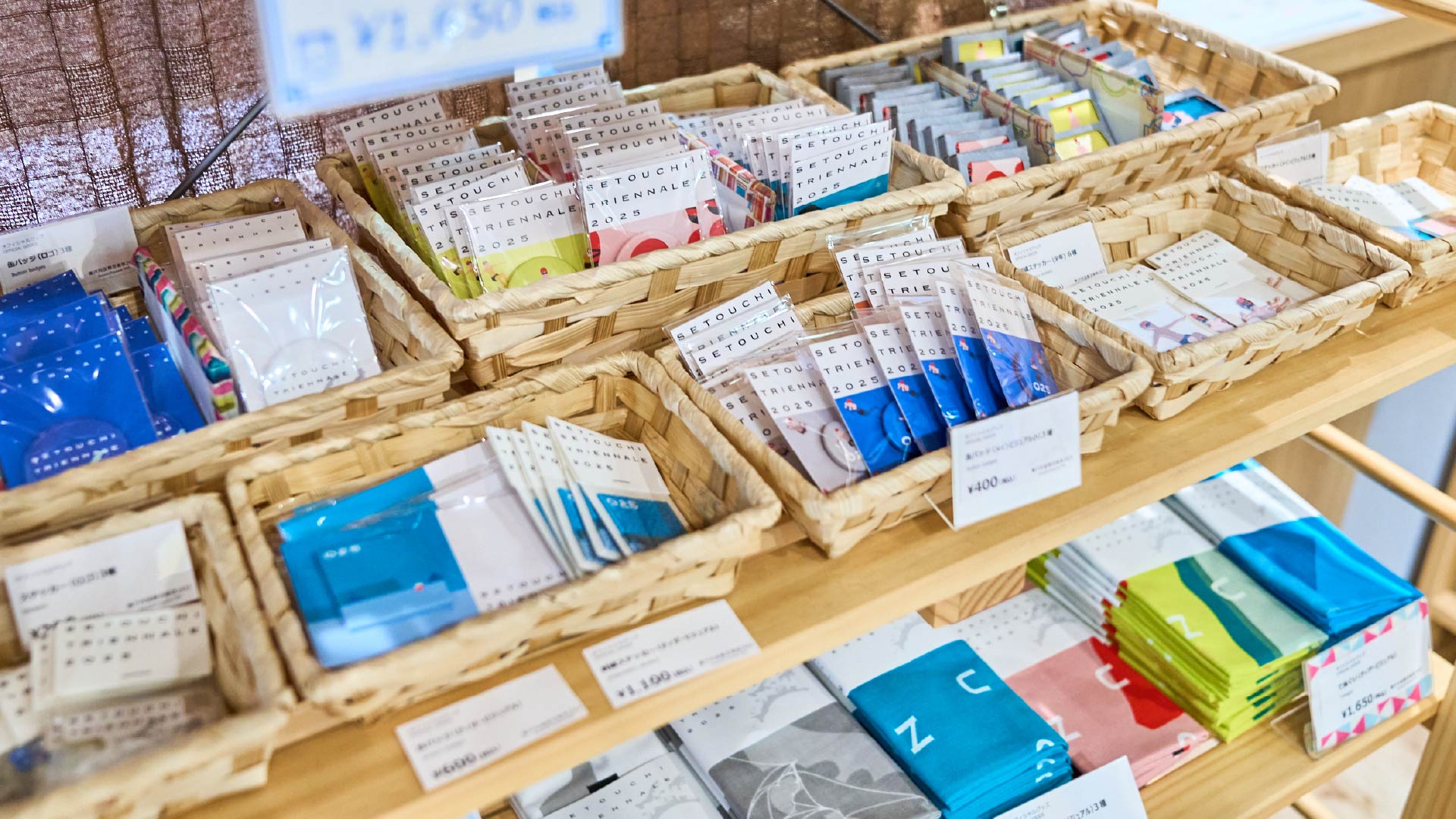
Where history and modernity intersect
The port town of Uno
Naoshima/Uno Port Course
Tamano Tourist Information Center
Arrival at Uno Station, the terminal station of the Uno Minato Line.
Nestled at the southern tip of Okayama Prefecture in Tamano City, Uno is a charming port town blessed with a mild climate and sweeping views of the Seto Inland Sea. Around the port, modern artworks share space with natural treasures such as Ojiyama Mountain, Shibukawa Coast, and Miyama Park – all perfect spots to connect with nature.
Right inside the station, the Tamano Tourist Information Center is paired with a cozy shop offering locally made specialities and select goods from surrounding areas. Our guide for this leg of the journey, Mr. Shin Sakai of the Tamano City Tourism Association, explains that every product is carefully chosen to reflect Tamano’s spirit.
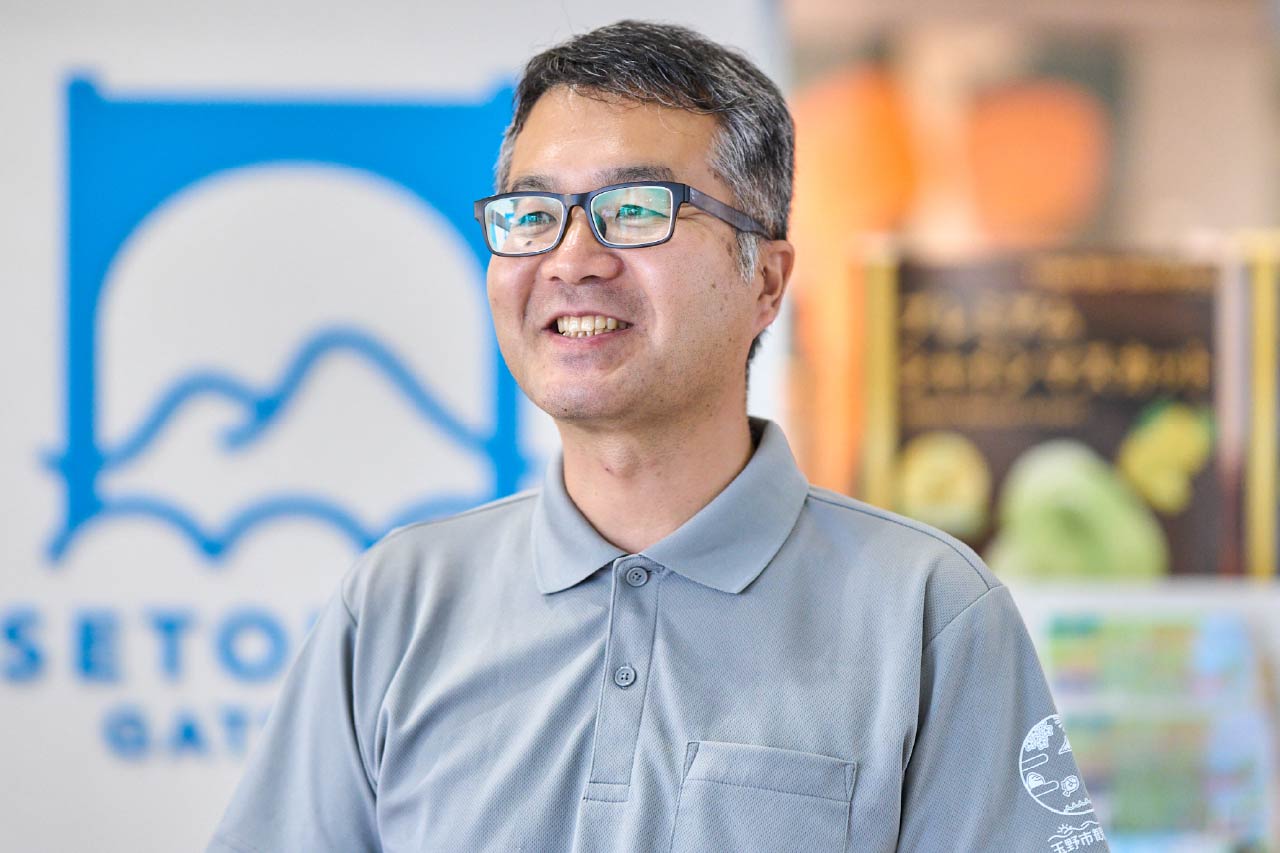
Shin Sakai from the Tamano City Tourist Association
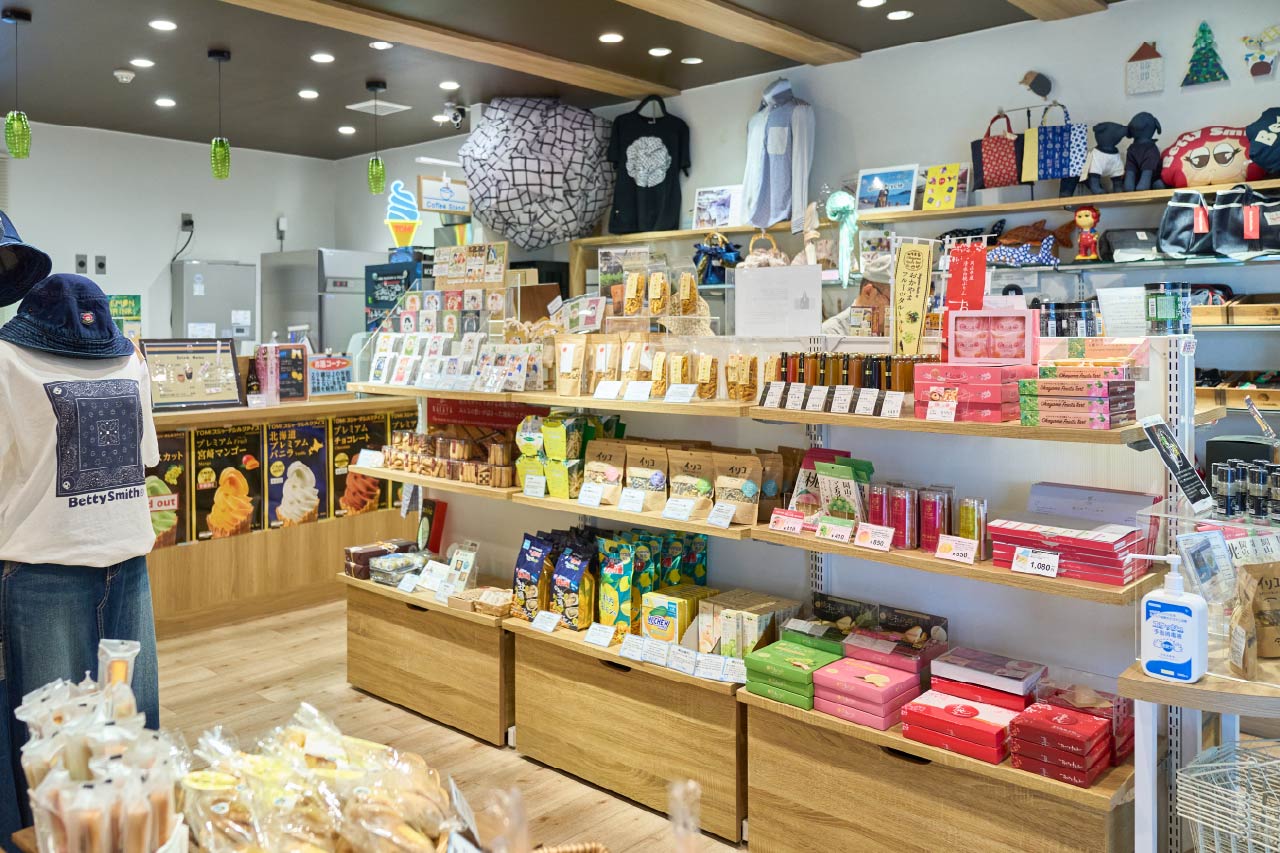
In recent years, Tamano has become known for its lemon cultivation, and shelves here are lined with refreshing lemon-based sweets and seasonings.
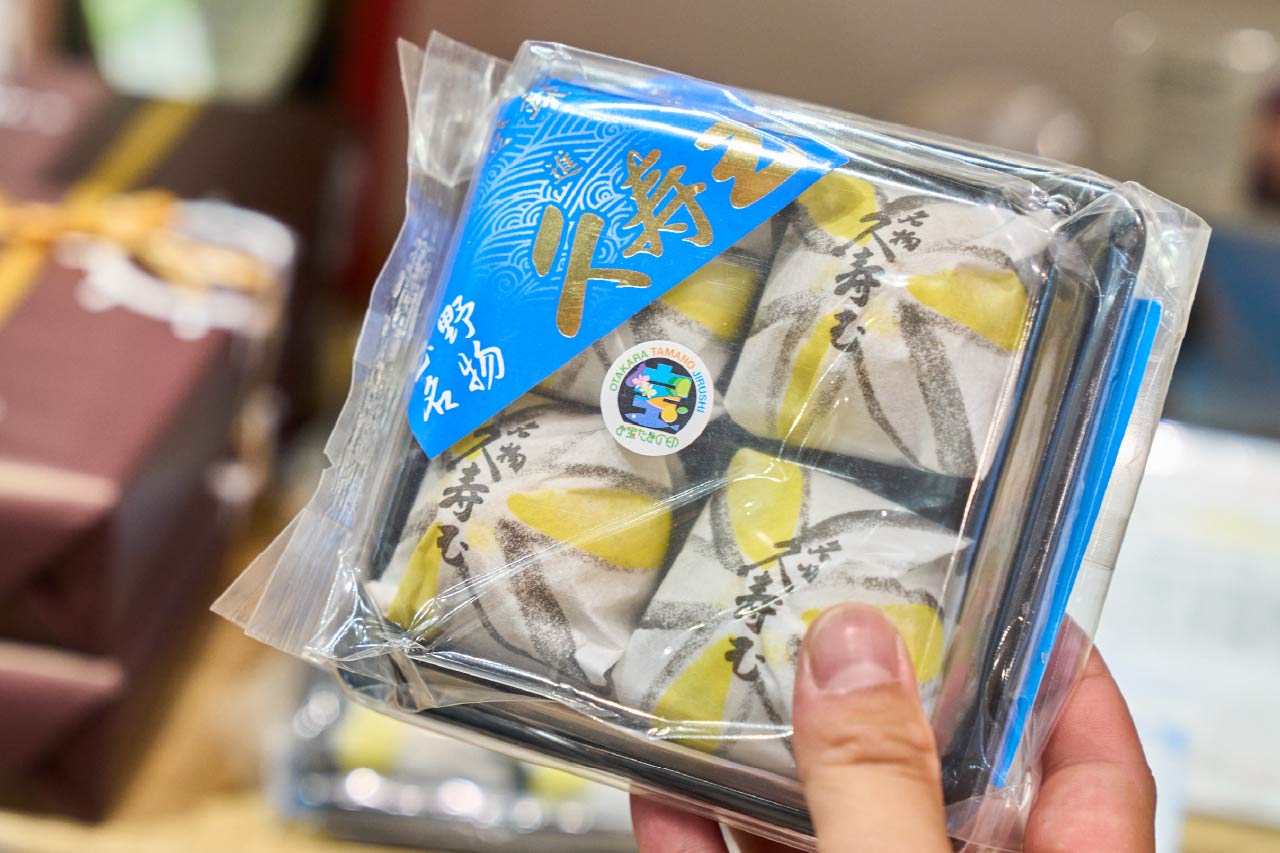
One standout is the Shinsui Kusudama, a soft mochi inspired by ceremonial balls used in ship launchings at Uno Port. Inside, a blend of red bean and white bean paste is subtly flavored with local seaweed – a nod to Tamano’s rich shipbuilding history.
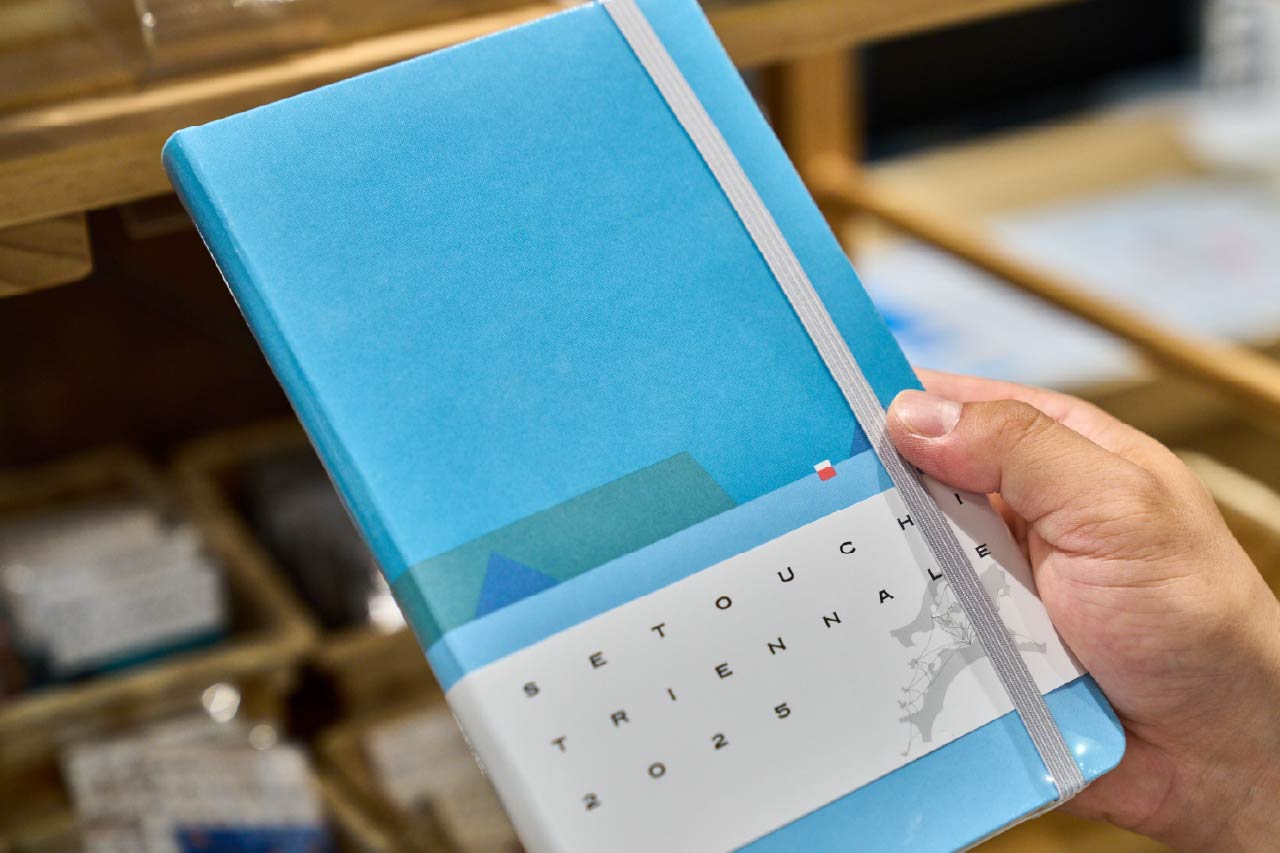
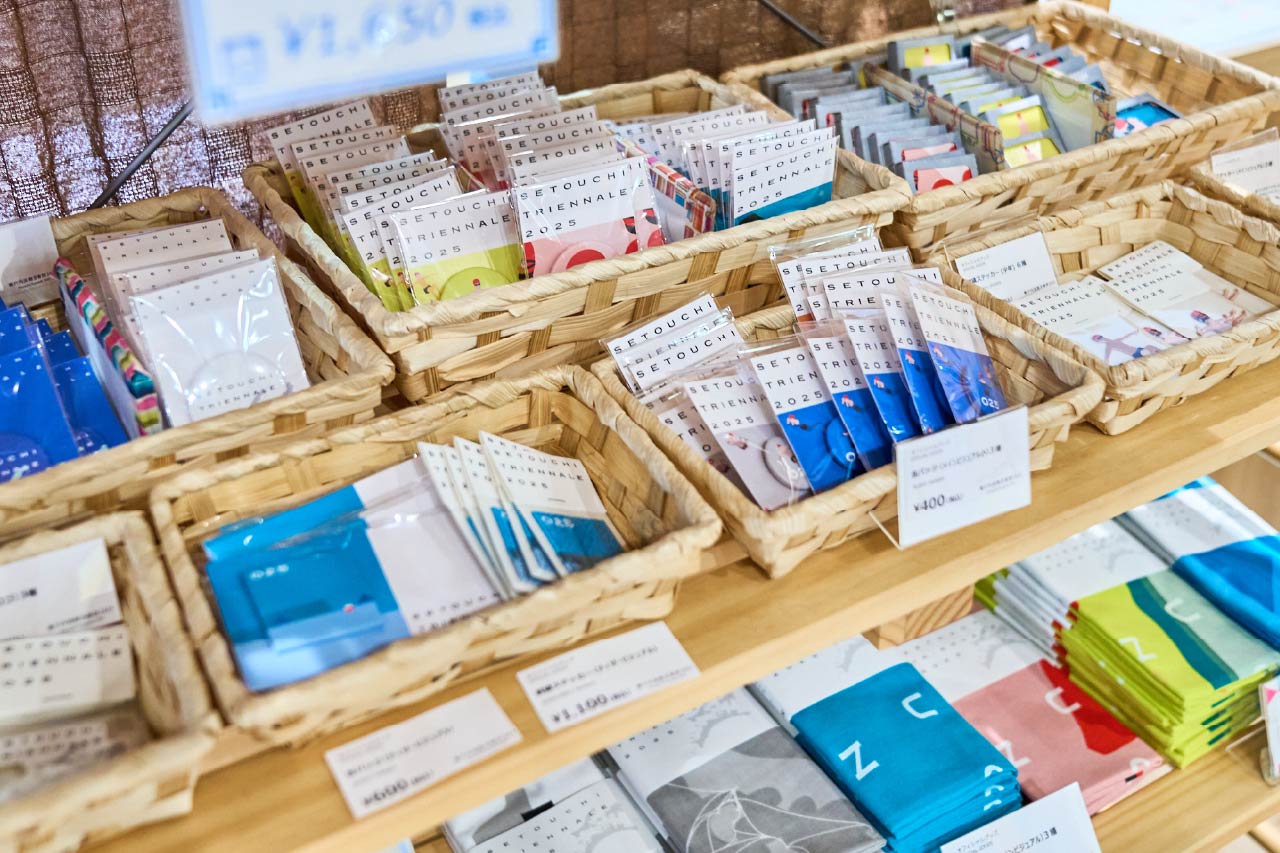
Official merchandise will also be available to buy throughout the Setouchi Triennale 2025, perfect for commemorating your visit!
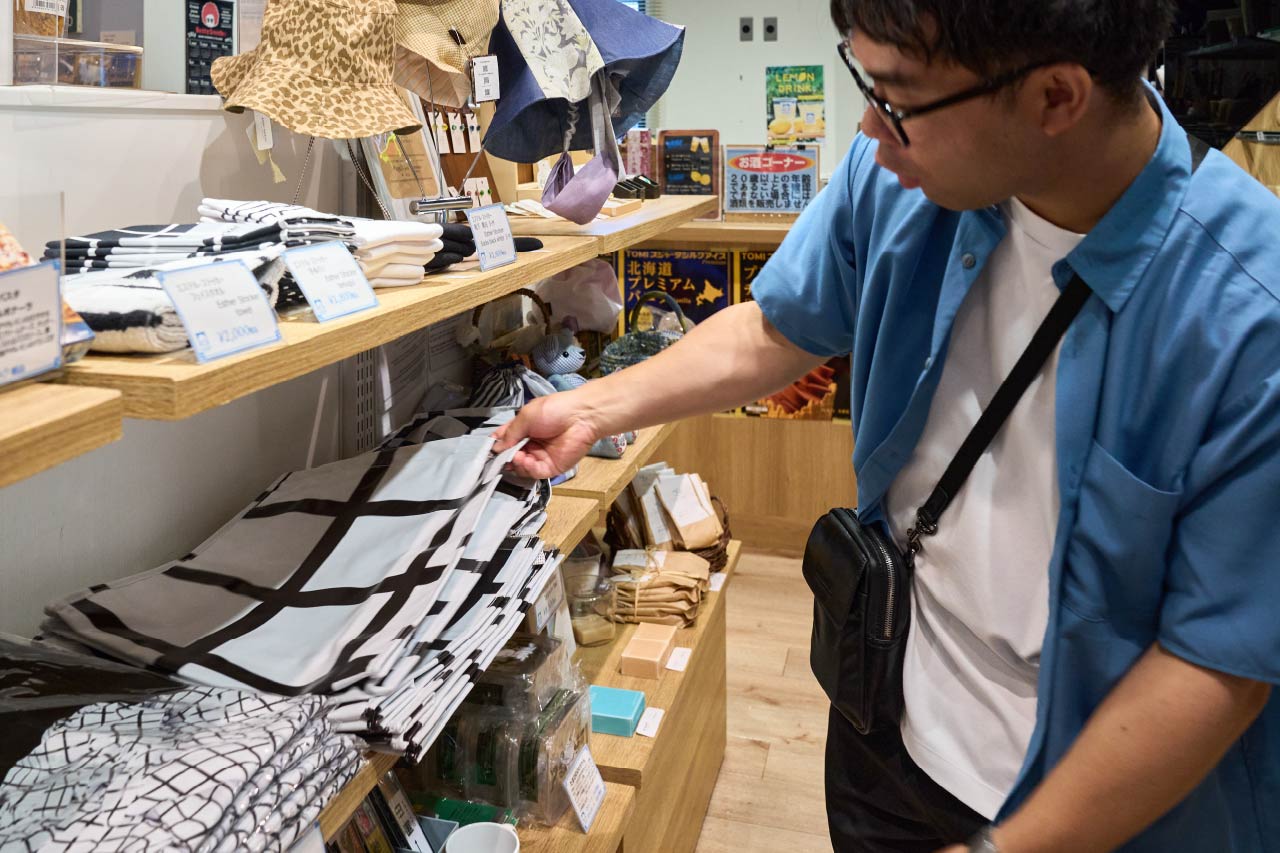
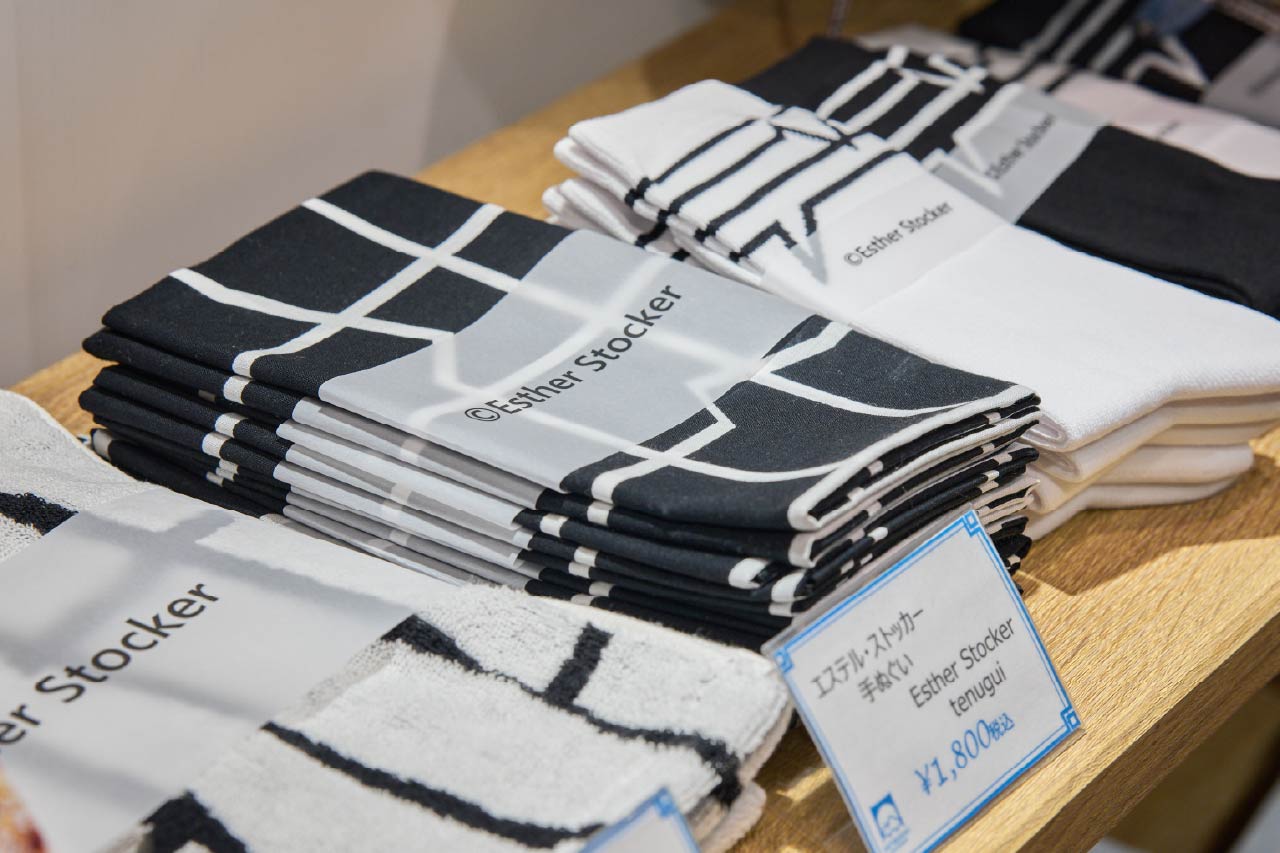
Art lovers will also enjoy goods from Esther Stocker’s JR Uno Minato Line Art Project, including stylish hand towels and tote bags that blend everyday use with artistic flair.
Uno Port, often called the gateway to Okayama, has long been a vital link between Honshu and Shikoku. Today, it serves as a lively hub where ferries and passenger ships connect visitors to nearby art islands like Naoshima and Teshima. Its role as a crossroads of culture and travel draws not only locals, but also countless international visitors eager to explore the beauty of the Seto Inland Sea.
When I visited in mid-July, I asked Mr. Sakai about the final preparations for the summer session of the Setouchi Triennale 2025, opening August 1.
“Since it’s a hot time of year, we’re taking measures to combat the heat around Uno Station, such as installing fans and misting systems, and we’re also lending out parasols at the Tamano Tourist Information Center and other locations.”
During the event, visitors can take advantage of a free, no-reservation-needed shuttle bus running between Uno Station and Miyama Park. It’s just one of many thoughtful touches designed to make exploring Tamano Town a relaxed and enjoyable experience.
“Uno is a very convenient location as a base for exploring the Seto Inland Sea. The thoughtful consideration of the Tamano Tourism Association is truly appreciated. It seems like a place where one can enjoy their trip with peace of mind,” said Mr. Katsube.
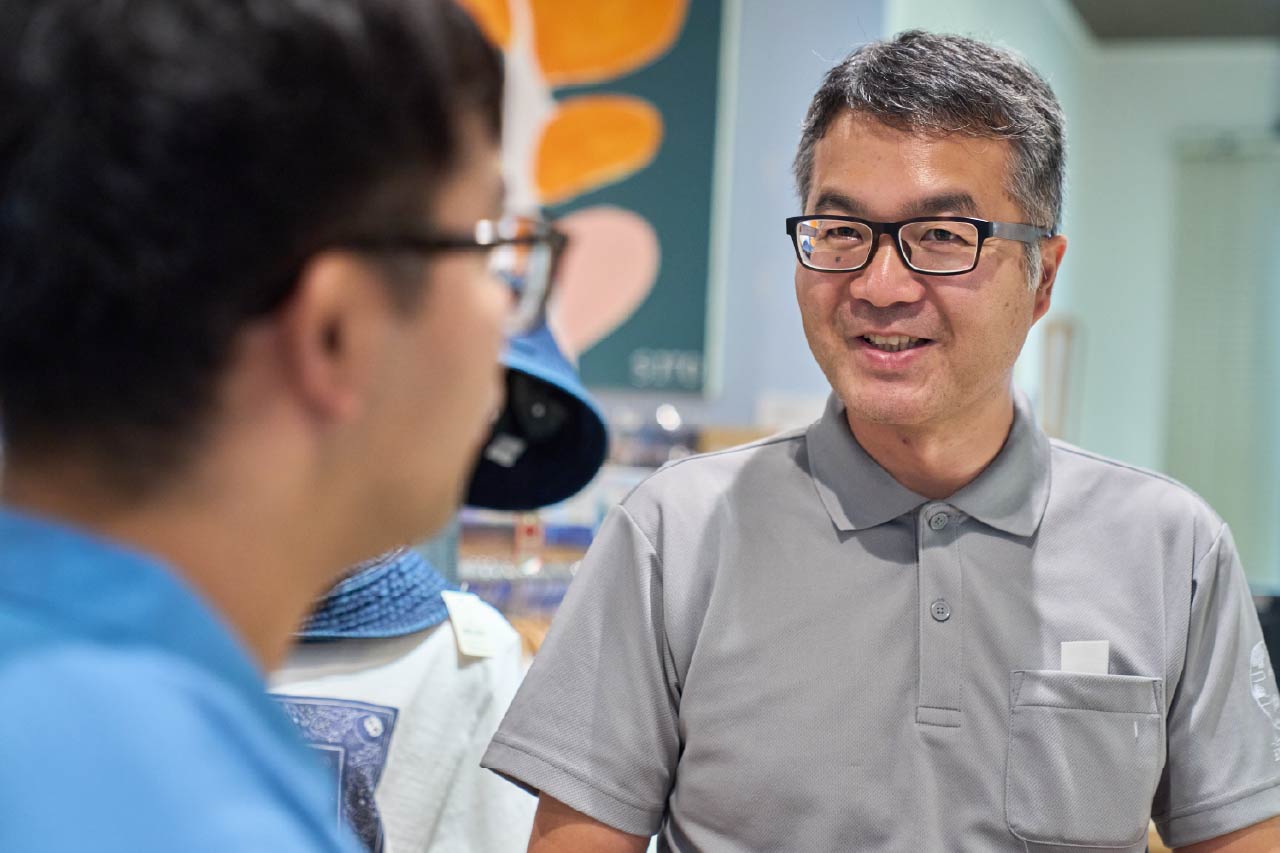
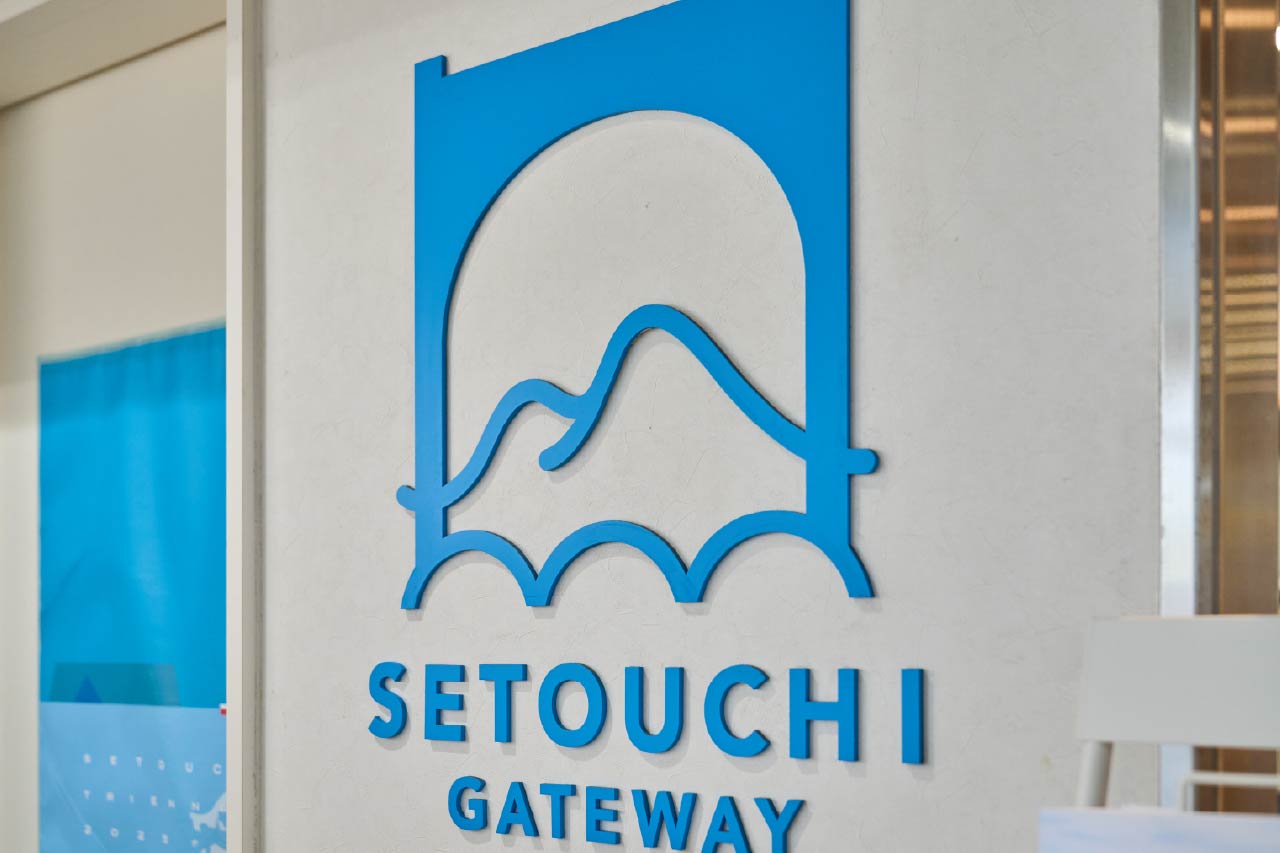
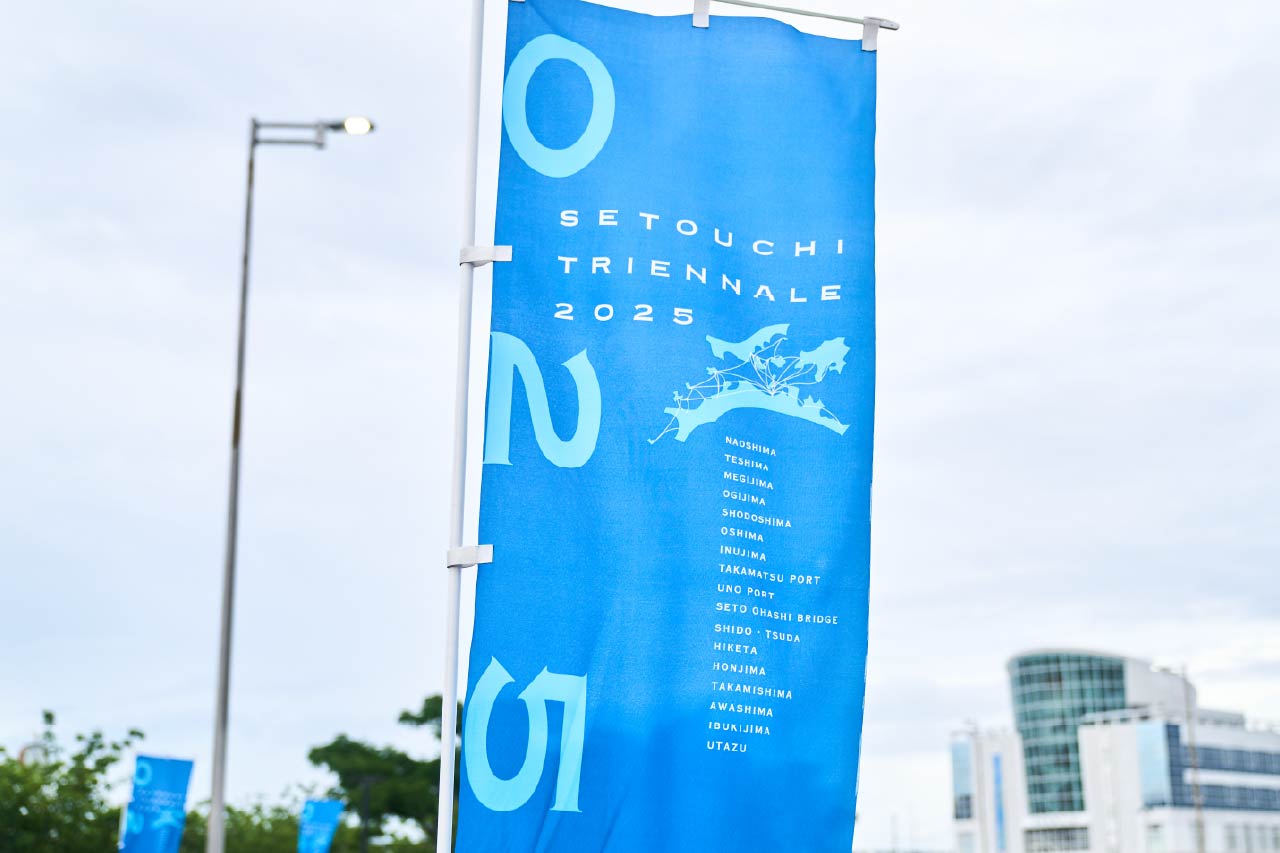
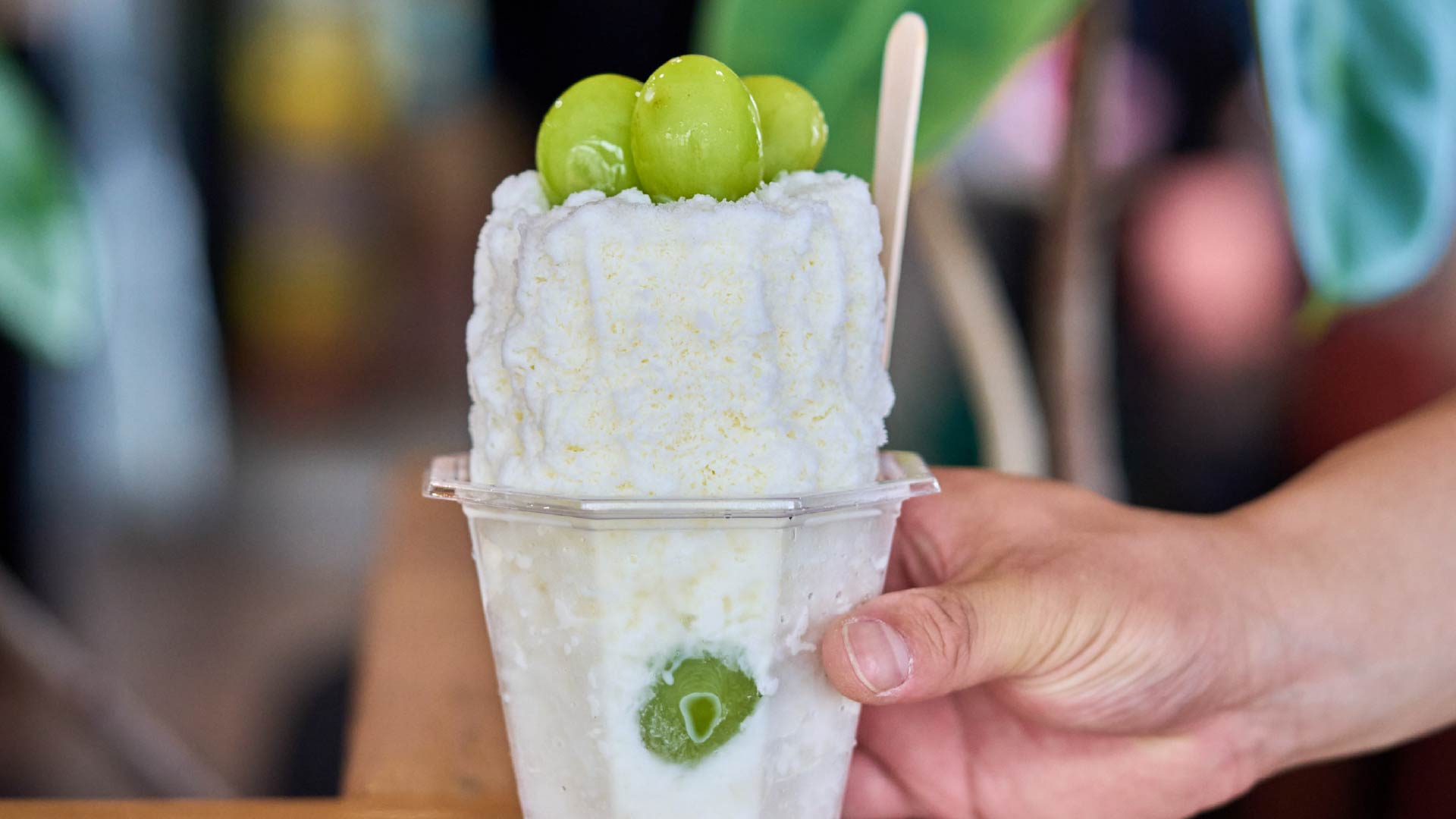
Enjoy the summer bounty of Okayama – Japan’s fruit kingdom – in style
Naoshima/Uno Port Course
Omachido Main Store
Before setting sail from Uno Port to Naoshima, our next destination, we couldn’t resist making a stop at Omachido Main Store – a place Mr. Katsube had been curious about for quite some time. Nestled right within the port grounds, the shop offers sweeping views of passing ships and an open, airy atmosphere perfect for a summer day.
Right outside, you’ll find the striking artwork Uno no Chinu / Uno Kochinu, adding a touch of creativity to the scenery!
Stepping inside, the sight of neatly displayed seasonal fruits is enough to make your mouth water before you’ve even placed your order. Mr. Katsube opted for the Shine Muscat Milk shaved ice – a decadent treat crowned with plump, skin-on Shine Muscat grapes grown in Okayama. Sweet, fresh, and irresistibly photogenic, it’s the very taste of summer in a cup!
“When I think of shaved ice, I imagine eating it at a festival stall, so this is completely different!” said Mr. Katsube. The ice here is light and fluffy, melting smoothly on the tongue while the freshness of the fruit bursts across the palate.
“It was the first time I’ve had shaved ice that was delicious even after melting, making me want to drink it all up,” he said, savoring it right until the last bite.
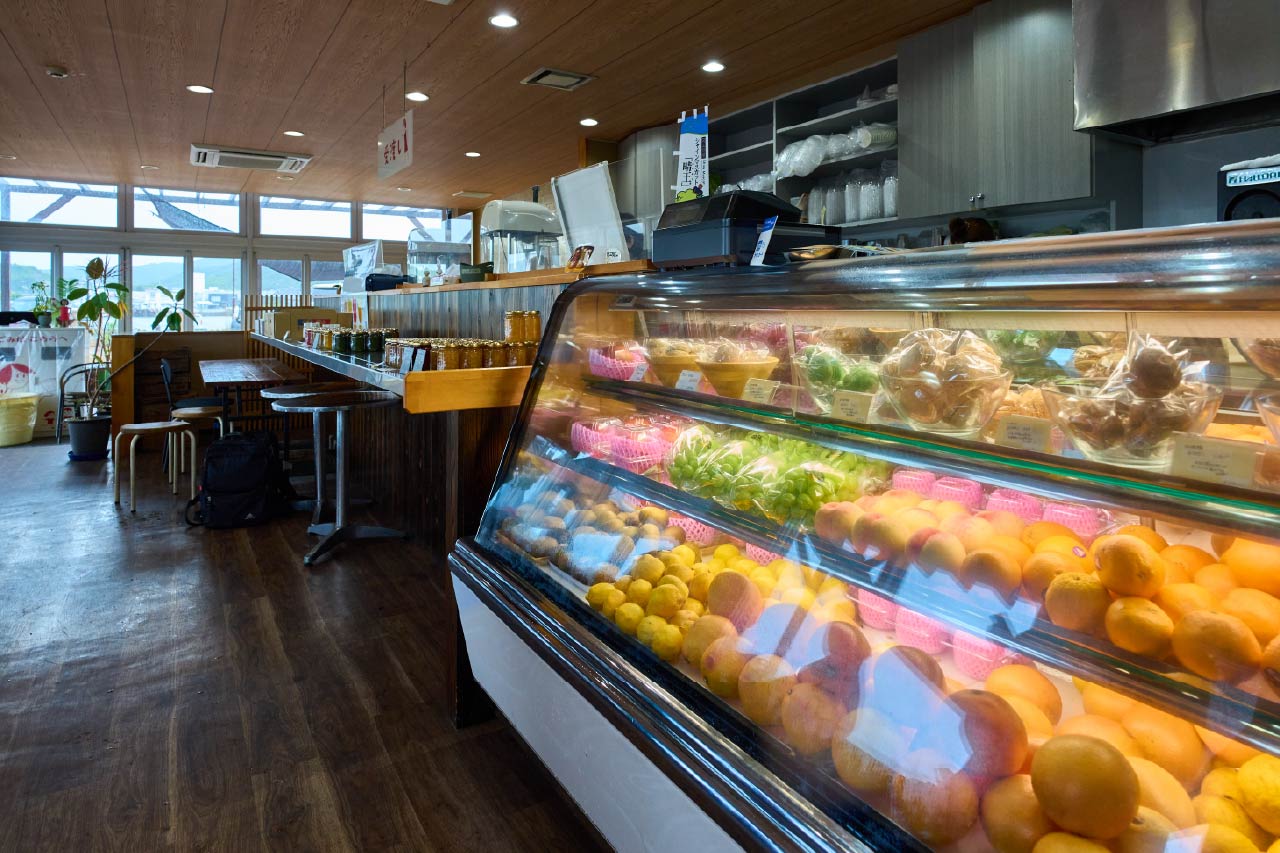
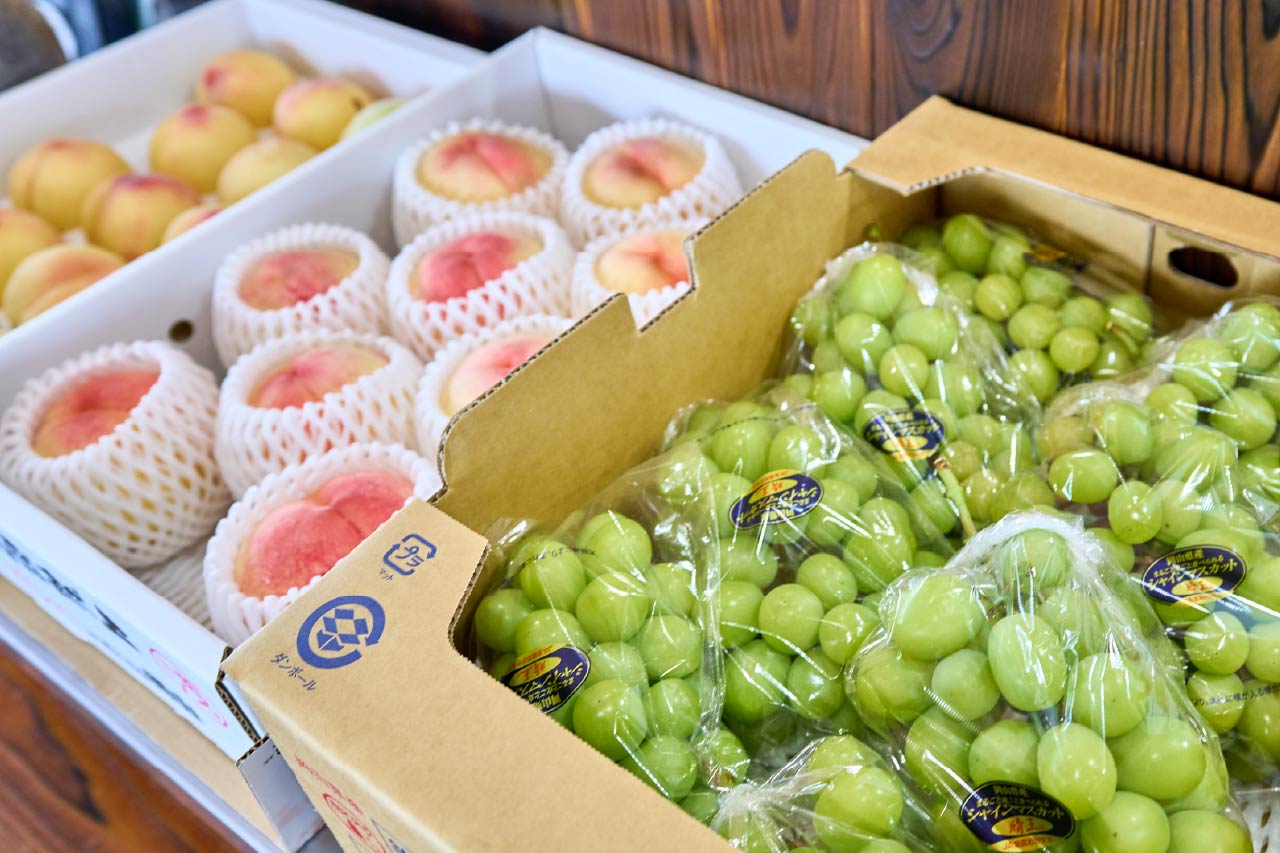
Inside, you’ll also find a selection of seasonal fresh fruits.
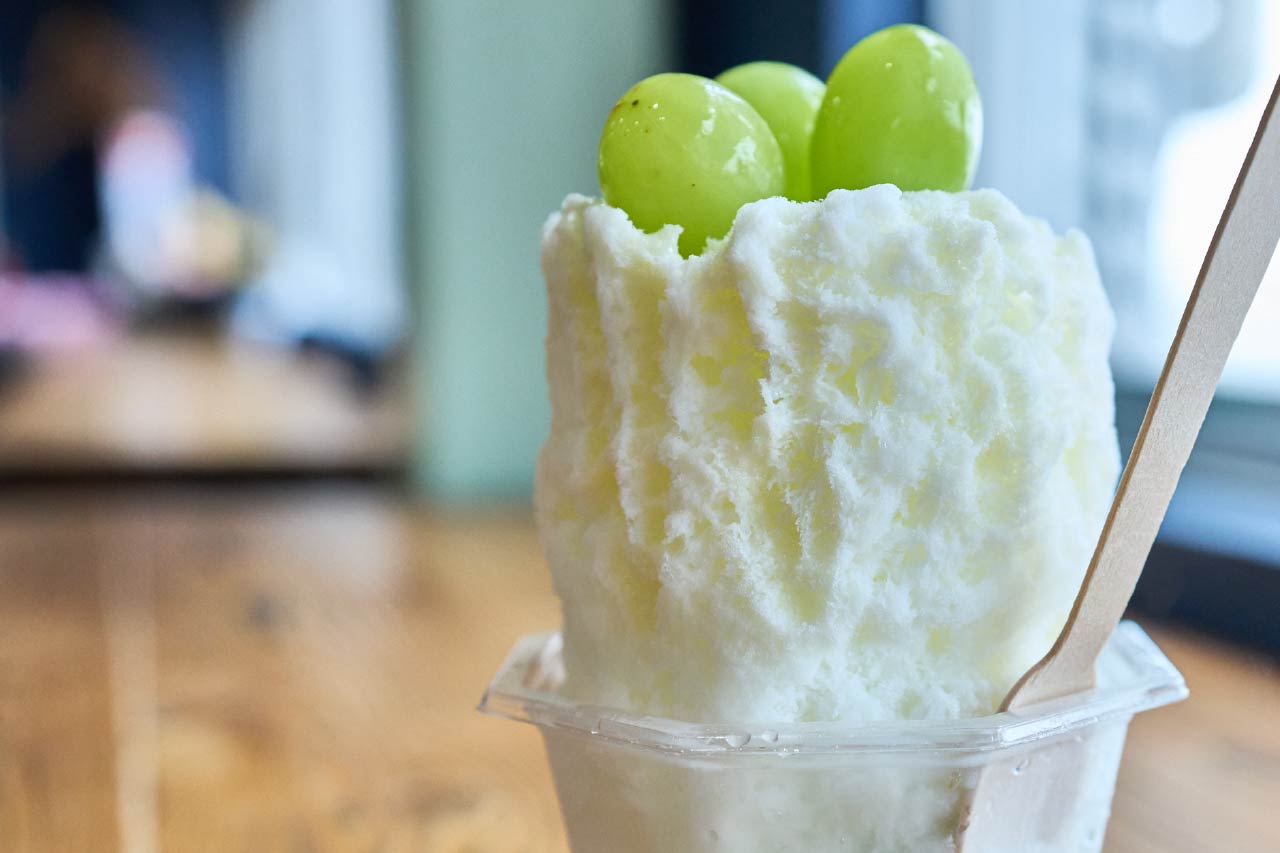
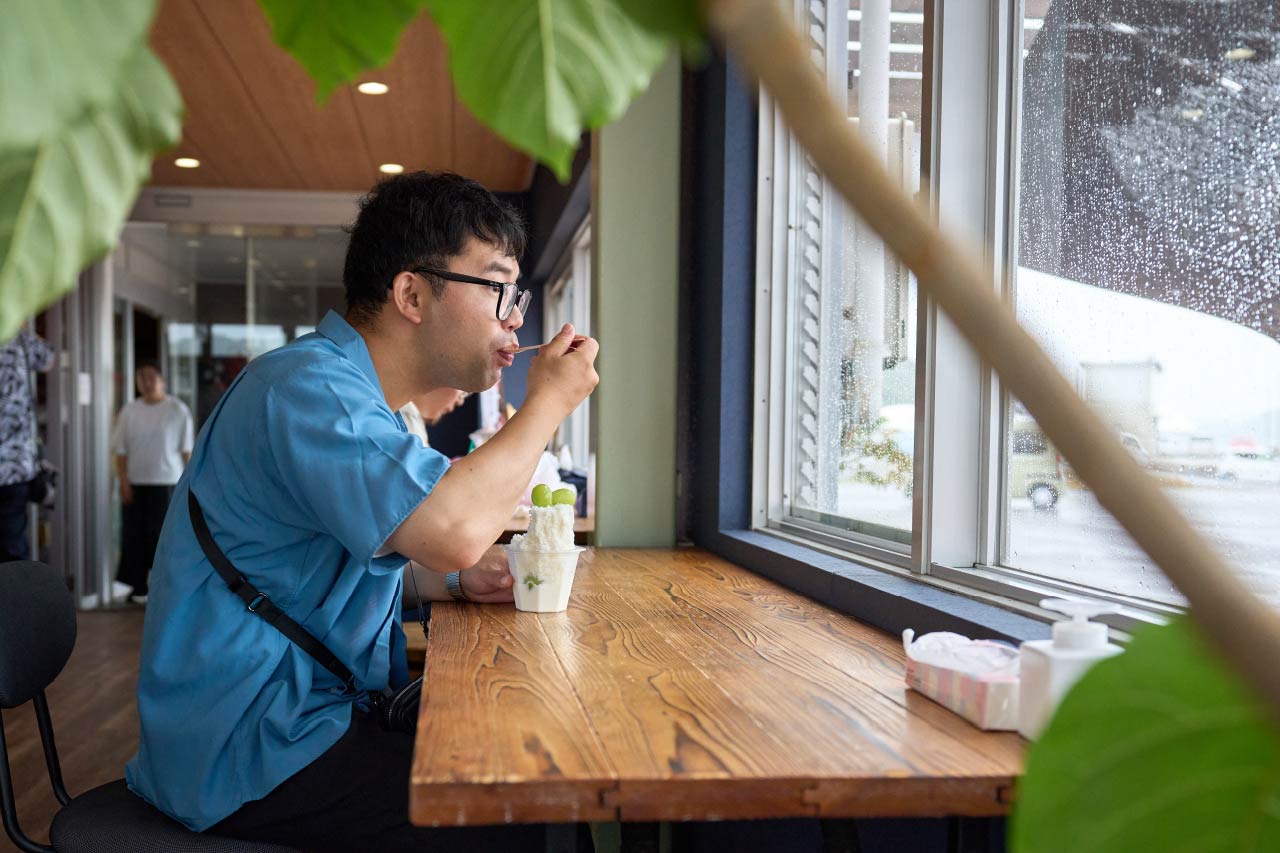
The shop also sells a colorful selection of seasonal fruits. From summer into autumn, the lineup changes to match the harvest. “The main fruits used change slightly depending on the season. Until around Obon in August, white peaches are used, and after that, golden peaches with a stronger sweetness appear. From around that time, Pionne grapes also begin to appear, and it is the season when Okayama’s fruits are at their most vibrant.”
At the counter, you’ll also find handmade jams in a rainbow of flavors. “The kiwi is wild green kiwi from Okayama. It is grown by local farmers and has a deep green color and strong acidity, giving it a very refreshing taste. We also receive mandarins, lemons, and Shine Muscat grapes from farmers in Tamano and carefully turn them into jam,” she said.
Omachido’s story began when Takeda’s husband, then running a produce store, wondered how to make the most of damaged or surplus fruits. That question inspired the shop’s signature creations – shaved ice drenched in real fruit syrup.
Since opening in 2004, Omachido has remained committed to celebrating the seasons, working closely with fresh local ingredients, and delivering customers more than just dessert – but a truly satisfying, memorable taste of Okayama.
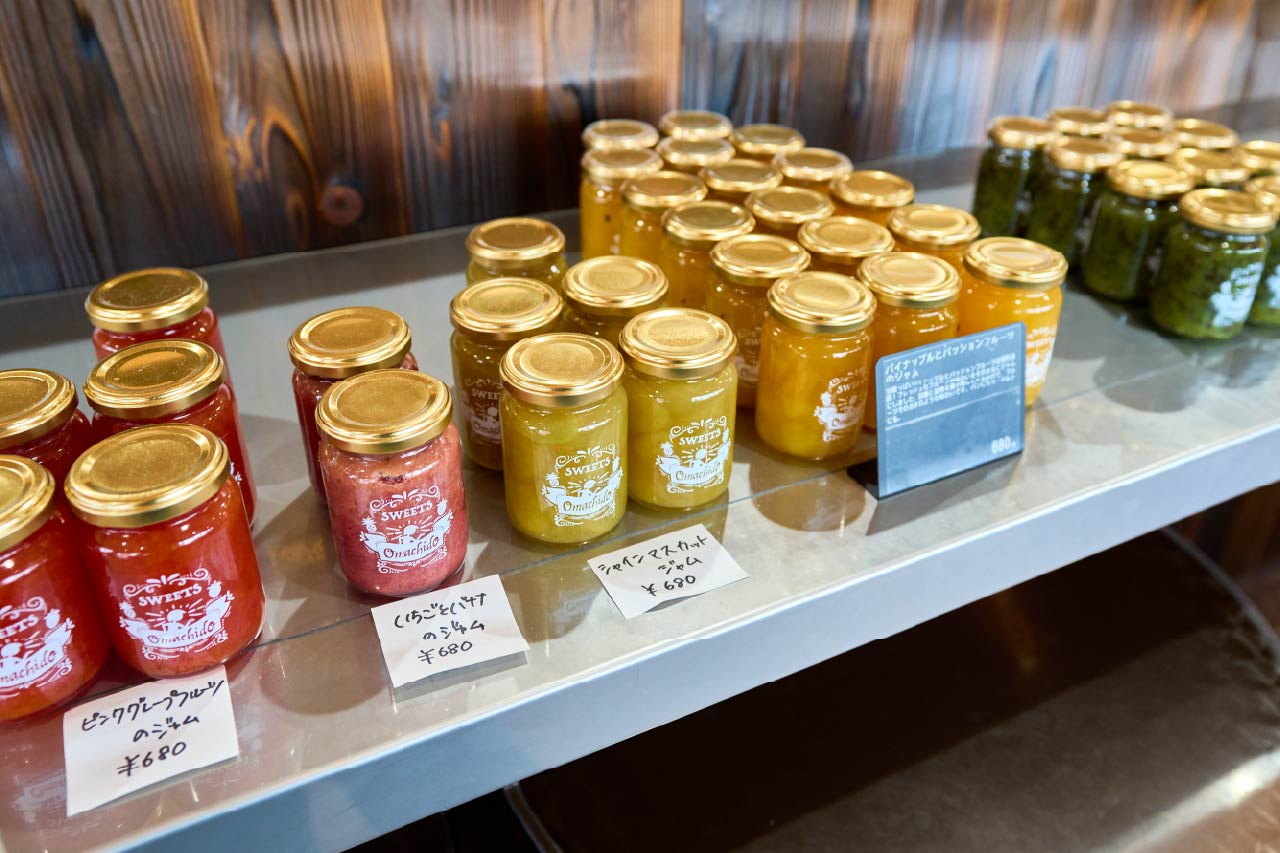
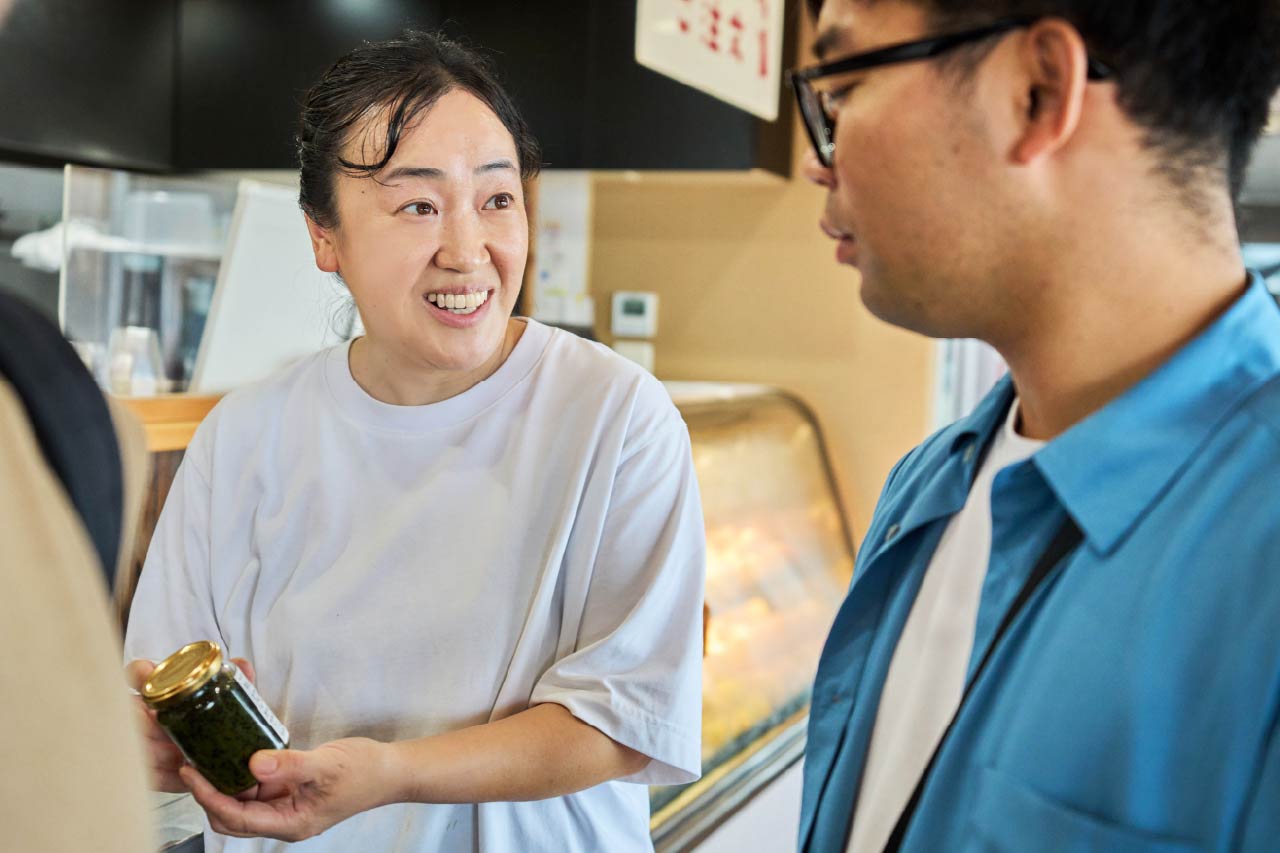
Mami Takeda of Omachido
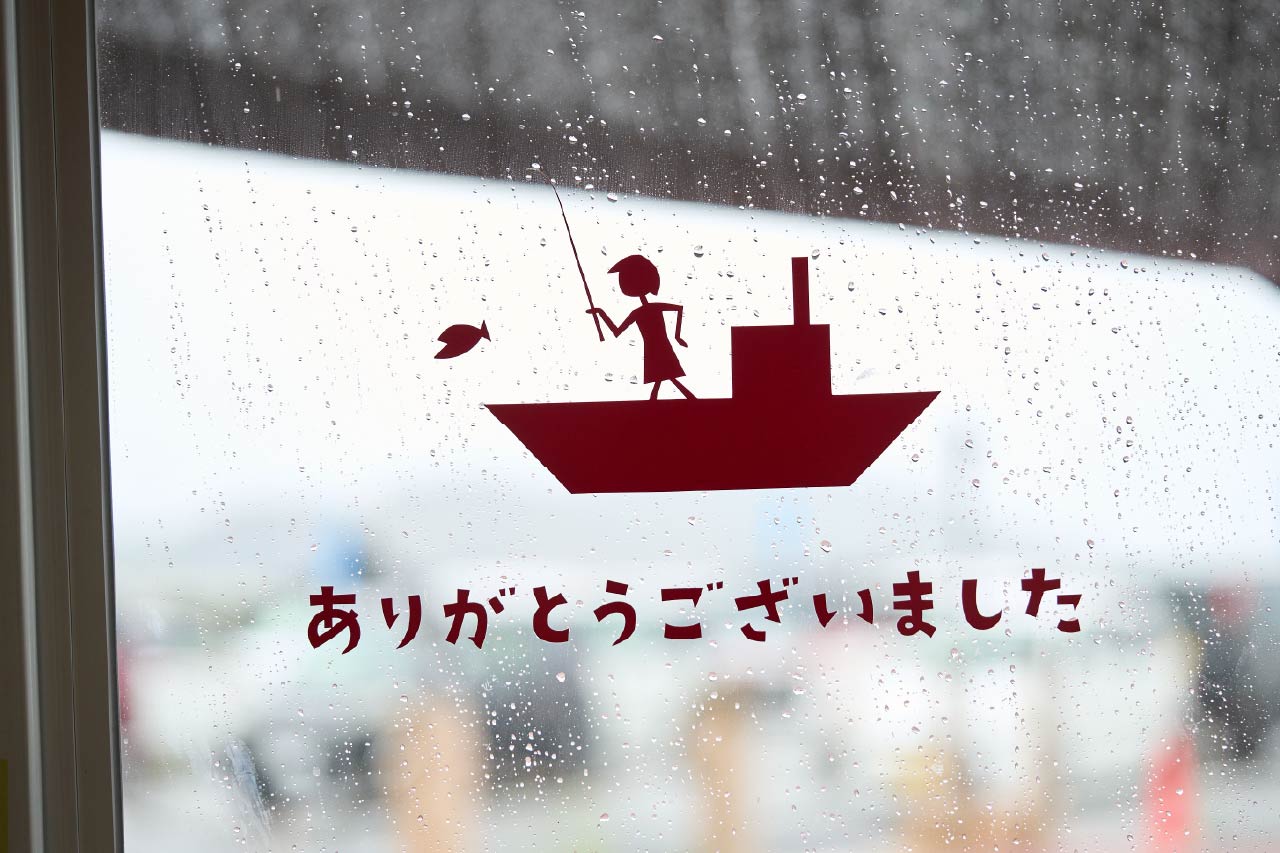
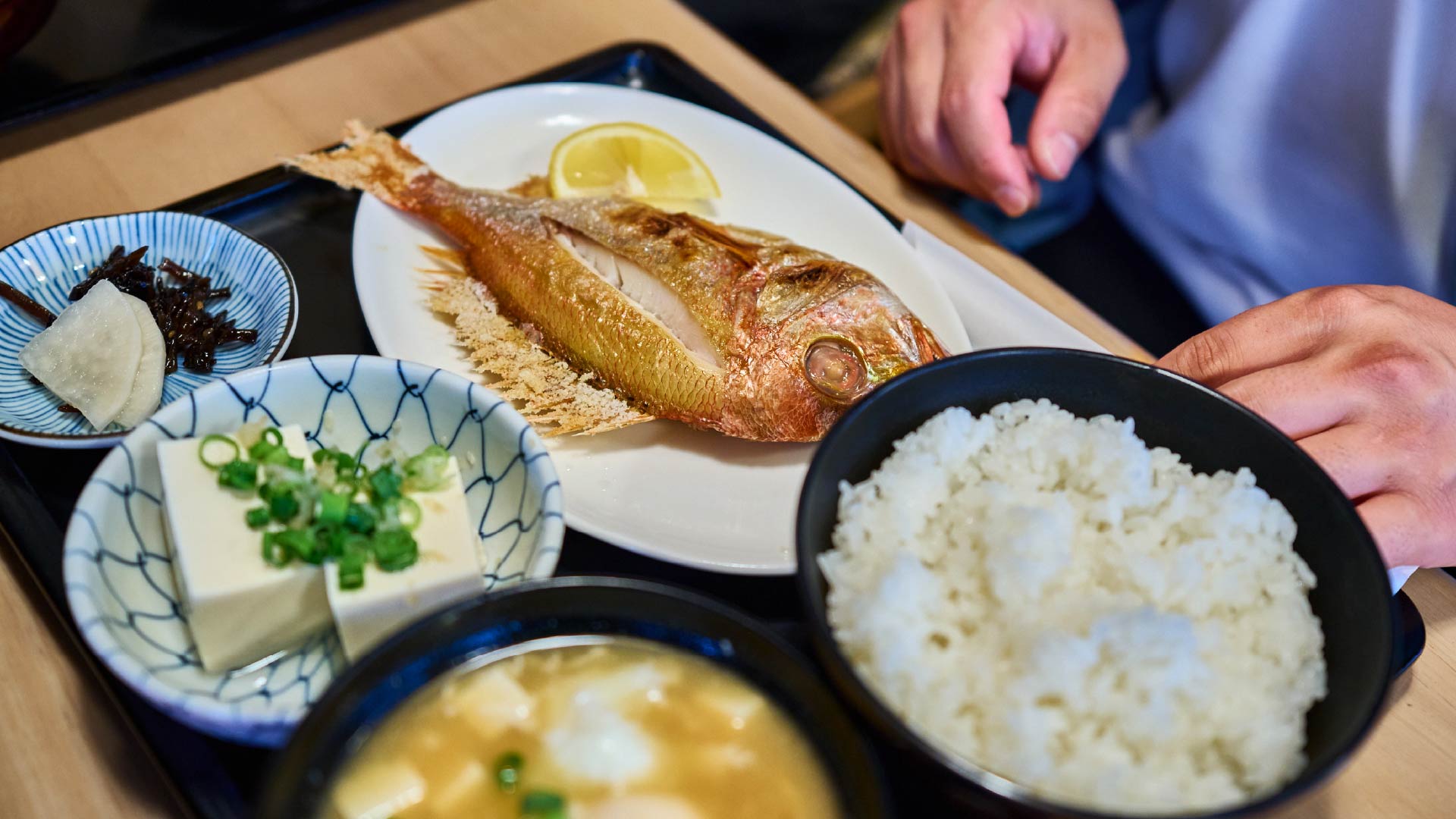
A special moment at a local restaurant with a rich flavor
Naoshima/Uno Port Course
Osaka-ya Shokudo
With just over an hour before our ferry departure, we decided to stop for lunch at Osaka-ya Shokudo, a beloved local restaurant that has been serving Tamano since 1948.
When we asked the person sitting next to us for a recommendation, they told us that the fish set meal was delicious. At Osaka-ya, you can choose your fish directly from the counter showcase, with the selection changing daily depending on the morning’s catch.
The restaurant’s warm, retro atmosphere and the casual chatter of locals make the experience more than just about eating – it feels like stepping into a small but special part of Tamano’s story. You leave not only with a full stomach, but with a page of your travel memories you’ll want to keep.
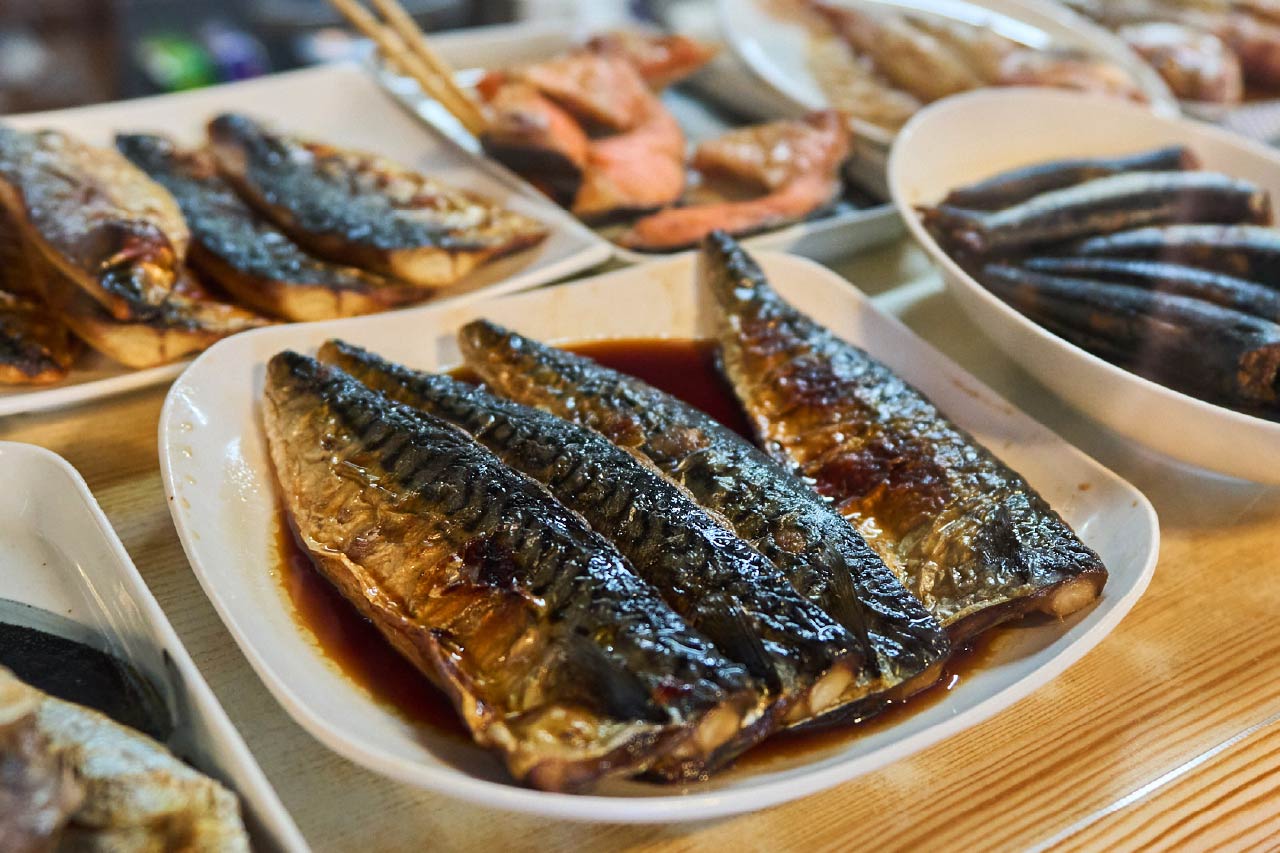
Fish Set Meal: 850 yen and up
Select your preferred menu item from the counter showcase. Prices vary depending on the menu item.
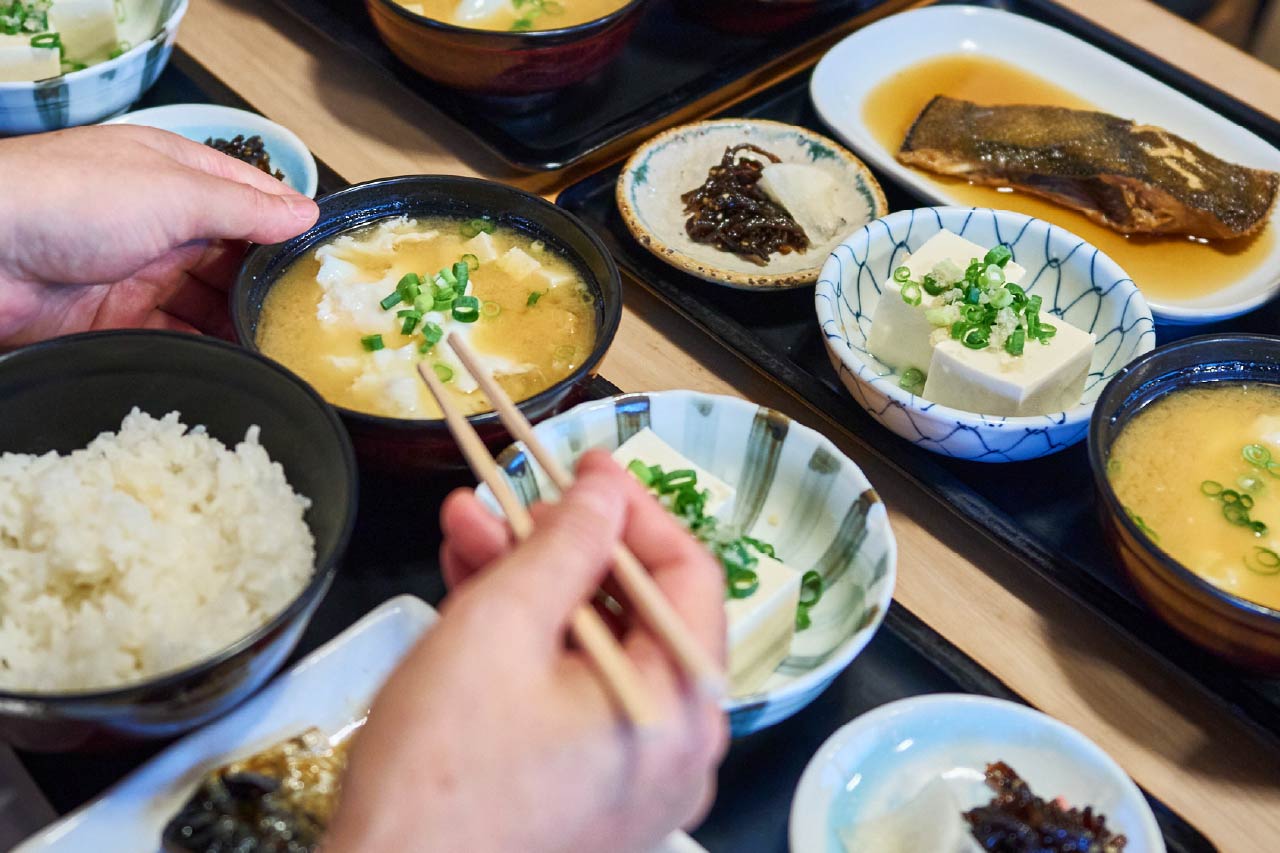
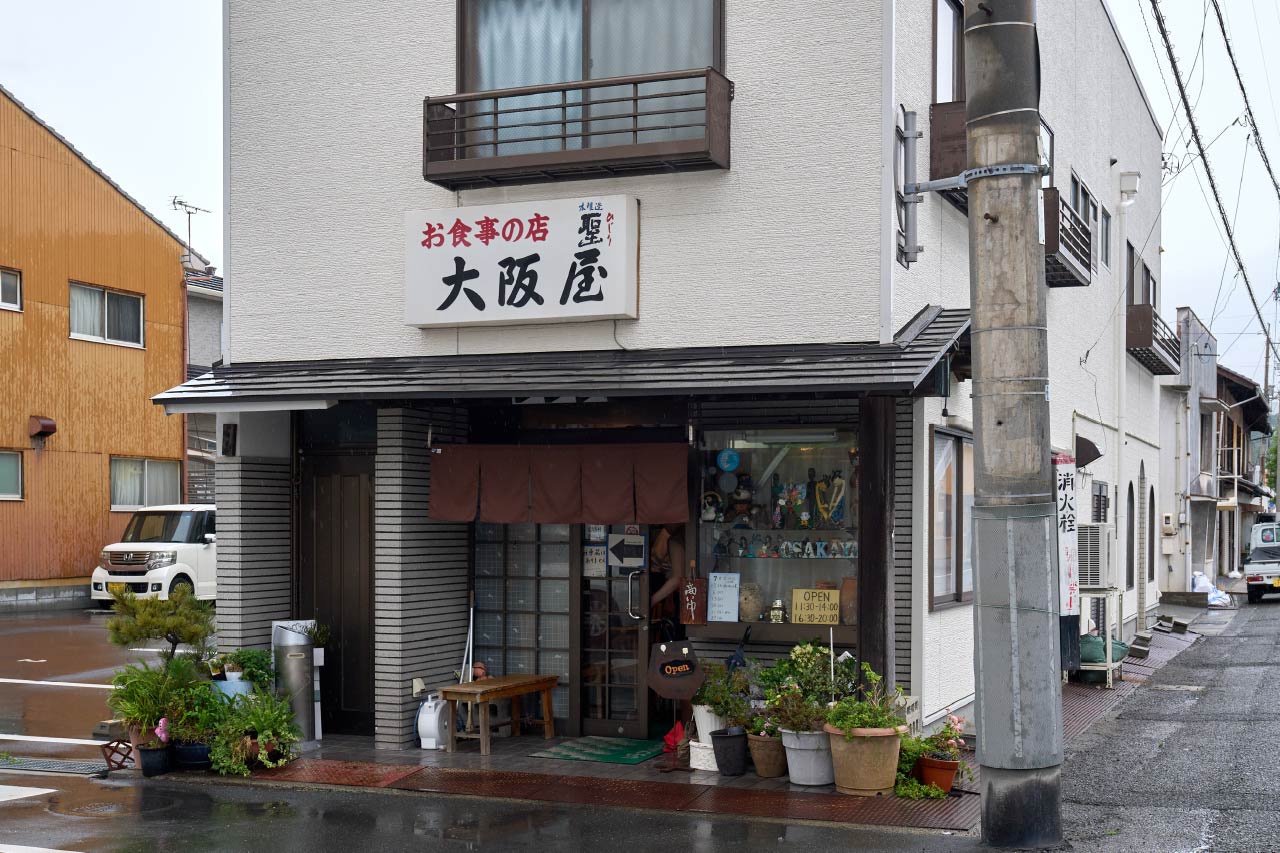
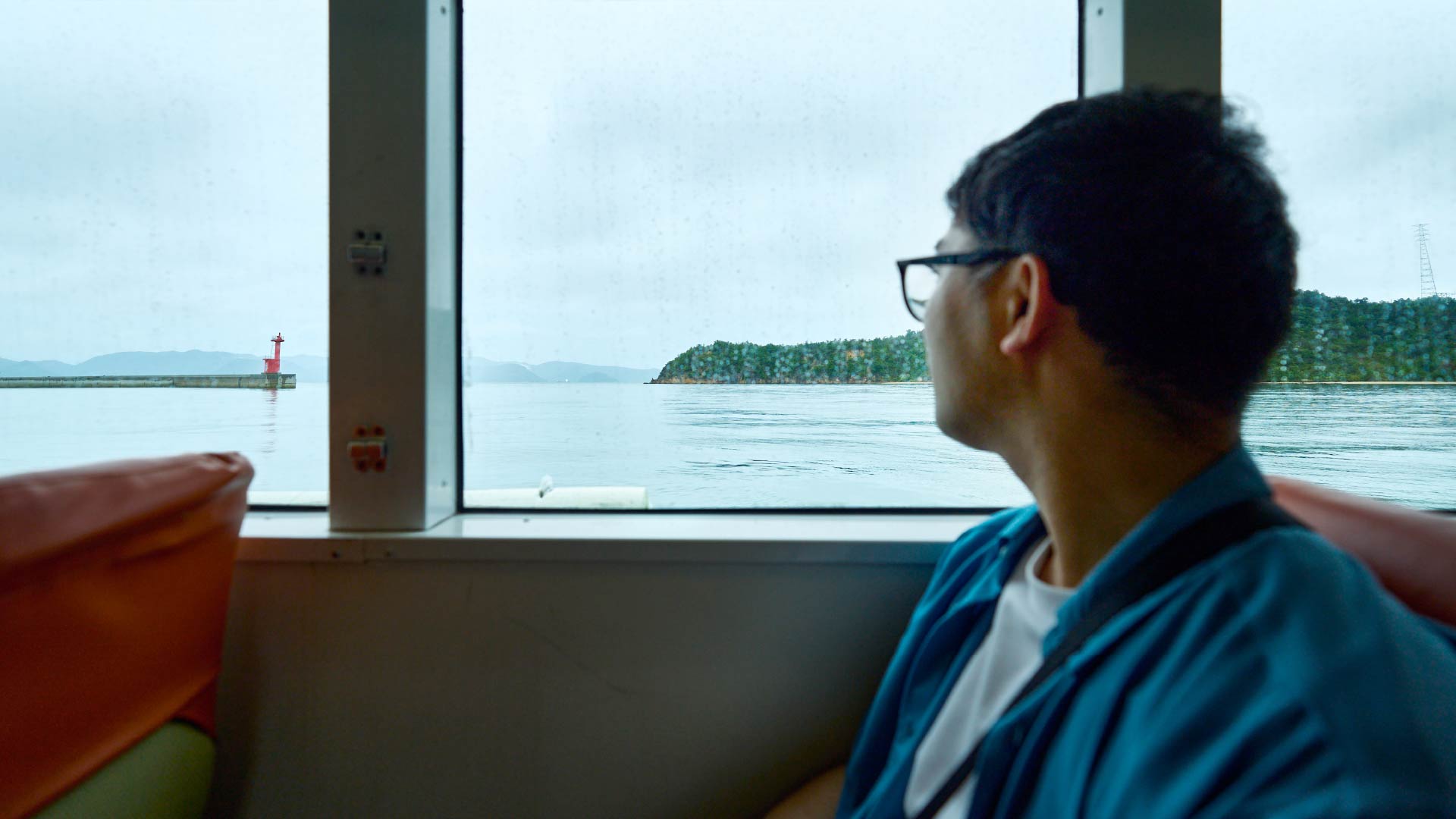
Leaving the land behind
Viewing the Seto Inland Sea from the ship
Shikoku Kisen Official Website >
From Uno Port to Naoshima, you can choose between a passenger ship or a ferry. Naoshima has two ports – Miyaura Port and Naoshima Port.. “Enjoying the scenic beauty of the islands while taking a leisurely boat ride is also nice. The ship doesn’t rock much, and you can feel the gentle waves of the Seto Inland Sea,” said Mr. Katsube.
We disembarked at Miyaura Port, located in the west-central part of Naoshima. Right near the port are bus stops, an information center, and even outdoor art installations, meaning your Naoshima experience begins the moment you arrive. The trip is also short – just 15 minutes by passenger ship or about 20 minutes by ferry – making Naoshima even more appealing.
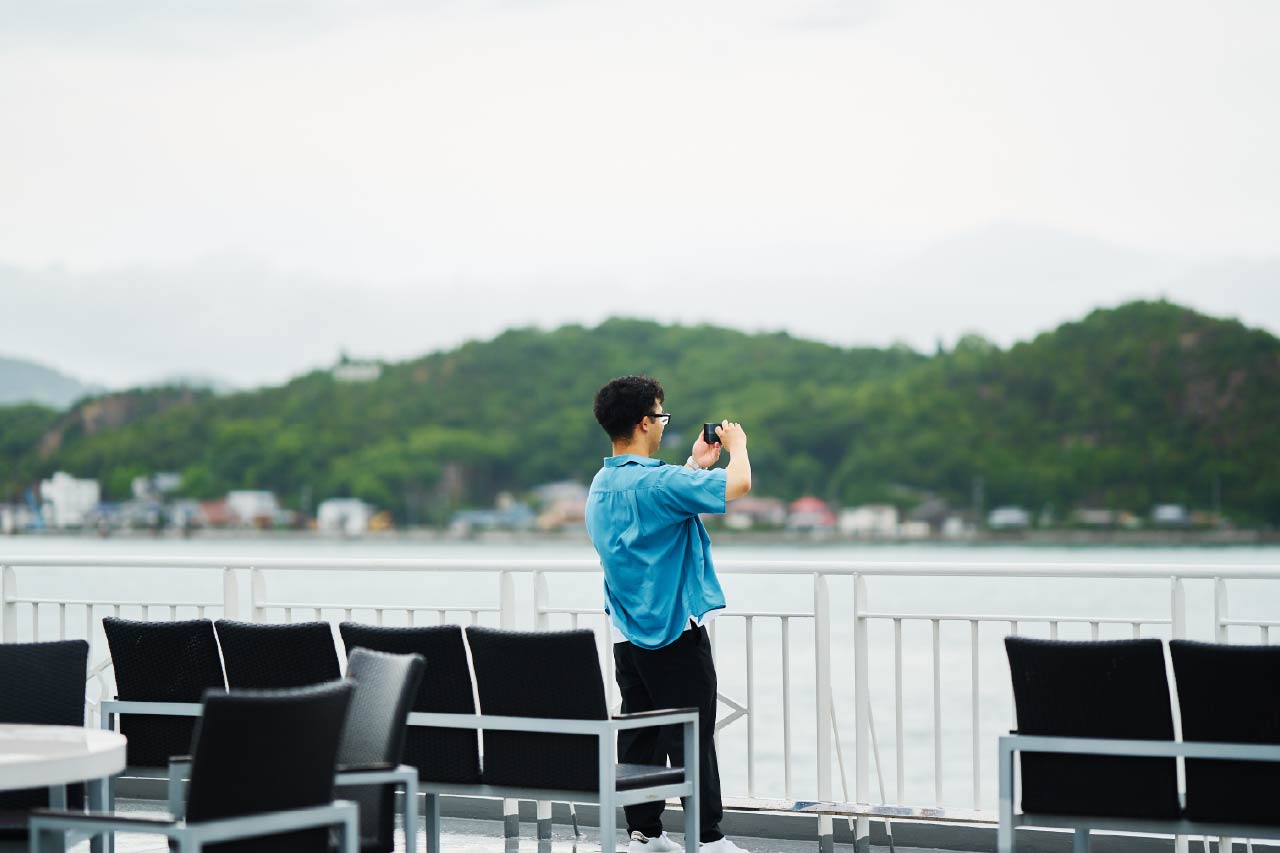
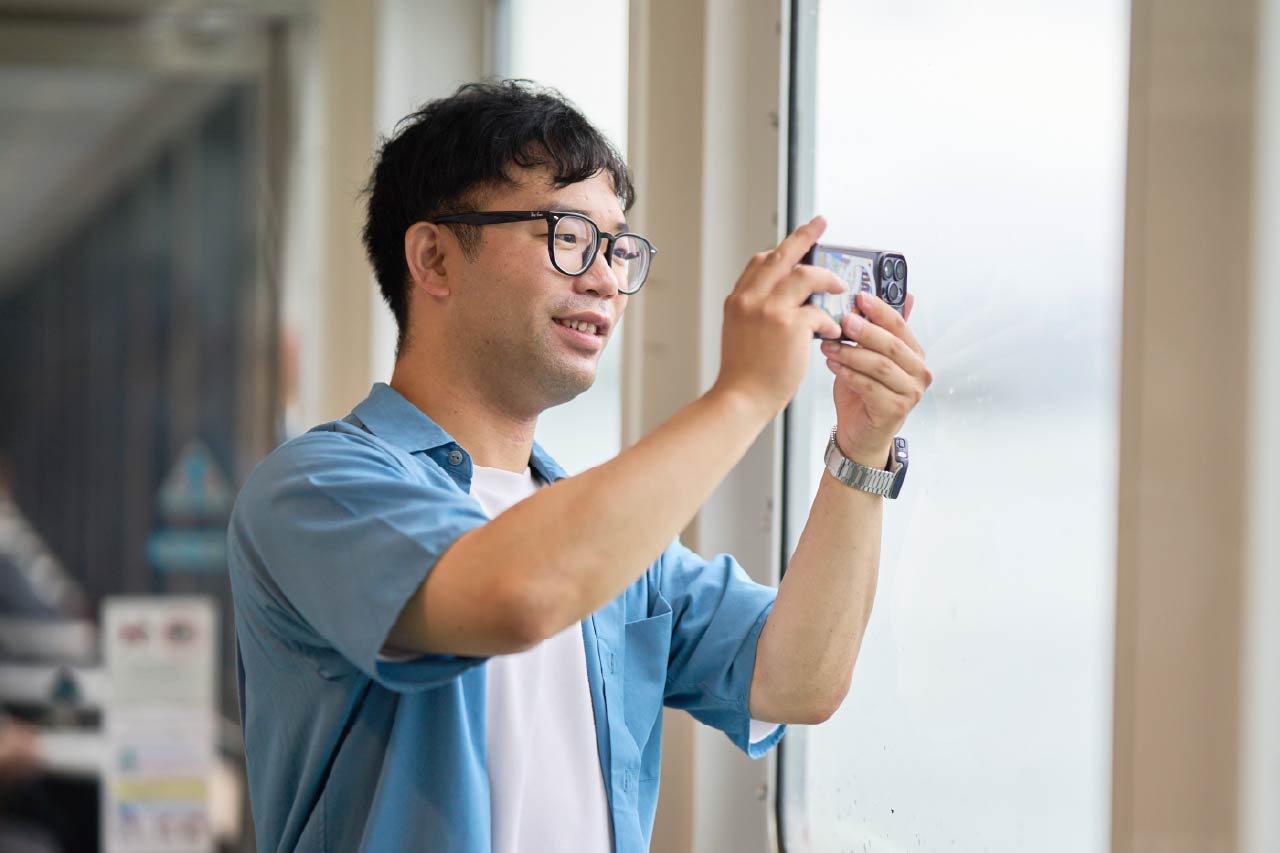

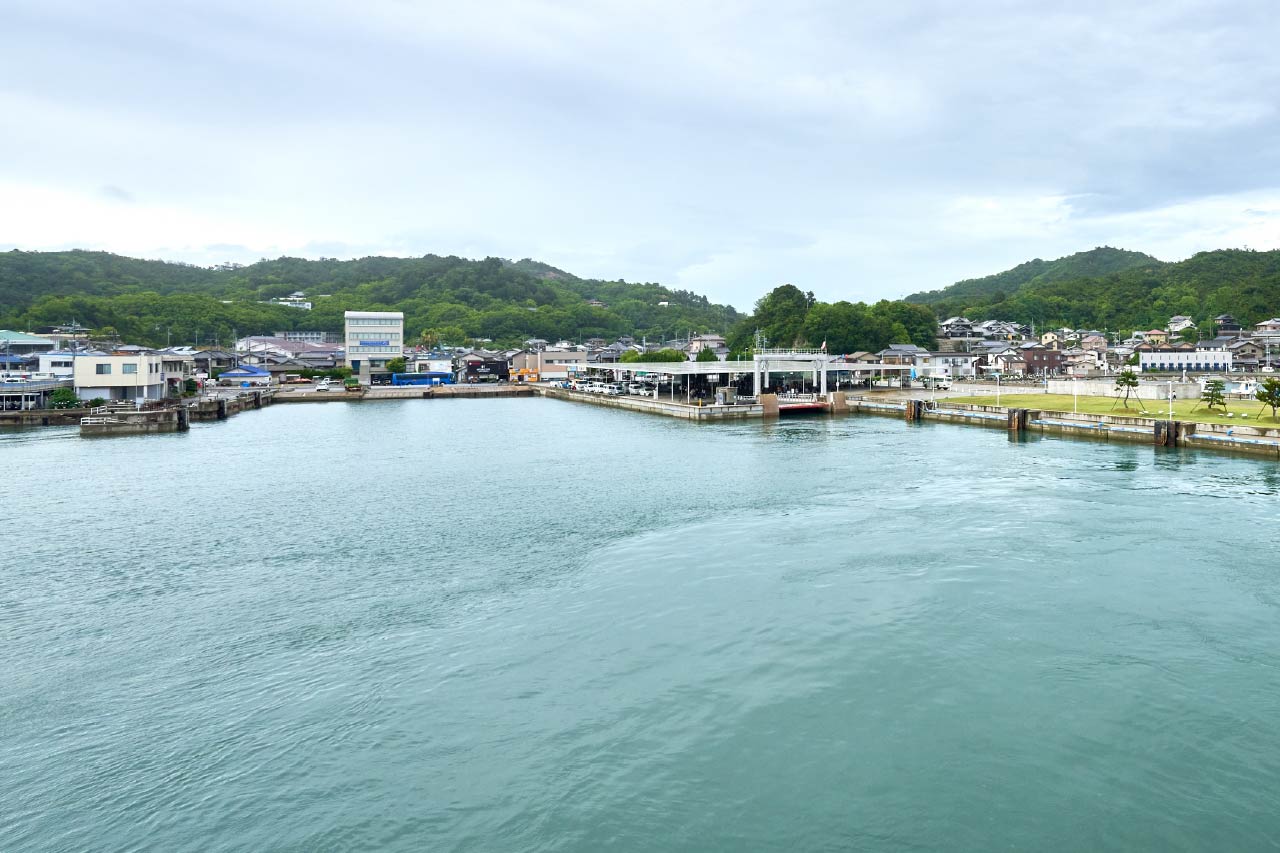
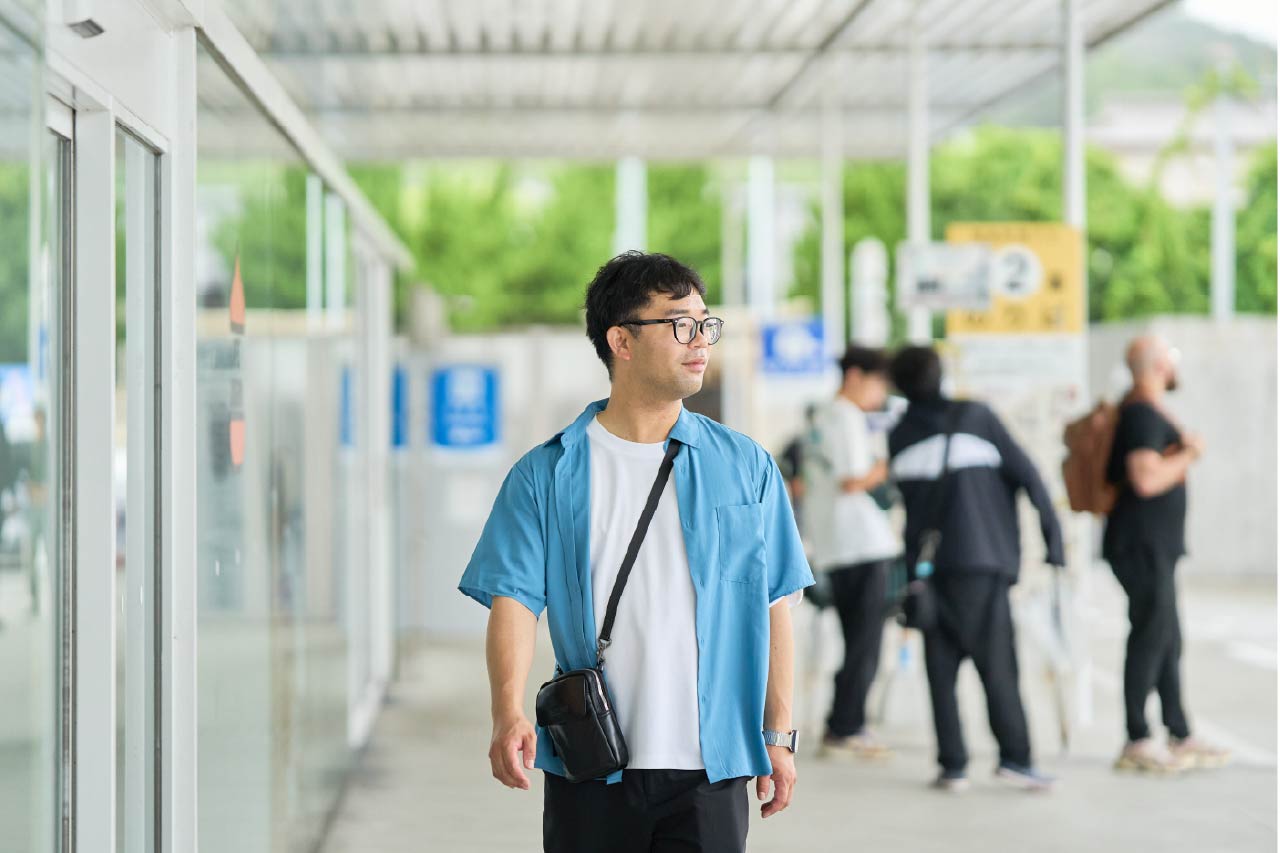
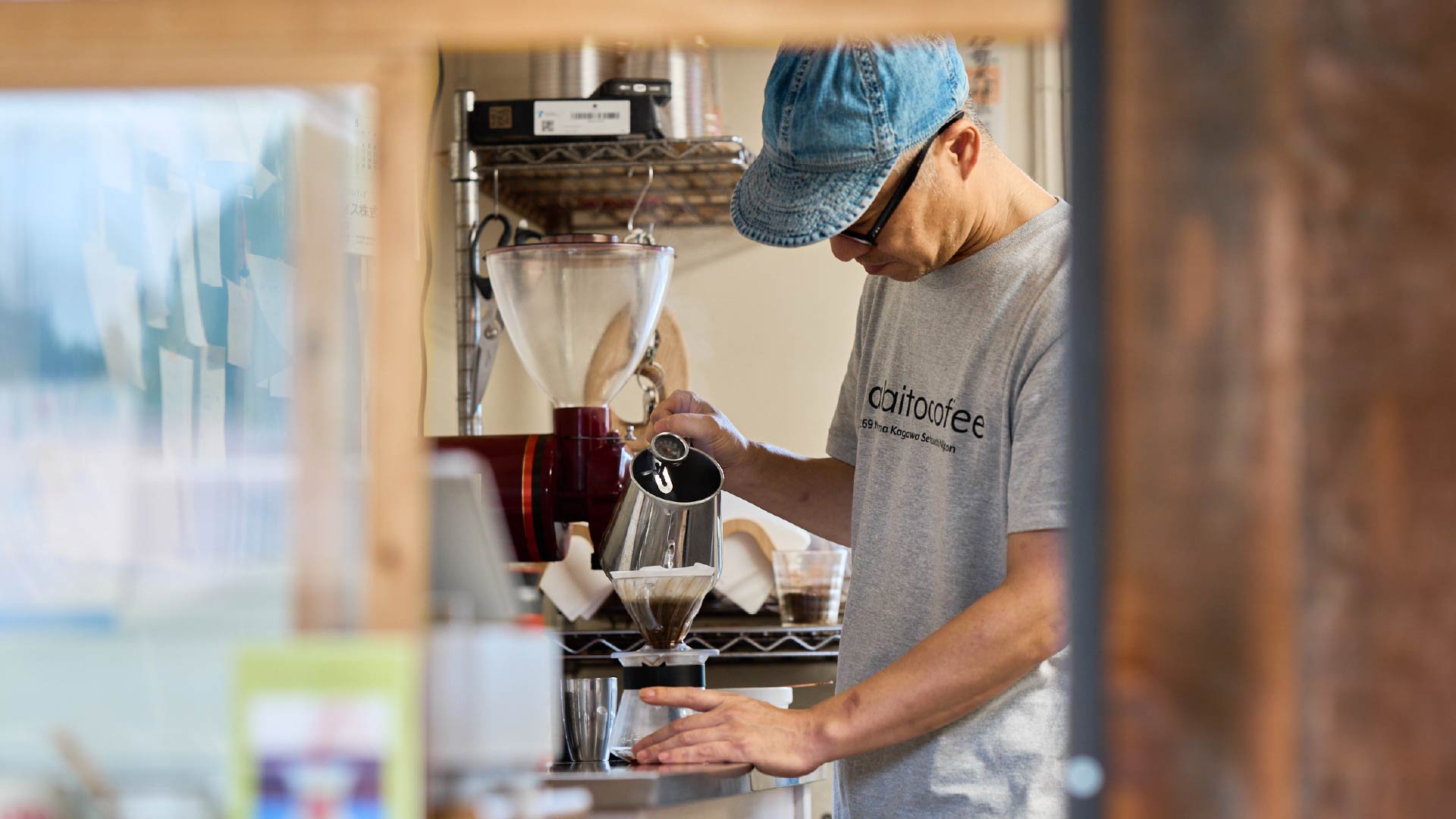
Continuing to watch over a changing Naoshima.
The thoughts behind a cup of coffee
Naoshima/Uno Port Course
Akaito Coffee
Just a 3-minute walk from Miyaura Port sits Akaito Coffee, where owner Naohisa Okuyama greeted us warmly upon arrival. We took a seat at the counter by the window and scanned the menu, filled with tempting coffee choices. On the owner’s advice, we ordered the shop’s signature Akaito Blend and a slice of homemade chocolate cake.
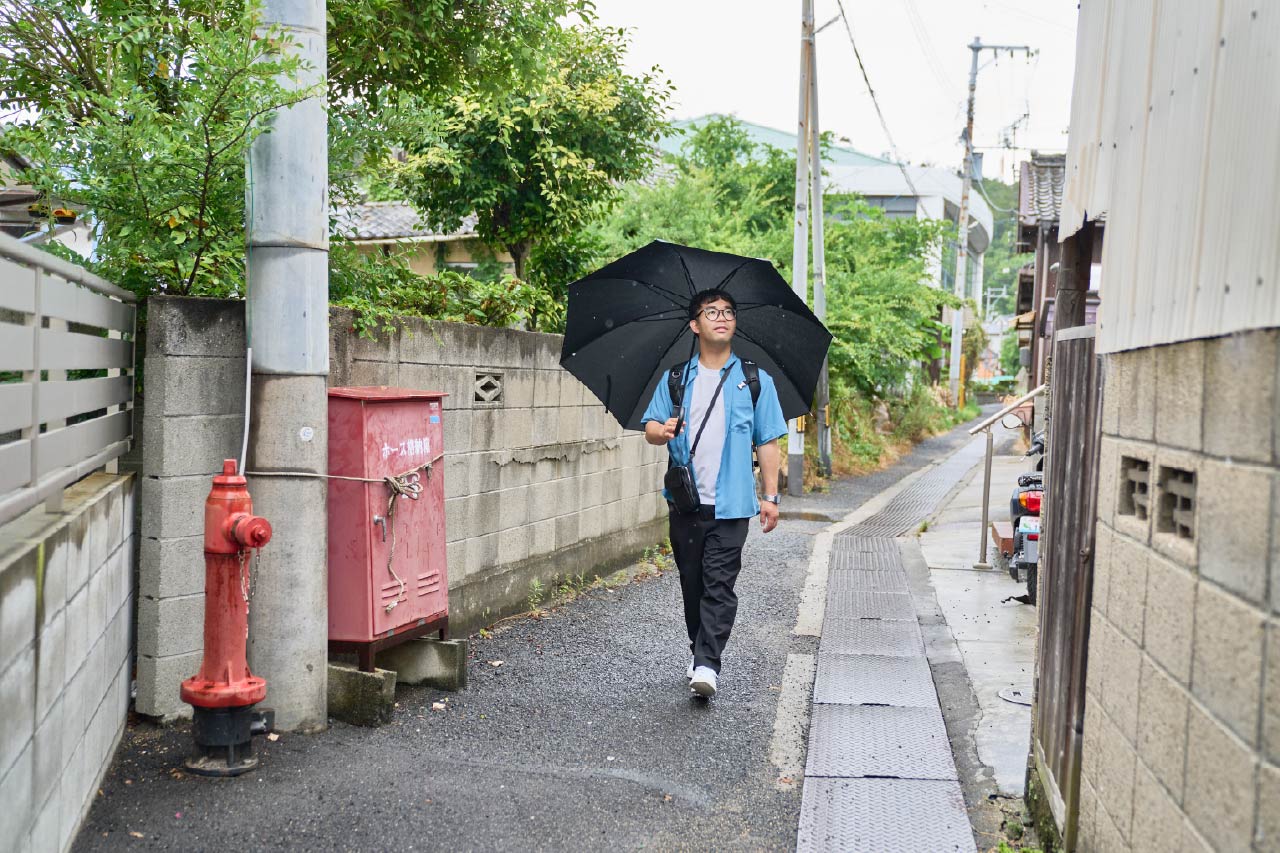
Akaito Coffee is only a 3-minute walk from Miyanoura Port – the perfect spot to relax before your departure.
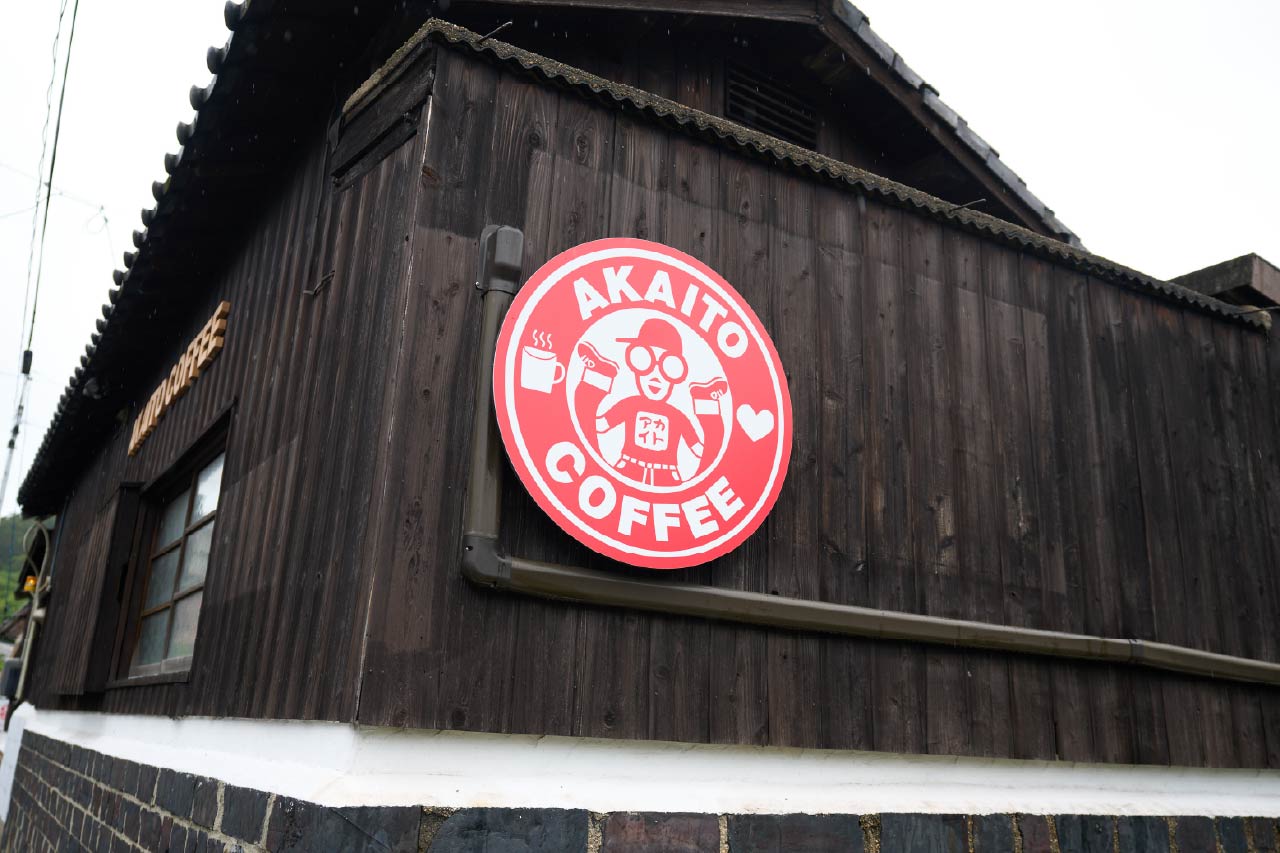
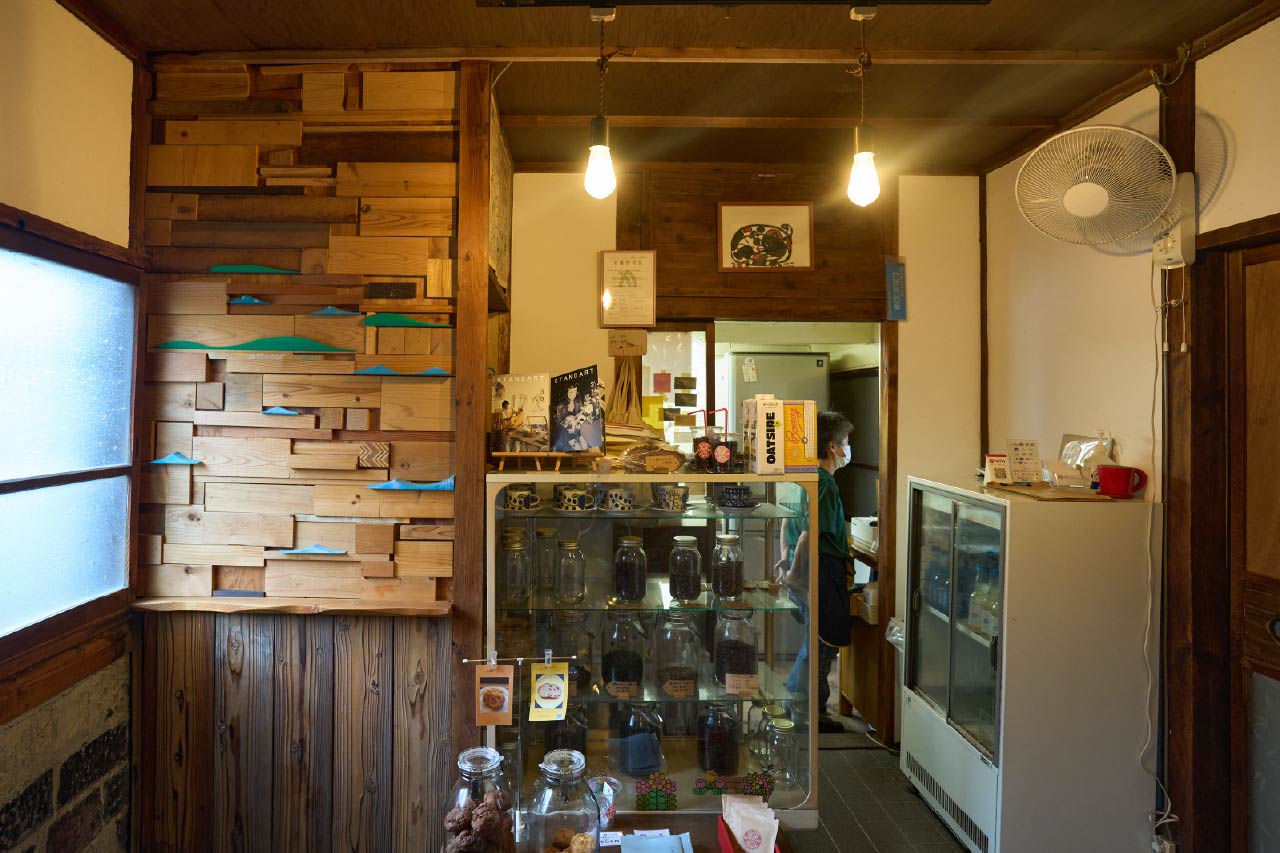
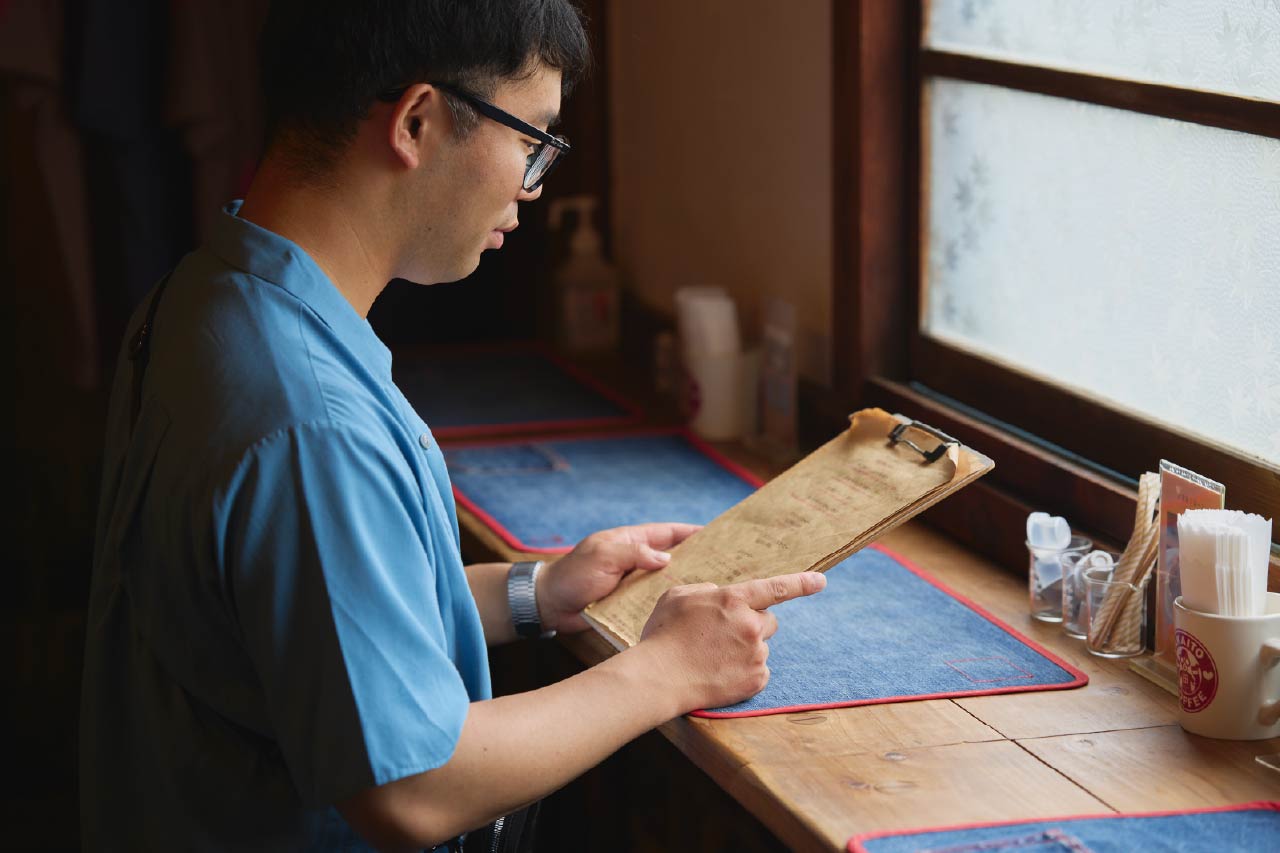
The shop’s interior reflects Okuyama’s background in the denim industry – red-stitched lunch mats and handmade items sewn by his wife, who has over 20 years of sewing experience, add a personal, crafted touch to the space.
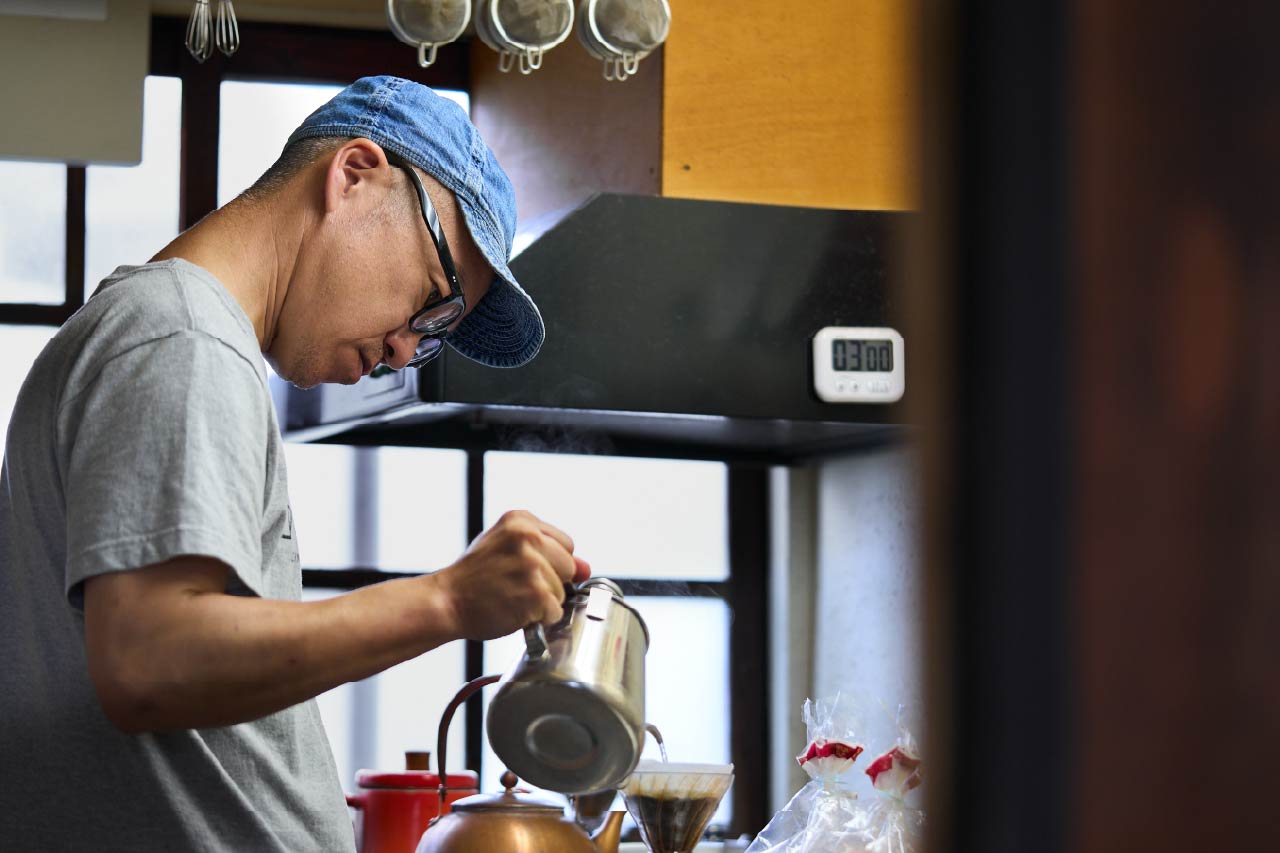
Opening at 7 AM, Akaito Coffee aims to offer a brew that fits any morning. “Even if it doesn’t leave a strong impression, as long as it’s delicious, that’s enough,” says Okuyama.
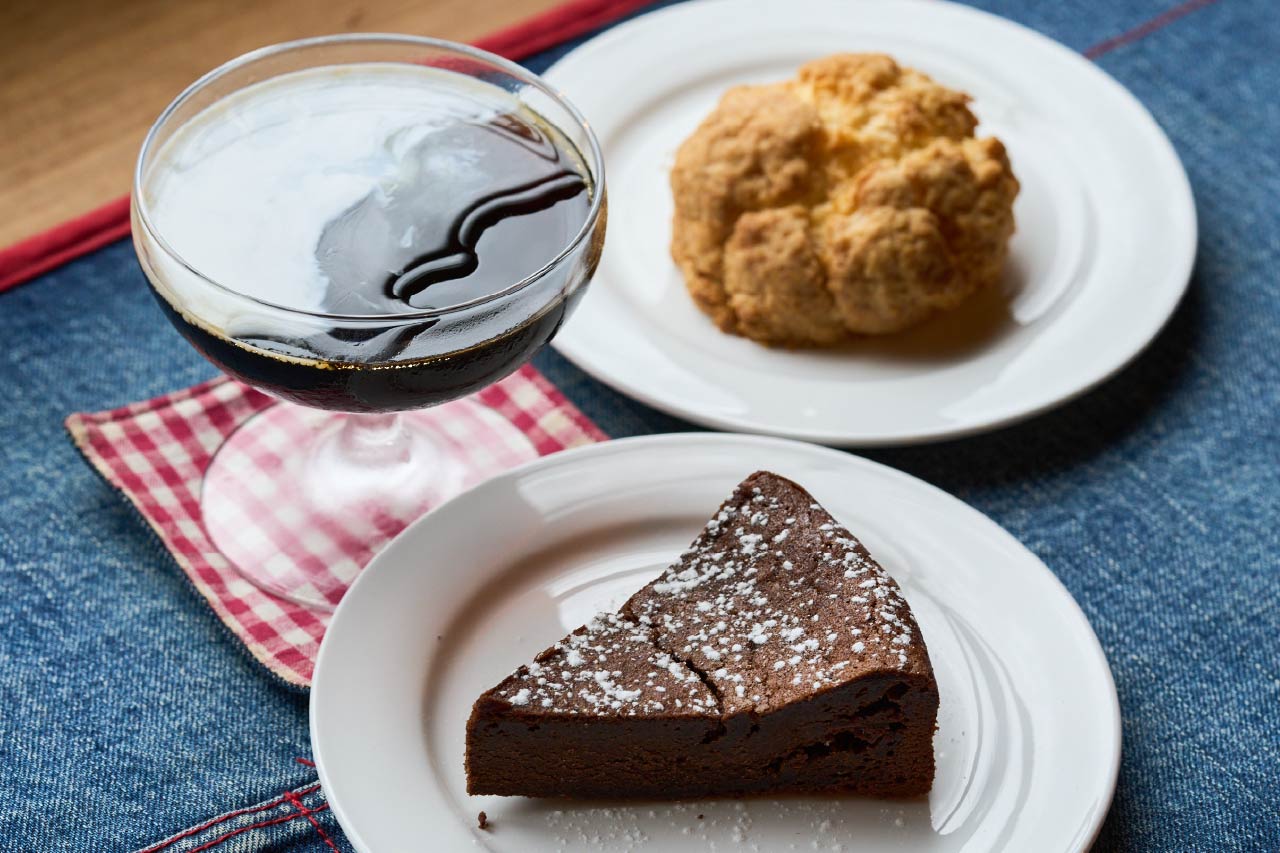
The homemade scones are light and crisp, the coffee jelly has a pleasant, mild bitterness, and the chocolate cake – made by Okuyama’s wife – offers just the right sweetness.
When Akaito Coffee first opened, Okuyama bought beans from outside suppliers. But as he experimented with different types, his curiosity grew. “As we tried various beans, we became interested in roasting. We want customers to enjoy the freshest possible coffee, so we now roast our own beans using a hand-cranked roaster,” says Okuyama.
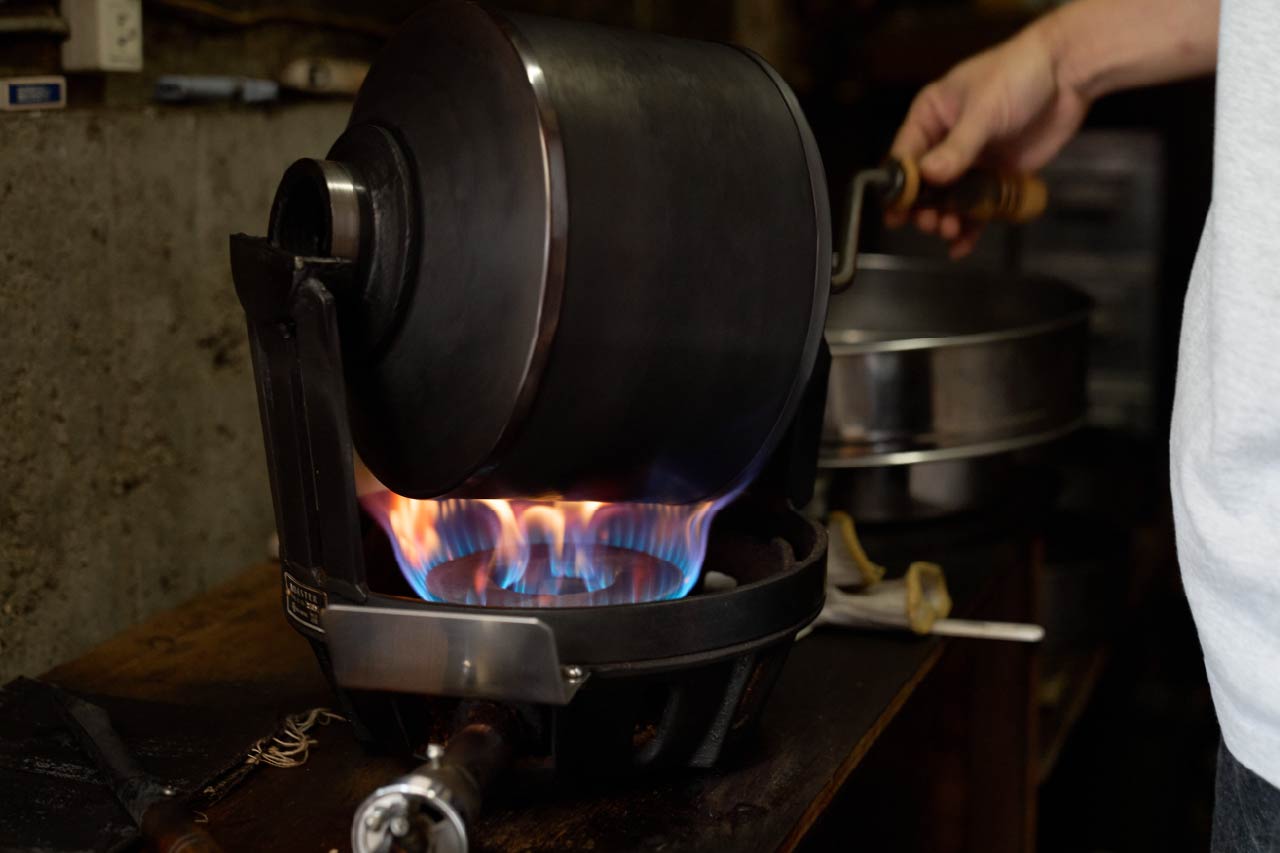
This roaster was inspired by the style of Oobou Katsuji, the owner of the now-closed Oobou Coffee Shop in Aoyama, Tokyo. (Oobou Coffee Shop closed in 2013.)
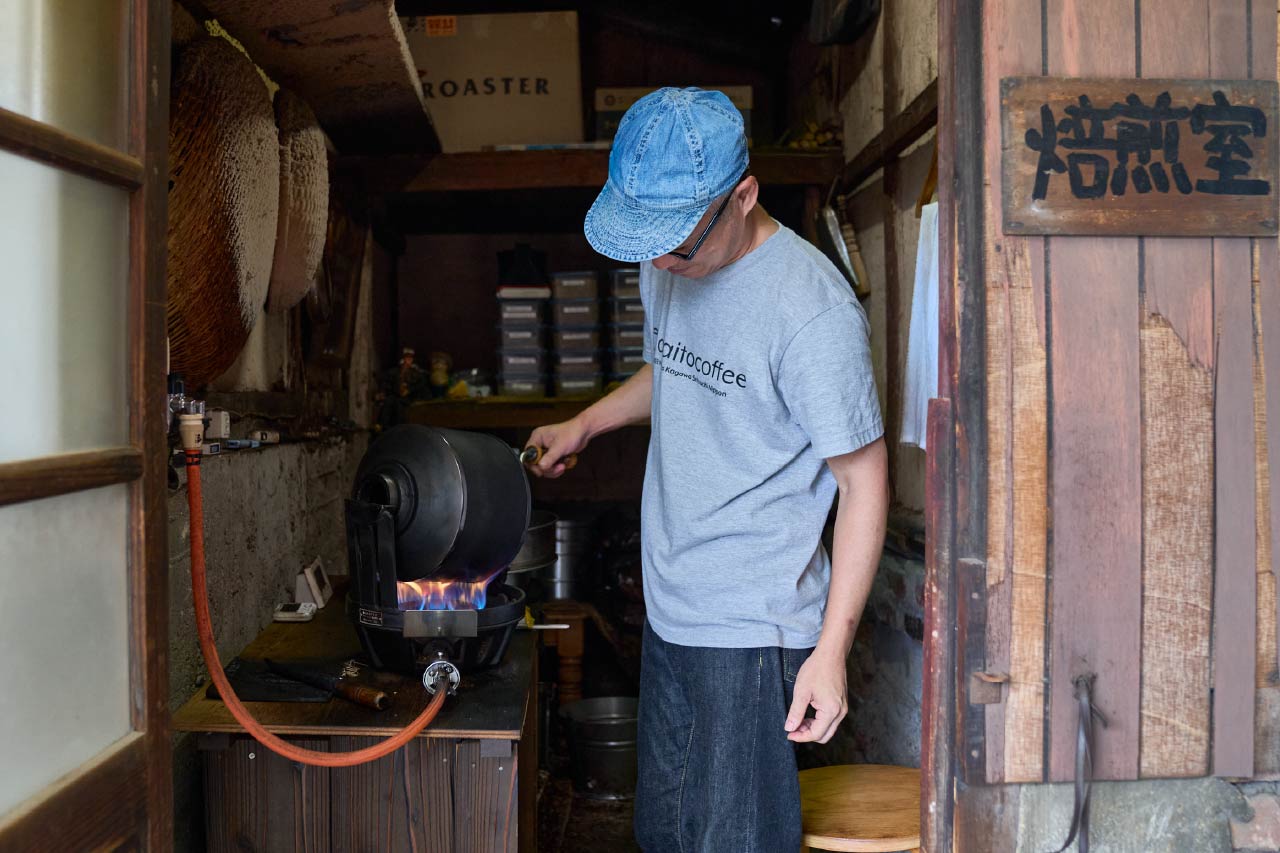
Okuyama taught himself the art of roasting through trial and error. “Even beans from the same country taste different depending on the farm. Even when roasting deeply, the way you apply heat varies depending on the beans. Those changes are part of what makes it fun.”
Akaito Coffee was founded in 2017 by Naoshima native, Naohisa Okuyama.
To an outsider, the story might sound simple – someone from the island opening a cozy café in the heart of an art-filled tourist destination. It sounds like the perfect match. But when we asked Okuyama about his thoughts before opening, his answer was far from what we expected.
“I felt a bit embarrassed about naming the blend ‘Naoshima.’ For me, it’s my hometown, so my perception of Naoshima might differ from how people outside the island see it. Naming it ‘Naoshima’… well, it’s Naoshima, after all (laughs).”
It’s hard to picture now, with Naoshima enjoying fame as a world-class art destination, but back then Okuyama viewed the changes with quiet skepticism. As museums and guesthouses began appearing, he found himself wondering, “Will this really continue?”
“Even when I was a child living there, there had always been talk of turning Naoshima into a tourist island, but it never materialized. So even when various facilities opened, I thought they were just temporary.”
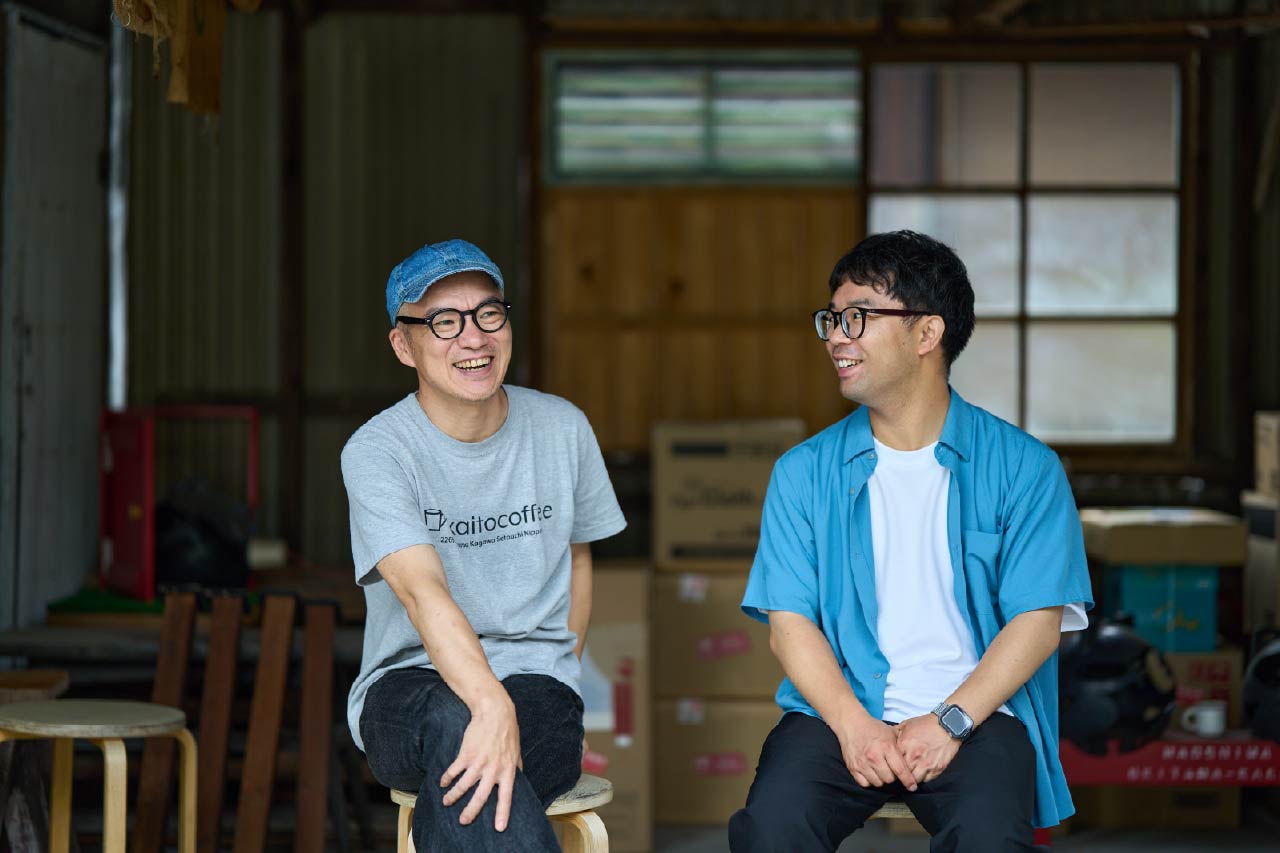
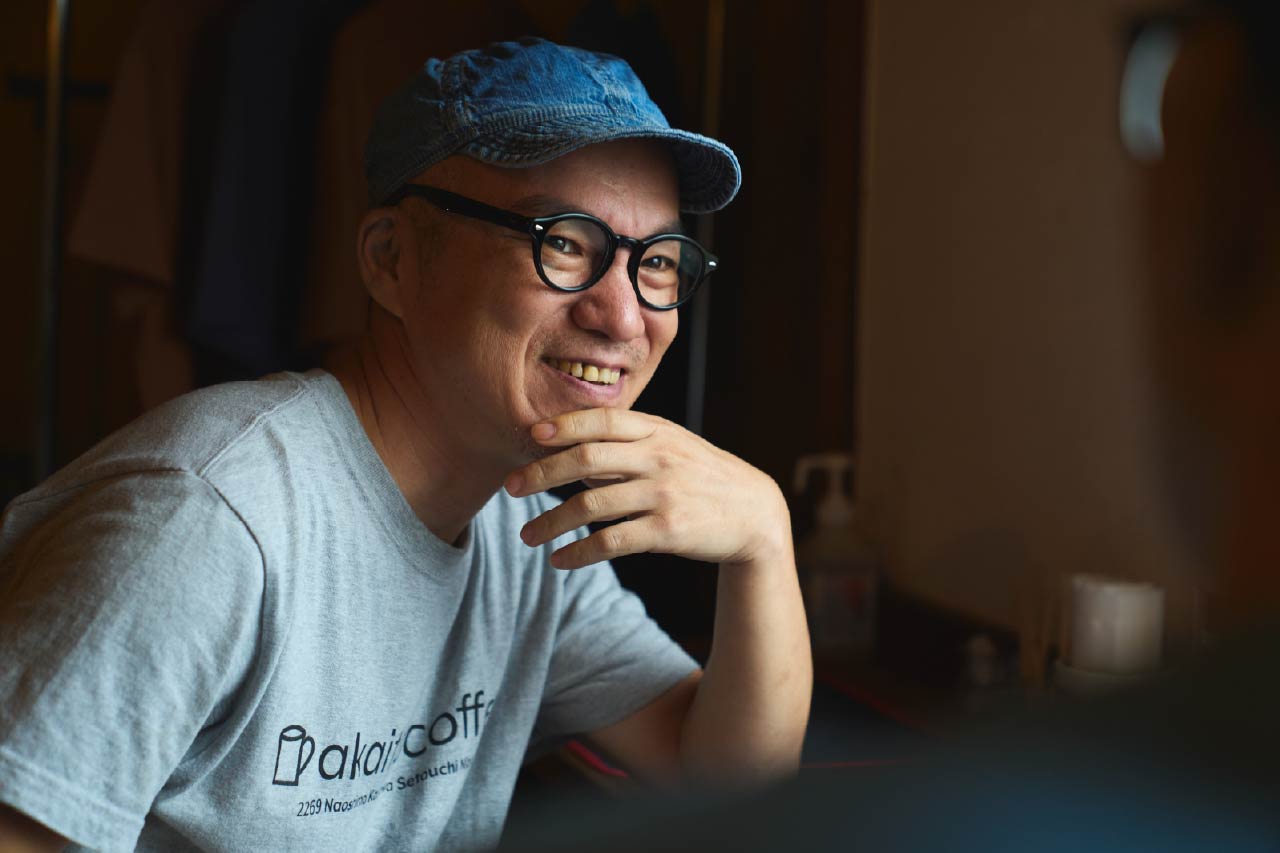
After high school, Okuyama left the island, working in Kurashiki and Kojima. For two decades he lived away from home, never feeling a strong need to return. Yet each visit back revealed subtle but undeniable changes – lines of cars at the port, ferries packed with visitors, and an atmosphere buzzing with energy.
The real turning point came in 2016, during the third Setouchi International Art Festival. “There were a lot more jobs on the island, and even my father, who was over 80, was working as a security guard at the museum, and my neighbors were working at cafes. If things had stayed the same as before, I think there would have been fewer opportunities for older people to be active. But now, everyone is vibrant and full of life.”
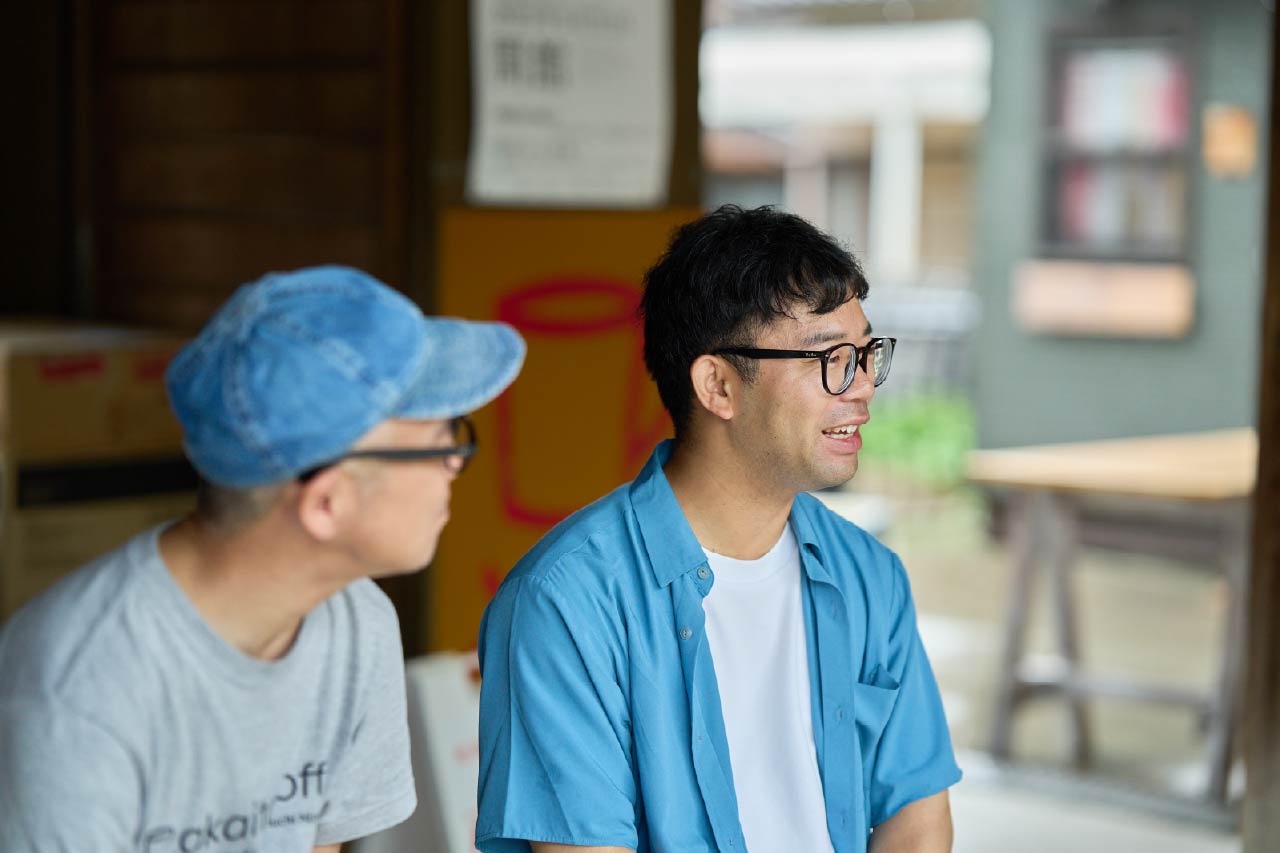
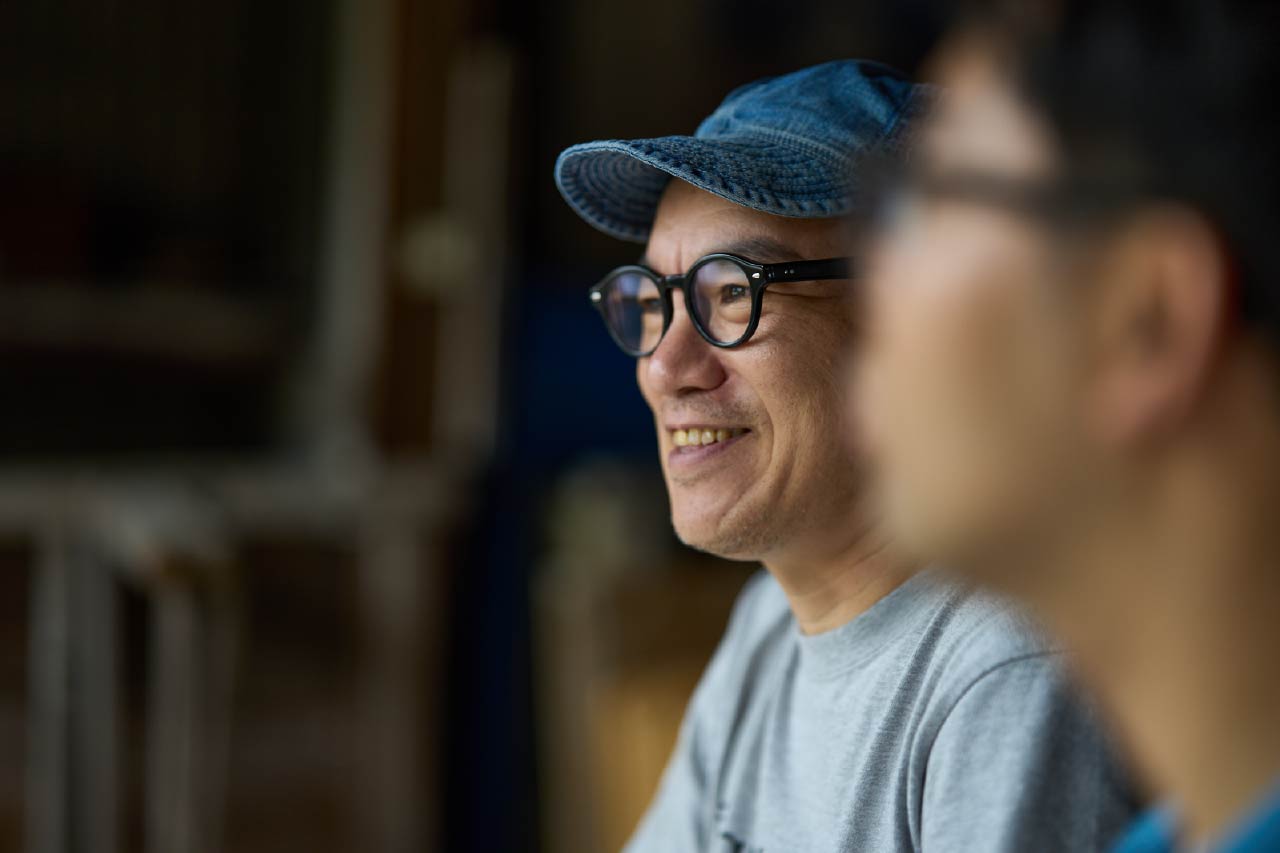
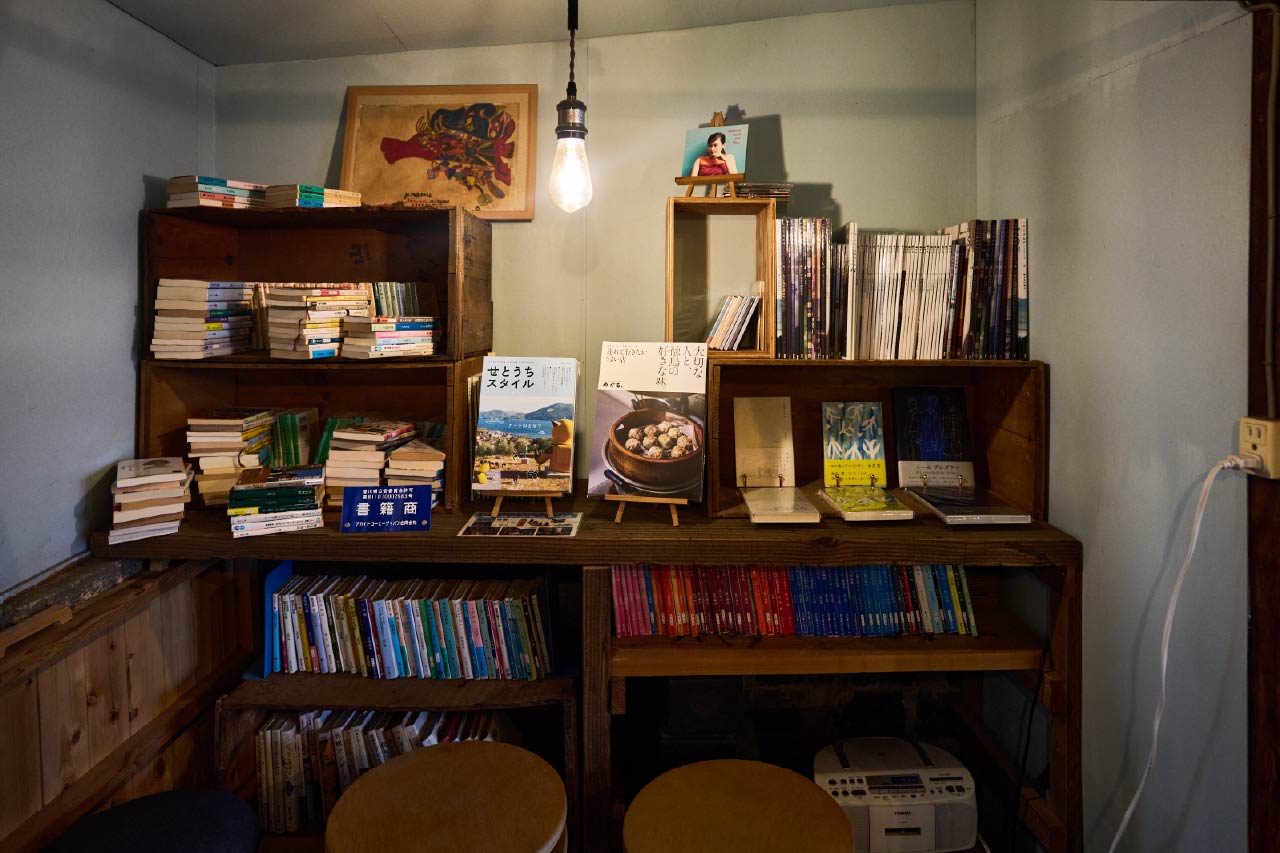
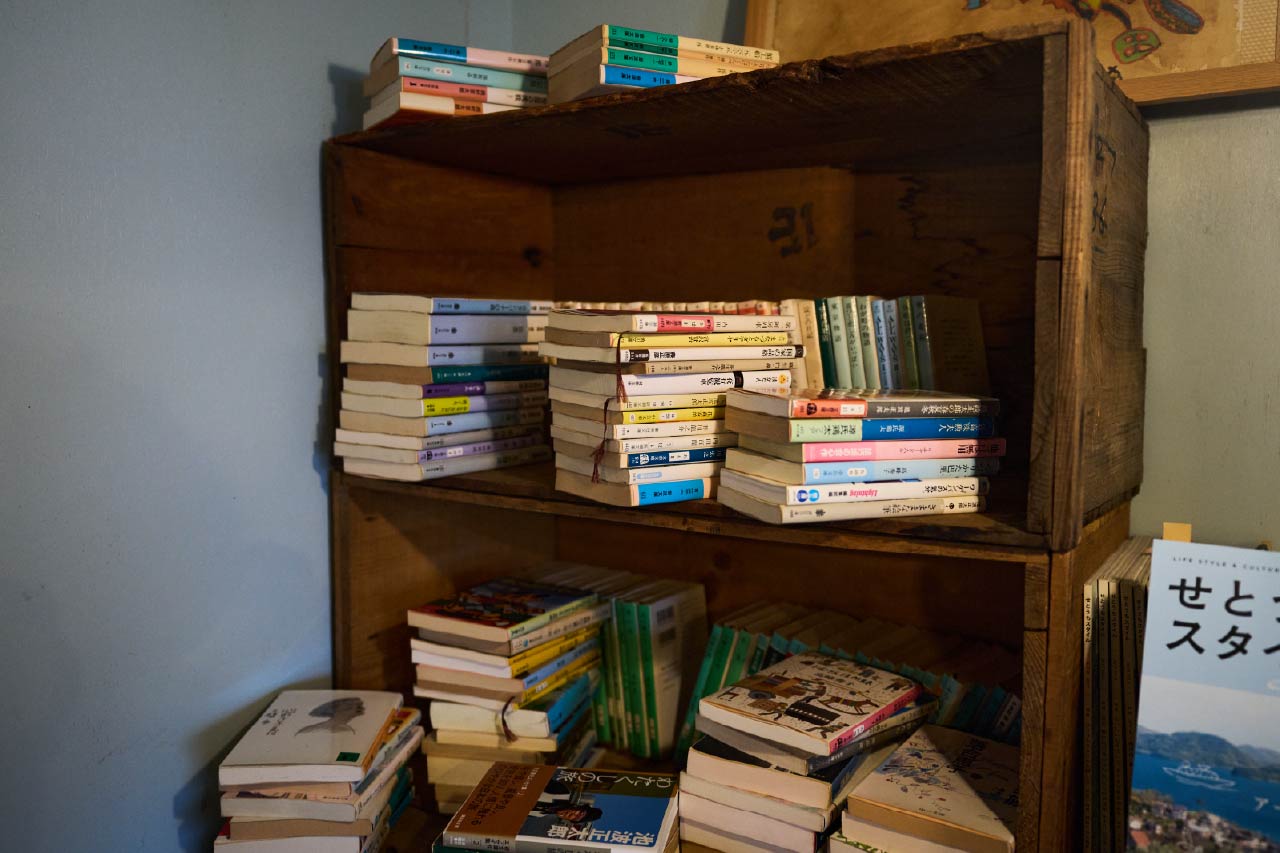
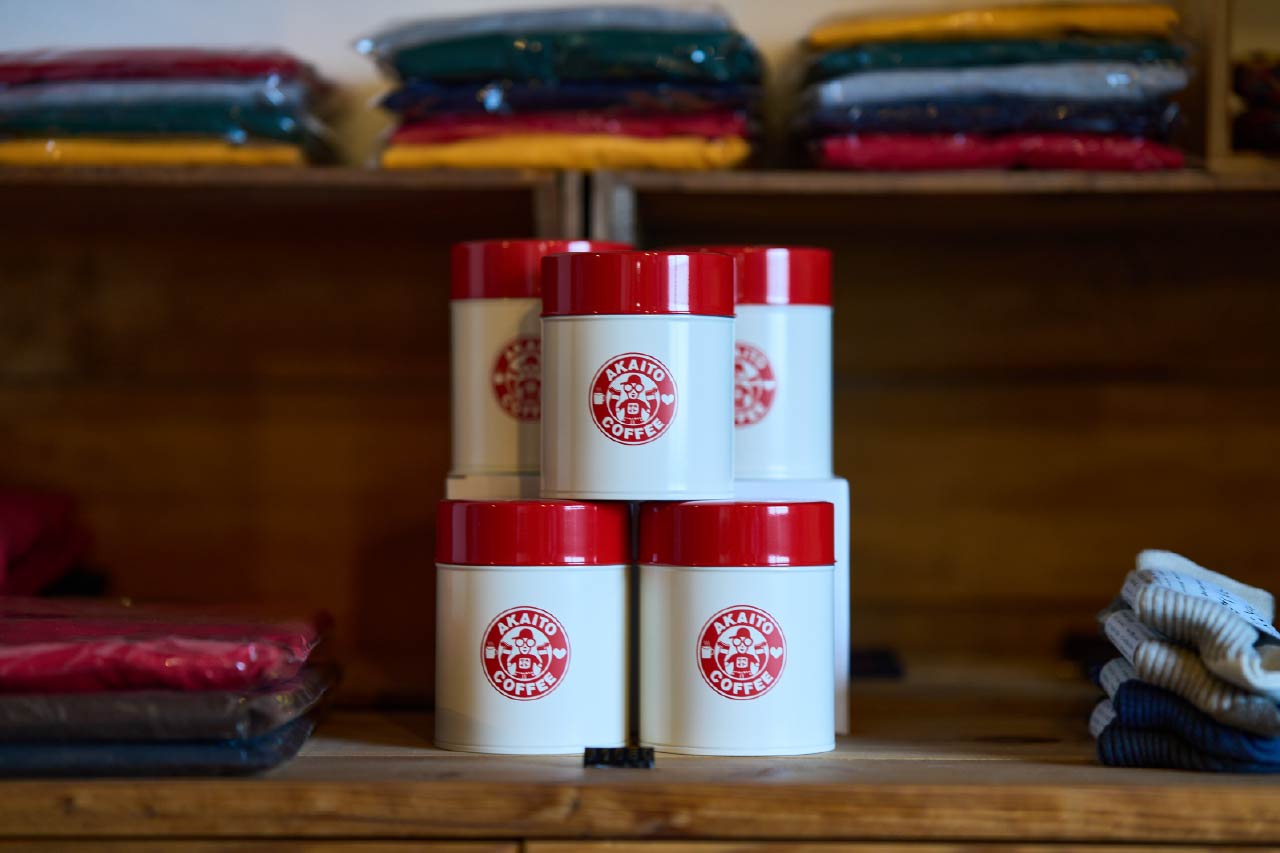
“By the way, the student who is currently working part-time here happens to be from the same place in Shimane as Mr. Katsube.”
“We talk more about life than about the store, discussing career paths and thinking about the future together.
Personally, my dream of owning a store has come true, so in a way, I feel like I’ve reached a milestone. I hope the younger generation can live more easily and lead fulfilling lives.
Of course, it’s important to run the business properly, but more than that, I want this place to be where connections between people grow.
And I want it to be a place where the young people working here can always come back to. Continuing this store and connecting the time is my role.”
Inside, the shop reflects Okuyama’s love of books, with shelves lined with his recommended paperbacks and magazines, as well as original goods made with care. On the day we visited, the soft light of a cloudy sky and a gentle drizzle outside gave the café a cozy atmosphere, making it easy to linger, enjoy a cup of coffee, and really get a sense of Okuyama’s warm personality and heartfelt vision for the future.
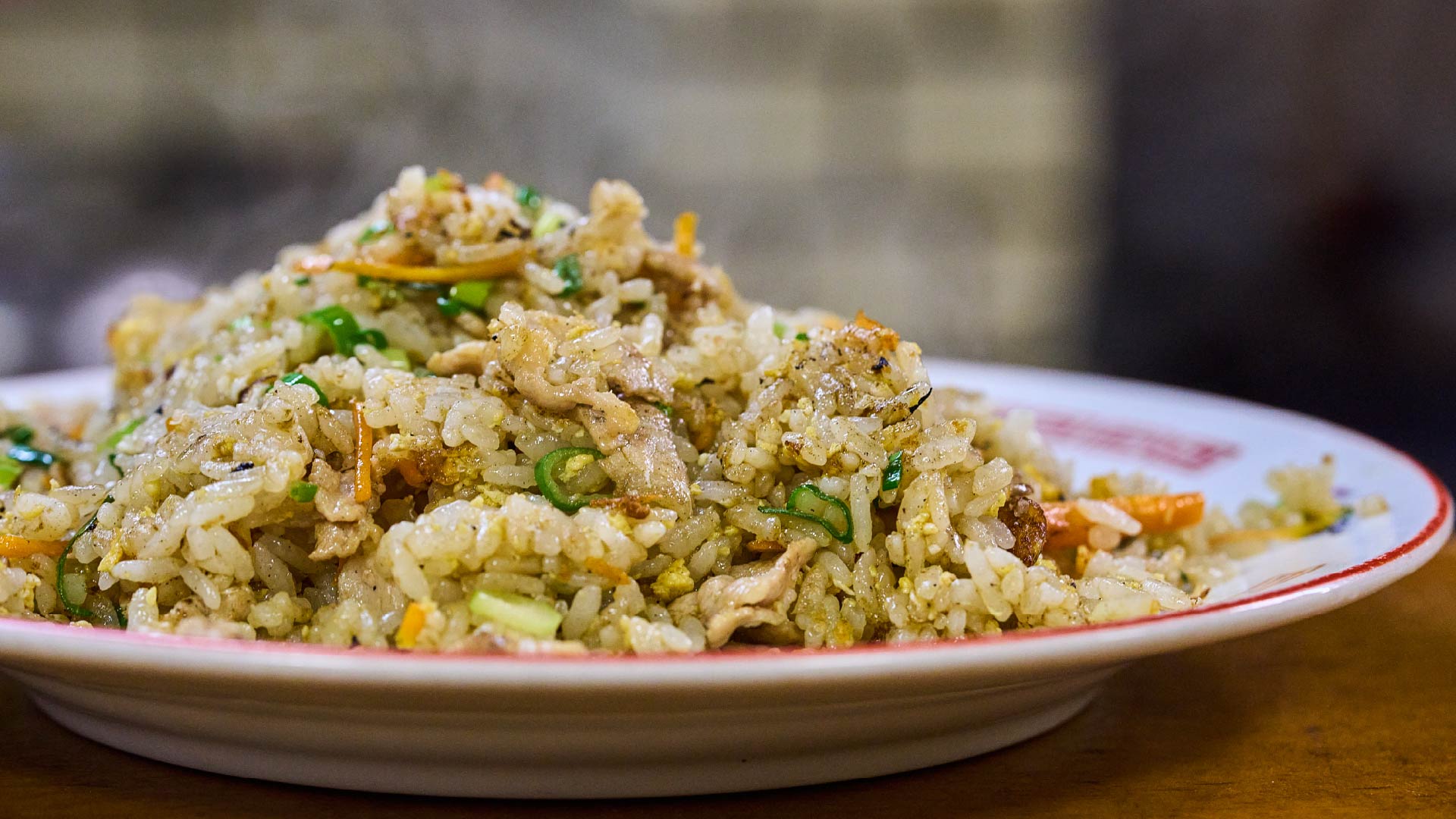
Unchanging taste and familiar smiles
A dining table that has been a part of the shopping district for years
Naoshima/Uno Port Course
Asahiken
The final stop on our journey was Asahi-ken, a beloved diner tucked away in the nostalgic Hokan-cho Shopping District in Kita Ward, Okayama City. Just a five-minute stroll from the west exit of Okayama Station, Hokan-cho is a charming retro arcade where the warm echoes of the Showa era mingle with a fresh, modern energy. In recent years, new shops have joined the mix, creating a delightful blend of old and new that draws visitors of all ages.
Further down the arcade, Asahi-ken has been a fixture since the early Showa era. With its humble exterior, marked by a welcoming red lantern, this cozy diner has been loved by locals for generations. The inviting glow and gentle hum of conversation promise good food and good company even before you step inside.
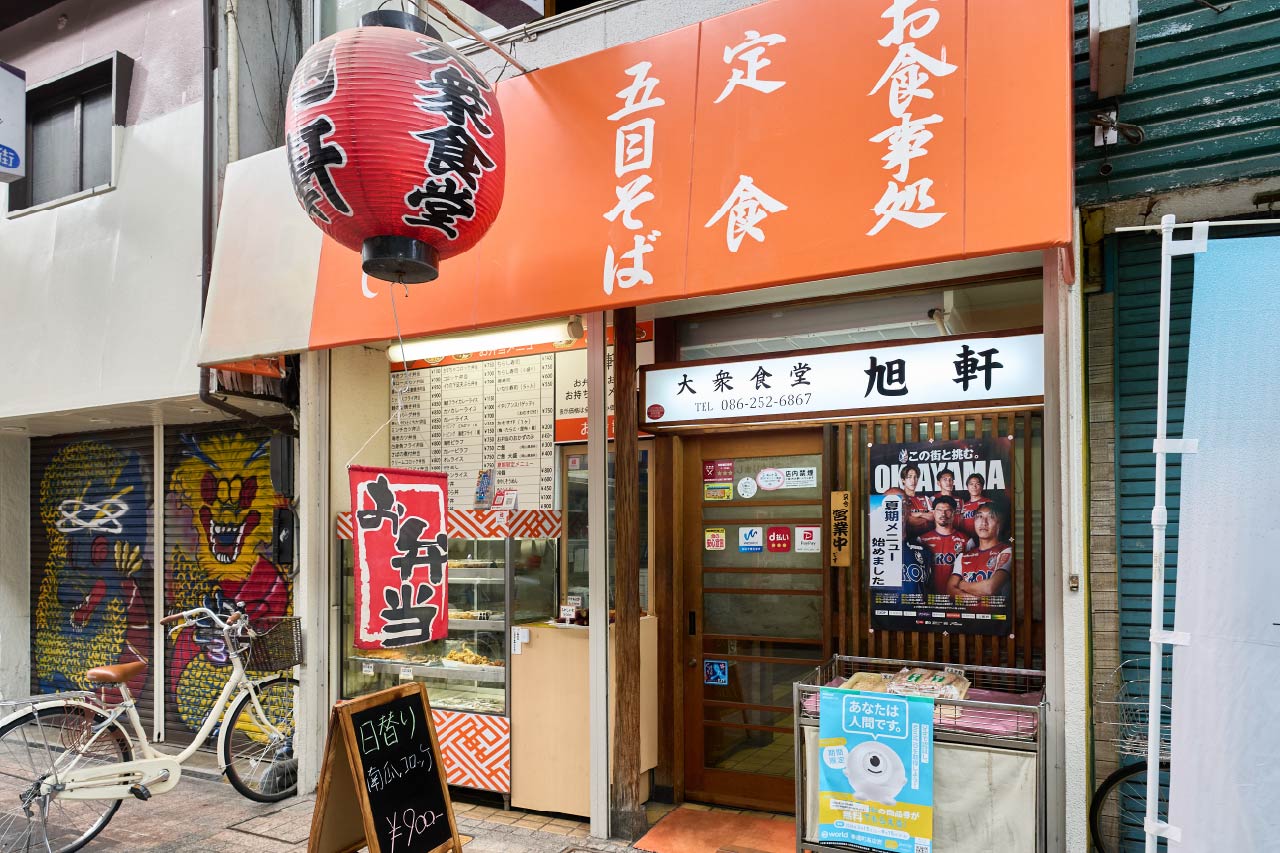
Look for the red lantern – that’s Asahiken, already tempting you with its delicious atmosphere from the outside.
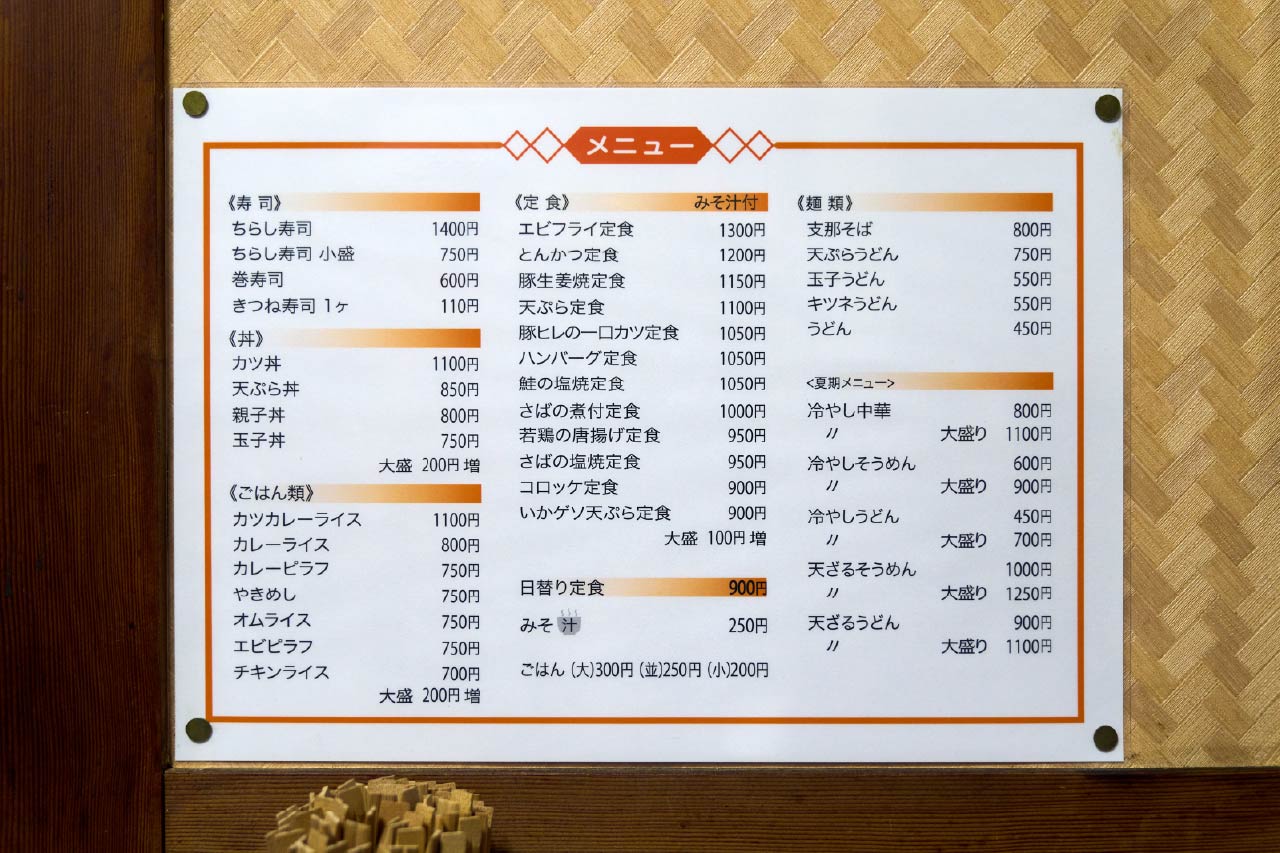
Faced with a menu brimming with tempting choices, I decided on a classic pairing: Chinese noodles and fried rice.
In no time, the rhythmic sounds of cooking filled the air, followed by the irresistible aroma coming from the kitchen and steaming plate after being served.
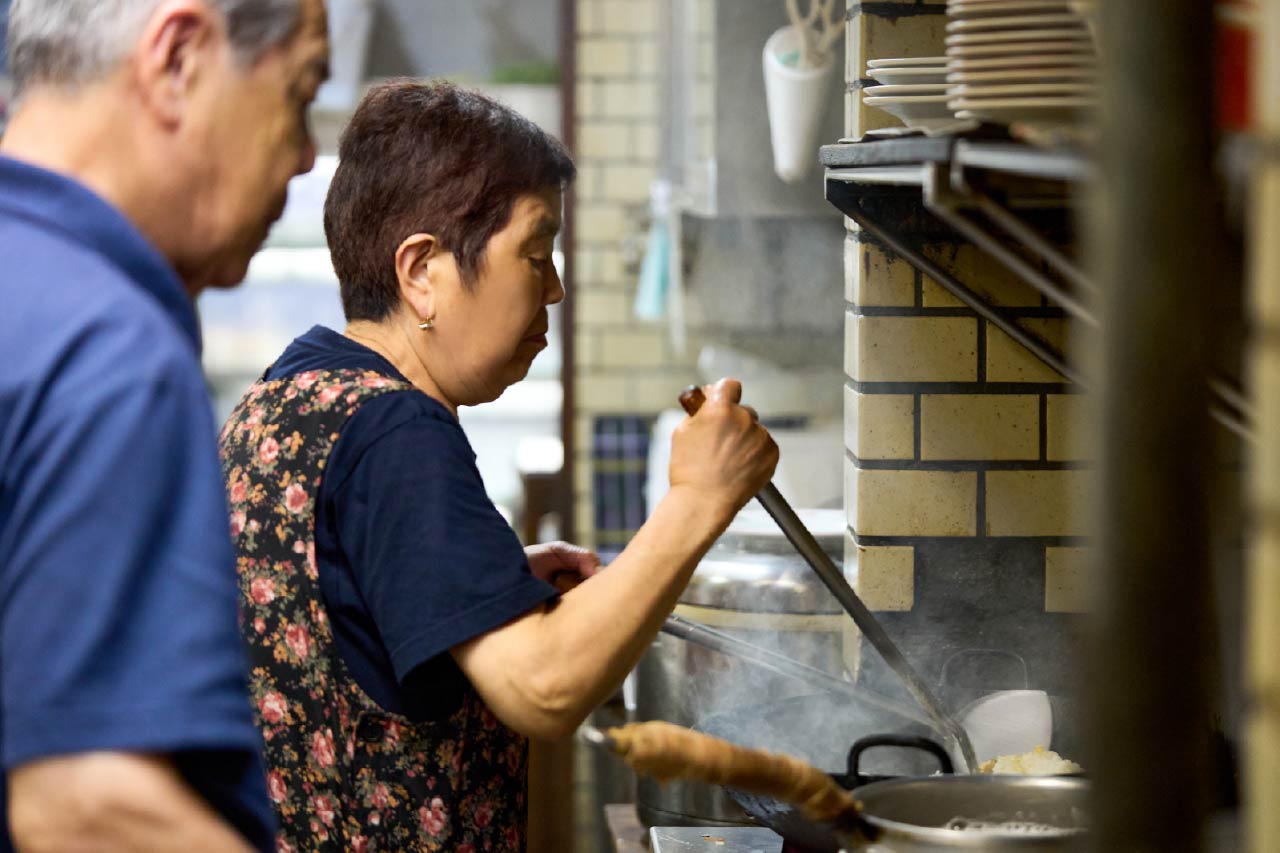
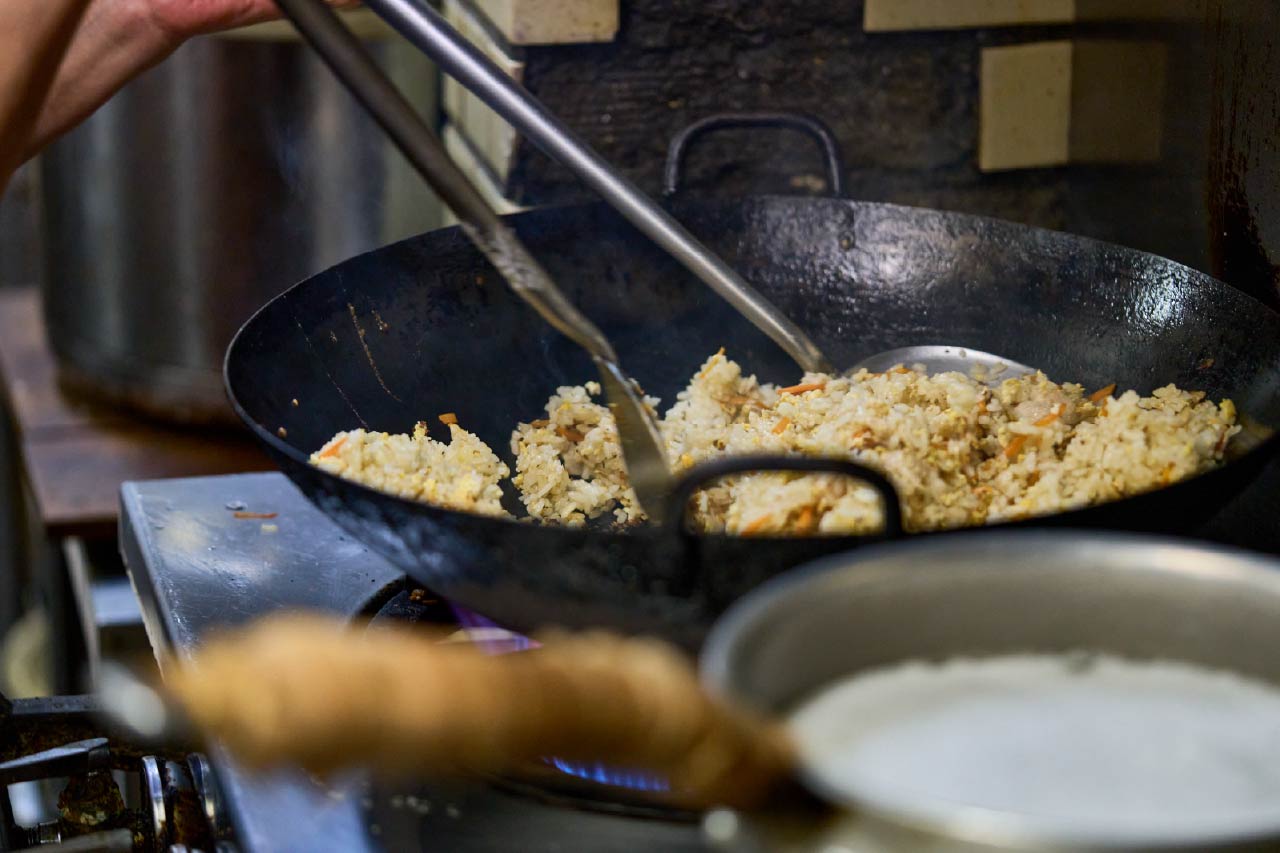
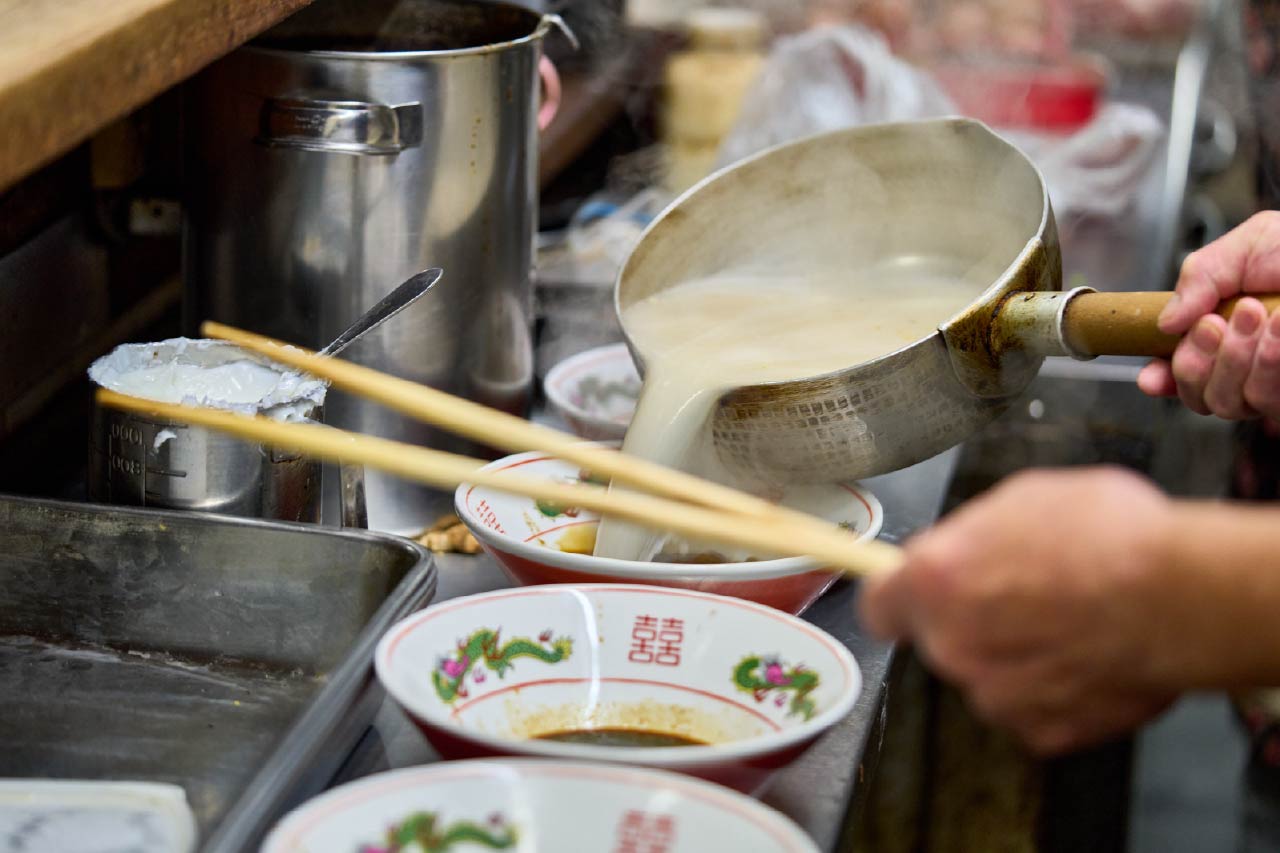
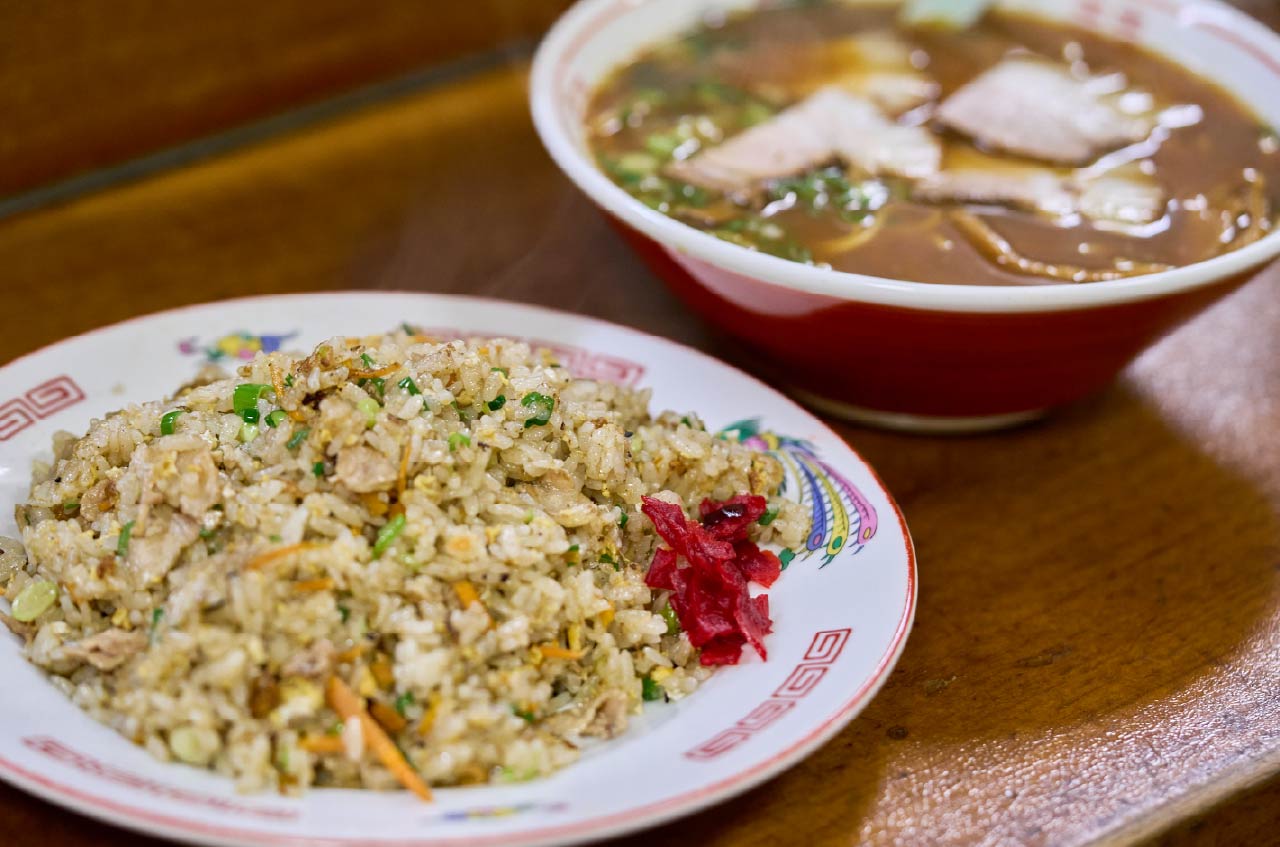
“The fried rice had a truly gentle flavor, and it paired perfectly with the ramen,” said Mr. Katsube.

Another standout is their omelet rice – a hearty, satisfying dish that keeps regulars coming back for more.
Behind the counter, you’ll find Ms. Katsuko Unemoto, the heart and soul of the diner, alongside Mr. Yasunobu Shoda, who has worked beside her for over 30 years. Their bond is more like family than colleagues, and it’s clear in the effortless teamwork and warm atmosphere they create.
Many customers stop by not just for the food, but for Ms. Unemoto’s radiant smile-a smile that has been brightening this shopping street for decades.
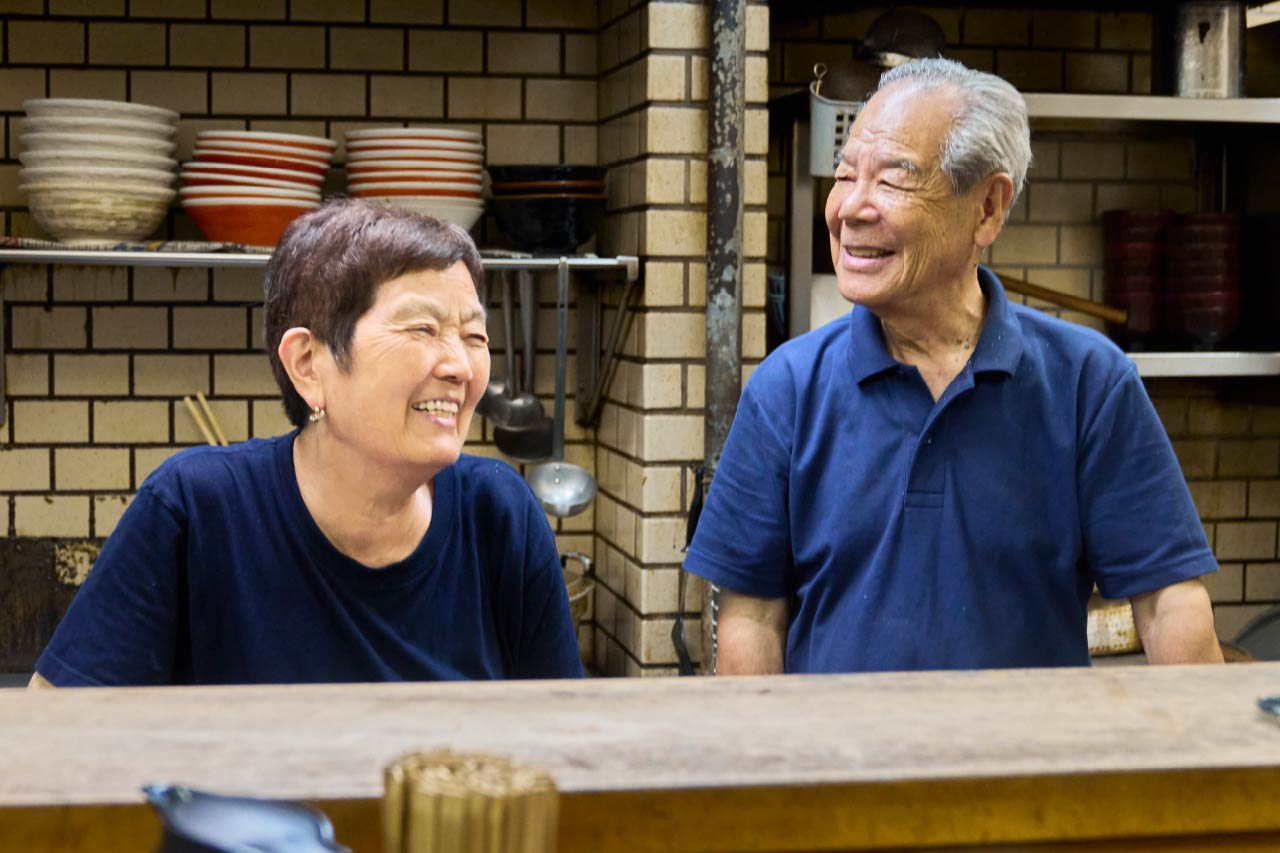
Katsuko Unemoto (left) and Yasunobu Shodai (right)
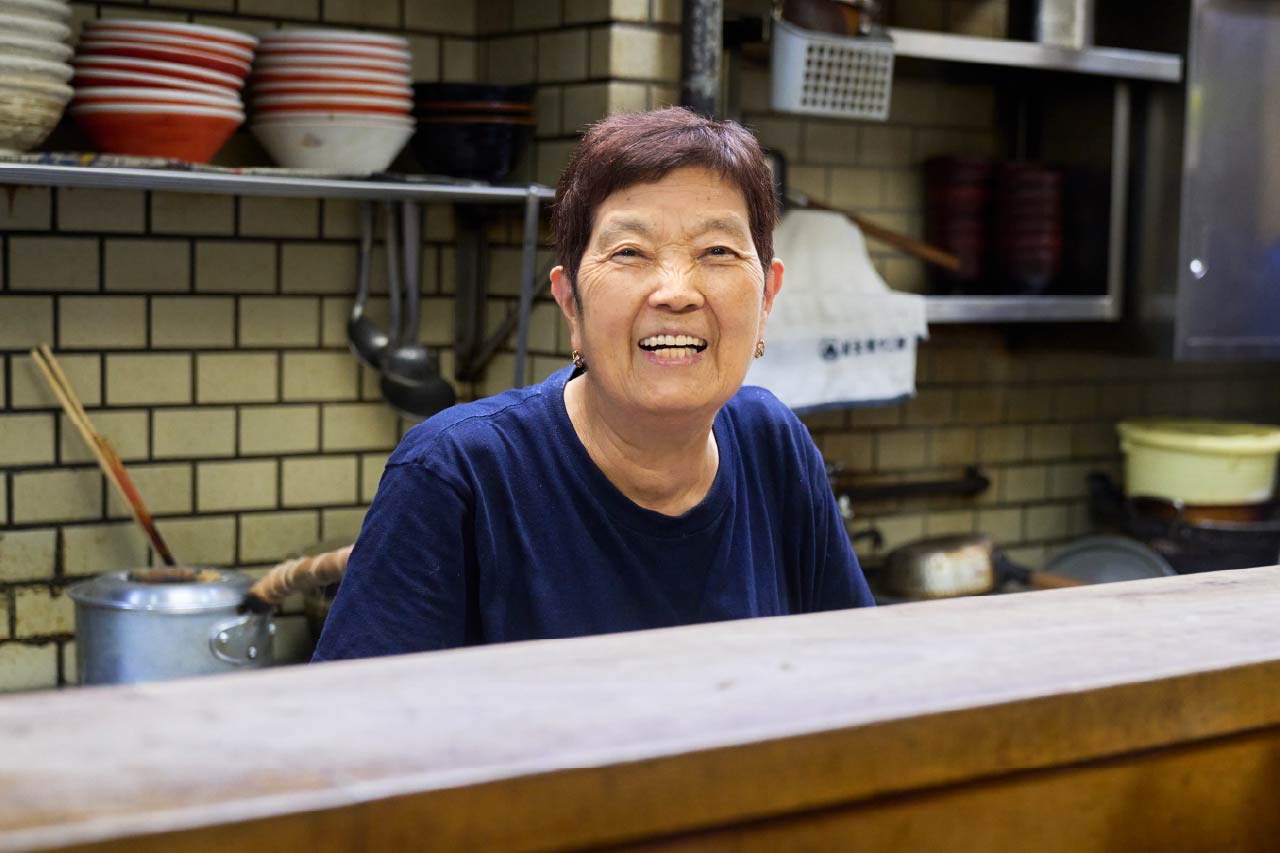
Many visitors drop by just to be welcomed by Ms. Unemoto’s warm smile.
“What kind of customers do you get?” asked Mr. Katsube.
“We have a lot of regulars. Tourists don’t come here much, but people who work in the area often stop by. Single employees also come to buy dinner for the day.”
At Asahi-ken, you can either enjoy your meal in the cozy dining space or take home a selection of handmade side dishes and sushi, lovingly prepared each day.
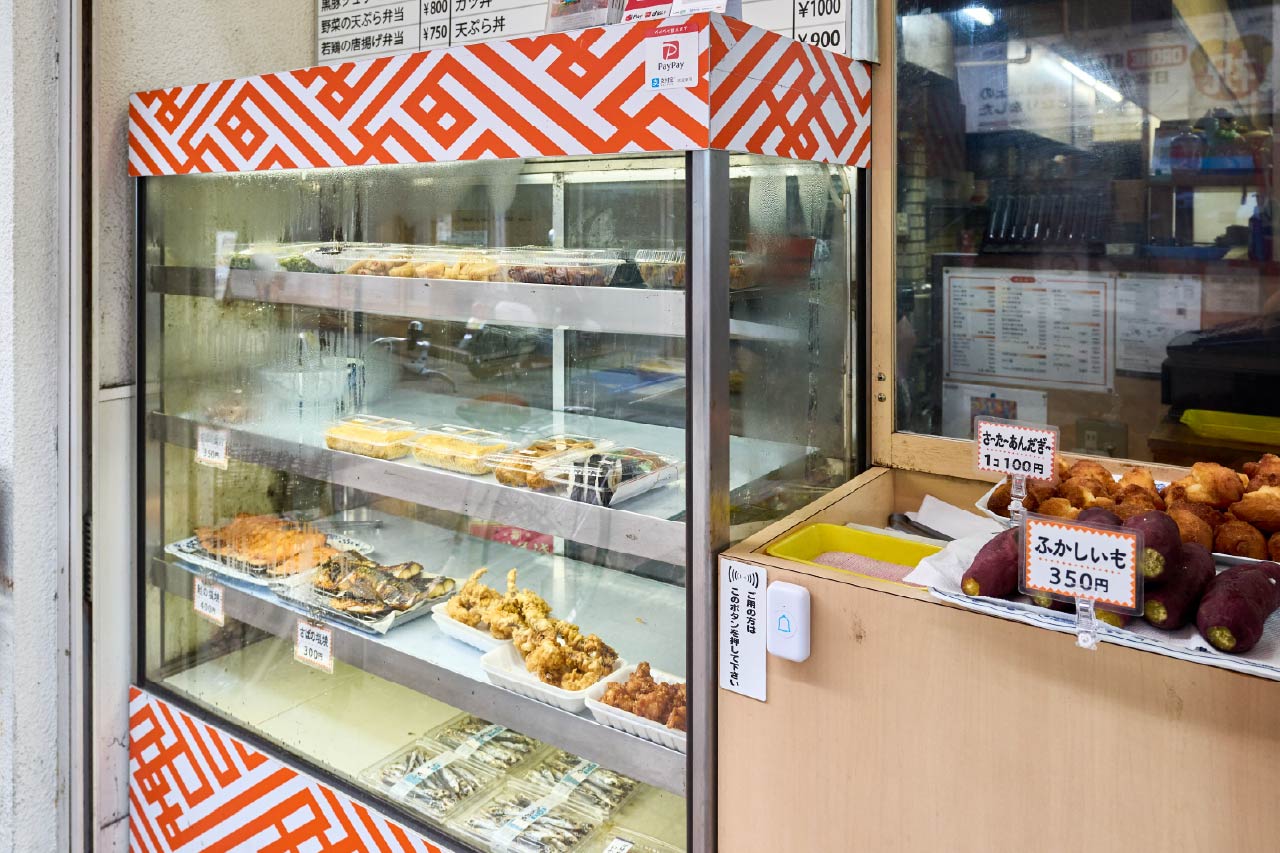
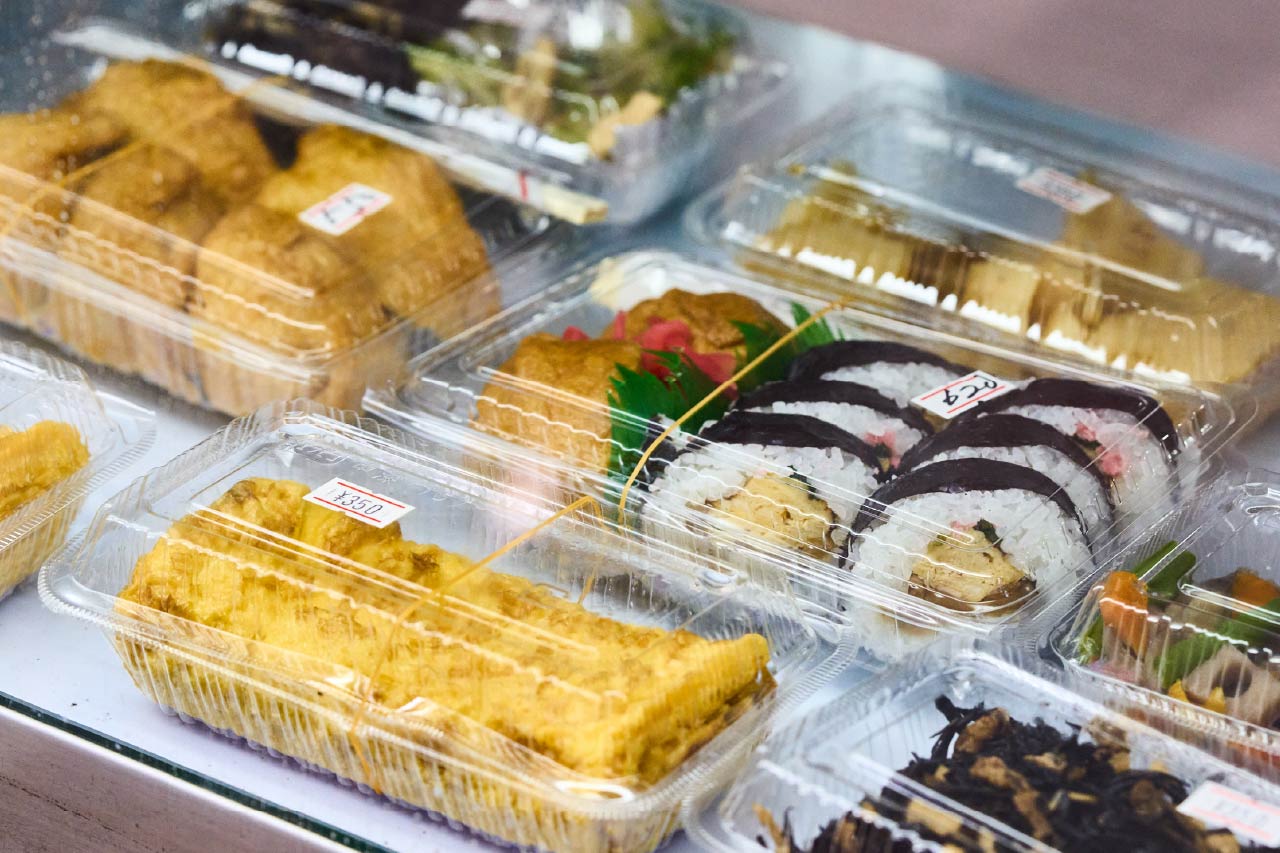
Every July, the Hokancho Shopping Street comes alive with the “Hokancho Shopping Street Saturday Night Market.” During this event, each shop sets up its own stall, offering food, games, and goods in its own unique style. “Since the store staff and customers know each other well, even children can enjoy themselves safely. They come to Asahi-ken with their pocket money and enjoy shopping happily,” she explained.
One of the diner’s most beloved dishes is the chirashi sushi, which has been a favorite since Asahi-ken first opened. “It has a comforting taste reminiscent of something your parents used to make. All the ingredients are cooked and seasoned, so some people say it tastes even better the next day. There’s a customer who eats it almost every day, and when I asked, ‘Don’t you get tired of it?’ he replied, ‘It’s much better than buying cheap side dishes’ (laughs).’
“The store has been around for over 90 years, and I’ve been here for 65 years. People who have moved out of the prefecture come by to eat when they return home, and those who haven’t been here in a while say, ‘Do you remember me?’ Students also say, ‘I’m leaving with your energy.’ I think the store keeps me going.”
“I’ll come again!” After leaving the store, I walked through the sparsely populated shopping district to Okayama Station.
I asked Mr. Katsube about this trip. “The excitement of walking through the alleys of the island, the scenery of the islands viewed from the boat, and the pleasant breeze – all of it felt so unconventional and fresh. Even the short travel time made me feel like I was on a journey.
It was also nice to hear various stories from people along the way. Traveling is, of course, fun when you go to a destination, explore the area, see something, or eat something. But meeting various people along the way and wanting to visit them again is also one way to experience travel. Next time, I’d like to stay overnight on Naoshima and take my time exploring.”
(July 2025)
関連記事

